Pienza Tourist Information
What to see and do in pienza in the val d'orcia - a visitors' guide.

The principal piazza of Pienza - Piazza Pio

Piccolomini Gardens at Pienza
At the rear of the palazzo there is an ornate arcaded courtyard and a triple-tiered loggia looking out on the small but beautiful garden. From here there are spectacular views across to the wooded slopes of the Monte Amiata .

More about the gardens of the Palazzo Piccolomini Di più sul giardino del Palazzo Piccolomini
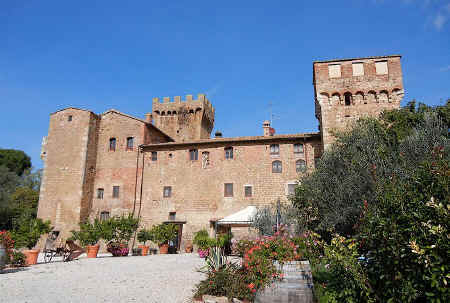
The ancient Castle of Spedaletto rises in the Valdorcia along the road from Bagno Vignoni near San Quirico to Pienza.
Pienza © ammonet InfoTech 2000 - 2020. All rights reserved.
Database development, java programming, website promotion
You are using an outdated browser. Please upgrade your browser to improve your experience.
Fall in love with Tuscany!
Discover Tuscany Newsletter
Ask the Tuscany Experts on our Forum
- Book your Hotel
- Rentals by Owners
- Museums & Tours
Get the lowest rate for your Hotel in Tuscany through Booking.com
Get the best deal direct from the owners on TuscanyAccommodation.com
Book your unique Tuscan Experience
Book your Tour
Book your Tickets ahead & Skip the line!
Buy Museum Tickets
- Destinations
- Val d'Orcia
- Visiting Pienza
Plan your visit to Pienza
The Perfect Mix of Architecture, Food & Tradition built to represent a "Utopian City"
Pienza is a tiny village in southern Tuscany in the beautiful valley called Val d'Orcia we highly recommend you visit. The village is located about 20 kilometers east of Montalcino and a few kilometers to the west of Montepulciano amidst gentle undulating hills and wonderful natural landscapes. Pienza enjoys a strategic position standing high atop a hill, dominating all the Orcia Valley with extraordinary views.
This charming village is widely known as the "ideal city of the Renaissance" , the creation of the great humanist Enea Silvio Piccolomini who later became Pope Pius II . Piccolomini had the money and influence to transform his birthplace village, the humble Corsignano, into what he considered the Utopian city should be, exemplifying the principles and philosophy of classical times and of the great Italian Renaissance. Thus, Pienza became the realization of a dream!
The project was designed by the architect Bernardo "il Rossellino" under the guidance of the great humanist Leon Battista Alberti . In only 3 years, a group of amazing and harmonious buildings were completed: the Cathedral , the Papal or Piccolomini Palace , the Town Hall , and the lovely central square onto which all of these buildings look upon.
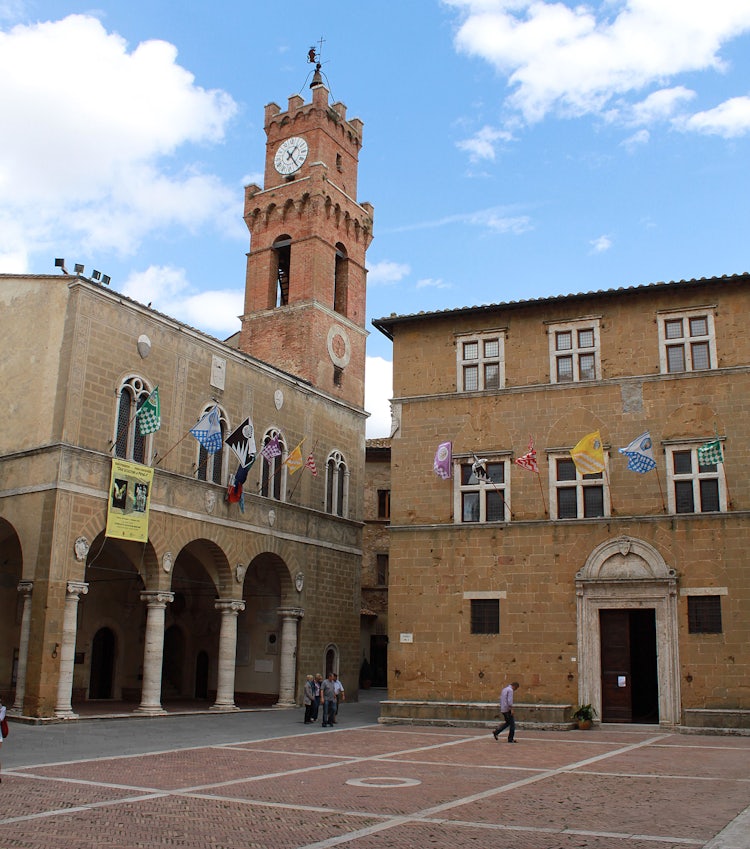
Piazza Pio II has a perfect harmonious shape which gives great dignity and solemnity to all of the surrounding buildings built in bright travertine stone. On one side of the square, you can admire a beautiful well , known as the "well of the dogs".
The Duomo or Cattedrale dell'Assunta hosts very fine paintings by the most renowned artists of the period, while the octagonal bell tower standing over the ancient crypt with the same octagonal shape points to the sky. Both dominate the landscape as you view Pienza from afar. As you walk through the church you will notice the uneven floors, the unsettling cracks making their way across the pavement and little glass plates (like lab slides) glued to the walls. The architects didn't calculate the effect of the weight of the cathedral and its impact on the foundation of the church and now the hillside that it is built on is starting to "give way". The little glass plates are a way of controlling the shifting of the earth and the structure....everything is fine....until one of them cracks!
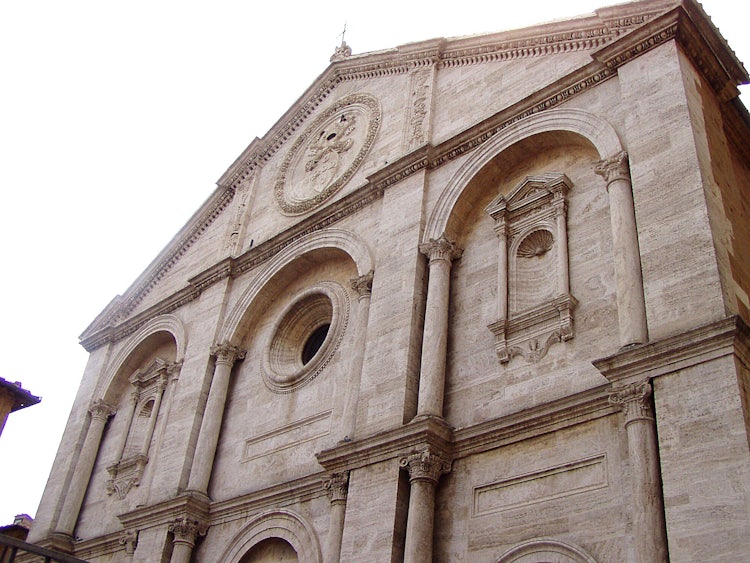
The imposing Palazzo Piccolomini to the right of the Duomo has a fantastic Loggia with a delightful hanging garden from which you can enjoy unique and breathtaking panoramas of the Val d'Orcia Valley, from Montalcino to the Mount Amiata . Palazzo Piccolomini was even used by Franco Zeffirelli for filming some scenes of his famous and romantic movie Romeo and Juliet , in which it represented the location of the first encounter between the two lovers at the Capulets' home.
The impression one gets, walking through the narrow streets of Pienza, is that of an extremely perfect and proportioned ensemble; somewhat as if you were admiring a Renaissance city depicted in a wonderful painting.
Pieve di Corsignano
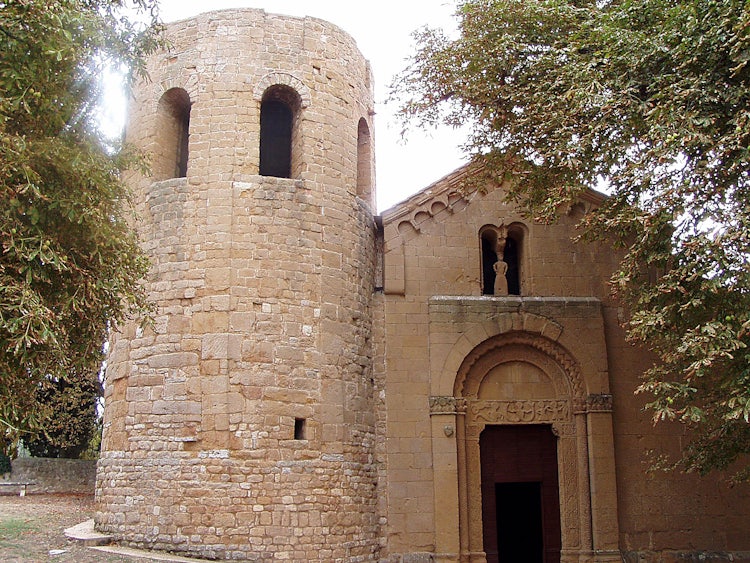
While you're in Pienza, follow the signs and take the short walk down the side of the hill Pienza is located on to arrive to the Pieve di Corsignano. The Romanesque church with three naves has its ancient origins in the 7th century but the present Romanesque style is from the 12th century. While the church is relatively empty, each nave has an altar and to right as you enter, you can see the original baptismal font where both Pope Pius II and his nephew Pope Pius III were baptized.
Head to the last column on the left and take a look at the column's capital: you'll find a carving of a regolo serpent! It is one of the few representations of the regolo serpent that has survived in its original form to our present day. A Roman deity, the regolo serpent was still known when the church was built in the 7th century and was not necessarily evil, even if Saint Gregory the Great defined him as the "king of the serpents".
Pecorino di Pienza
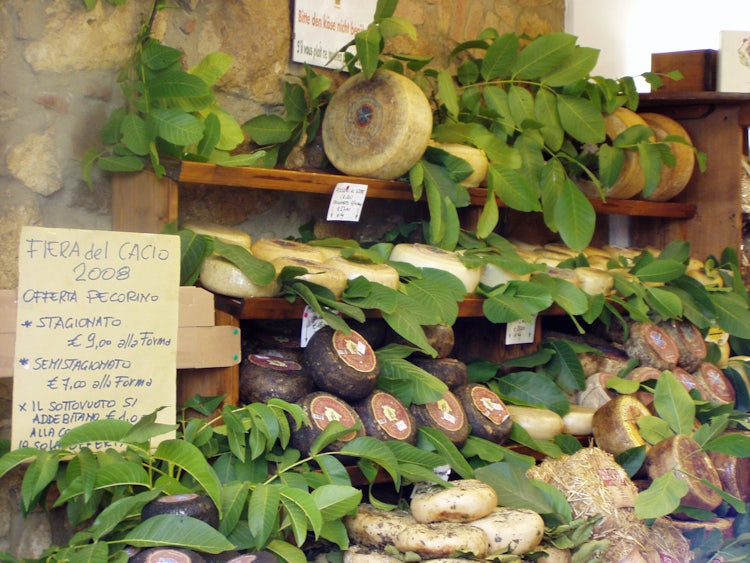
Pienza is also the city of cacio, which means cheese! The Pecorino of Pienza is a tasty cheese made from sheep's milk, renowned worldwide and delicious, which can go from a delicate flavor to a decisive one based on how aged it is.
The town streets are full of small charming shops selling a large quantity of various types of pecorino, from fresh to aged pecorico, that you can taste together with a number of other typical local products , such as fine wines, spices, pici (handmade pasta) and so on. We recommend stopping and tasting! Best of both worlds is mixing the pici with the cheese in the famous dish: pici con cacio e pepe.

After a little bit of shopping, we suggest you try one of the fantastic restaurants or typical osterie serving really exquisite local food. One we've tried many times and highly recommend is the Osteria Baccus (located on the main street, Via del Casello): here you can taste savory dishes where the pecorino is prepared in countless original ways. Definitely try the Fondue of Mixed Sheep Cheeses, the Bruschetta della "sciorna", and the Pici with Cacio and Pepe.
The Fiera del Cacio
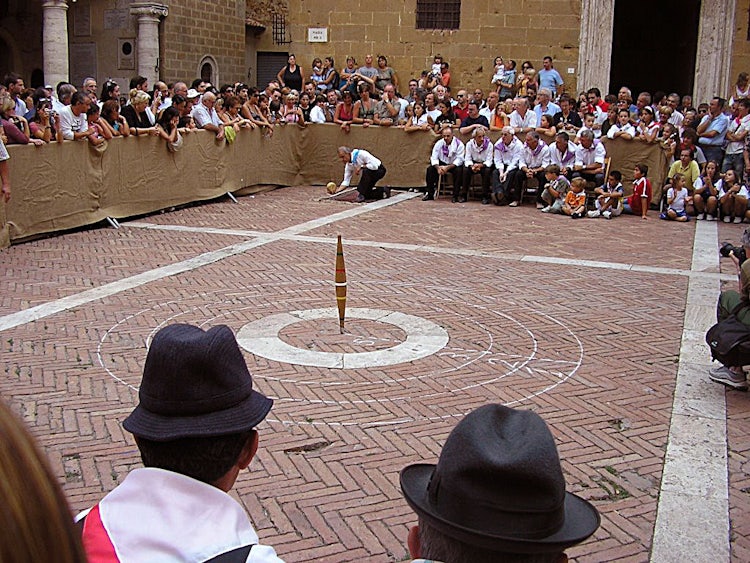
If you happen to come to Pienza in early September , don't miss the famous Fiera del Cacio , a great festival dedicated to pecorino cheese and other traditional products, which are offered all throughout the main weekend of the festival. During the festival, you can also enjoy a folkloric and amusing game of ancient origins called the Palio del Cacio Fuso . In this content, the players of each town district have to roll an entire round of pecorino cheese around the fuso , a wooden spindle located at the center of the square. It looks easier than it really is!
Stay in Pienza
Pienza makes a great central base if you're planning on exploring the Val d'Orcia for a few days. Just a few miles to the west you have Montalcino and San Quirico d'Orcia , while to the east you have Montepulciano . You should also explore the small medieval village of Monticchiello just to the south of Pienza, as well as Bagno Vignoni for its hot springs, Radicofani and its castle and then head a little north toward San Giovanni d'Asso for its truffles in the fall as well as to continue enjoying the magnificent views of the Val d'Orcia and Crete Senesi. Check out and book your accommodation in Pienza HERE .
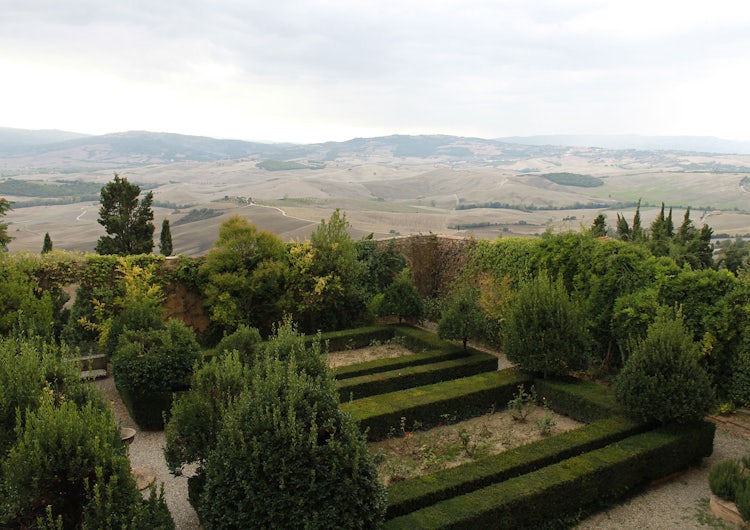
Sweet tastes and unforgettable perfumes will enchant you in Pienza, along with the great views of the Val d'Orcia all around the town. A real paradise for all food lovers and for anyone who wishes to be in a postcard from Tuscany !
Have a look at our photos of Pienza and Val d'Orcia! »
Related Sections
- Montepulciano
- What to Do in Siena
- what to see
- destinations
- val d'orcia
You Might Also Like
A walk through montepulciano, 24 hours in val d'orcia, val d'orcia as your vacation base, san quirico d'orcia, val d’orcia wine itinerary, top experiences in tuscany, photo gallery.
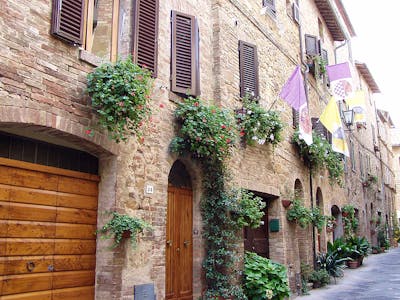
Author: Lourdes Flores
I'm from California but have called Florence my home for over a decade. I love to explore Italy; it is a lot of fun to try to see everything like I'm seeing it for the first time, keeping you, our readers, always in mind. I enjoy sharing what I know and helping others as they make their travel plans for Tuscany through our Forum . If you have itinerary-related questions, please post them there!
You'll love reading about...
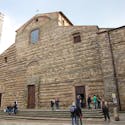
Read our guide of Montepulciano in Tuscany....
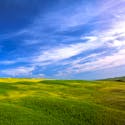
Only have a day to explore the Val d'Orcia area...

Insider’s information on why you should stay in...
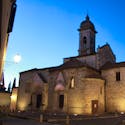
Visit San Quirico d’Orcia, one of the most...

Discover the beautiful medieval city of Montalcino, south of Siena....
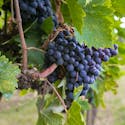
Wine Tasting vineyards in the Val d’Orcia for...
Questions? The right place to ask is our Forum *
* Questions posted on Comments above will no longer receive replies: please ask on our Forum !
Our Travel Guides

Guide To Pienza, Best Things To Do In Tuscany’s Renaissance Town
Here’s my guide to visiting Pienza Italy, a stunning UNESCO-listed town in Tuscany. You’ll find all the top attractions and best things to do in Pienza.
Pienza is located in the gorgeous Val d’Orcia region of central Tuscany , where cypress trees line winding roads and sun-bleached valleys.
Pienza is known as the first “ideal Renaissance town.” It was the brainchild of Enea Silvio Piccolomini, who would later become Pope Pius II.
Piccolomini hired the architect Bernardo Rossellino. Rossellino used the principles of Renaissance town planning set forth by his mentor, Leon Battista Alberti, in his treatise on architecture.
The result?
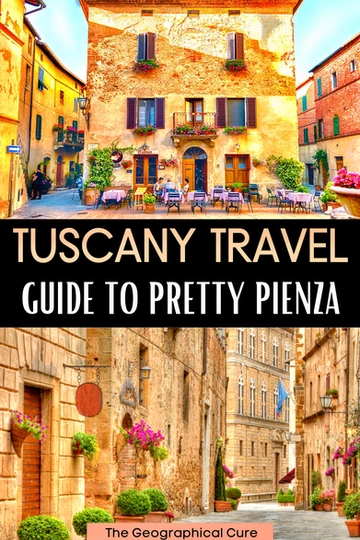
A town that perfectly expressed the Renaissance canons of art and architecture. Pienza is one of Italy’s most beautiful towns with narrow streets, beautiful palaces, churches, and buildings.
Flowers bloom everywhere, completing the picturesque ensemble. The streets even have romantic names like Love Street and Kiss Street.
History of Pienza: The Piccolomini and the Pope
The Piccolomini were an important Tuscan family.
Enea became Pope Pius II in 1458. His nephew became Pope Pius III. The only other Italian family that produced two popes was the Medici.
READ : History of the Medici Dynasty
The Piccolomini were renowned in Siena. They were responsible for the Piccolomini Library in the Siena Cathedral complex .
Pienza began life as a rural farm town. After Enea became pope and with plenty of cash, he decided to transform the village in which he was born, Corsignano.
Piccolomini was considered a humanist pope. He left behind a unique biography. He was interested in the Greco-Roman antiquities. He was a poet and patron of early Renaissance art.
Piccolomini’s greatest historic legacy was the Council of Mantua in 1459. This was his attempt to muster military support for one last crusade to free Constantinople from the Ottomans.
READ : Guide To Mantua
But his greatest artistic legacy was transforming Corsignano into Pienza. He wanted to produce an “ideal Renaissance city.” And he succeeded masterfully, re-naming the town (rather vaingloriously) after himself.
Architects of Pienza
At the time, there was a lot of architectural theory floating around. The most famous treatise was written by Leon Battista Alberti .
Alberti was good friends with Renaissance luminaries — Brunelleschi , Donatello, and Leonardo da Vinci .
READ : Guide To the Paintings of Leonardo da Vinci
Alberti was the architect of the facade of Santa Maria Novella in Florence . Alberti wrote about how building and cities should be build. His aesthetic theories of proportionality and harmony that revitalized classicism.
Pienza was an ideal location for this experiment. Corsignano was small enough that the pope could roll on in there and rebuild.
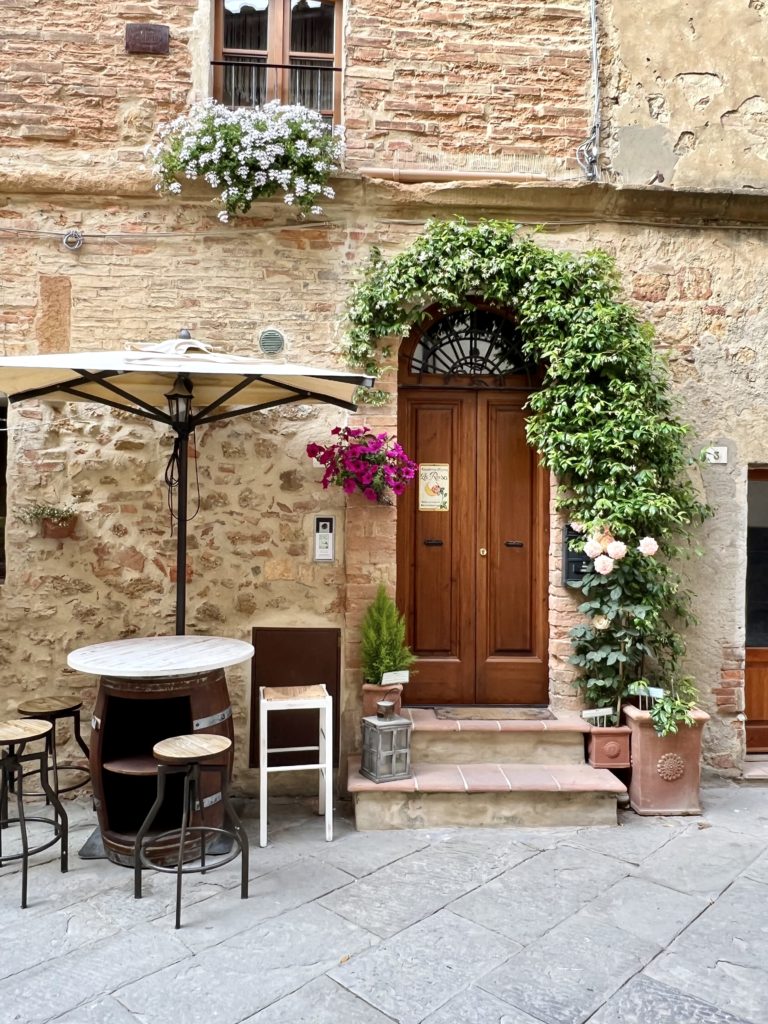
The pope produced a beautiful cluster of buildings in the center of town. Pienza is tantamount to an architectural stage set.
To accomplish this feat, the pope hired Bernardo Rossellino . Rossellino was in Alberti’s inner circle.
Rosselino was the onsite architect. But many consider Alberti the guiding light of the Pienza project.
Rossellino was from Florence. Not much was happening in nearby Siena at that time.
The early Renaissance blossomed in Florence. Though the Florentine were resented by some of the Sienese.
READ : Masterpieces of Florence
Guide To Pienza: What To See And Do
Here are the top attractions and best things to do on a visit to Pienza.
1. Piazza Pio II
Pienza’s main square is the splendid Piazza Pio II. The trapezoidal square is wrapped with Pienza’s most impressive monuments.
There are circles in the pavement where you can stand to have the ideal viewing point of all the monuments.
The space available to Rossellino was limited. To increase the sense of perspective and dignity of the monuments he designed, Rossellino set them off at angles to the cathedral around a magnificently paved piazza.
In the piazza, you’ll also find a travertine cistern or well. This was where the citizens could draw water.
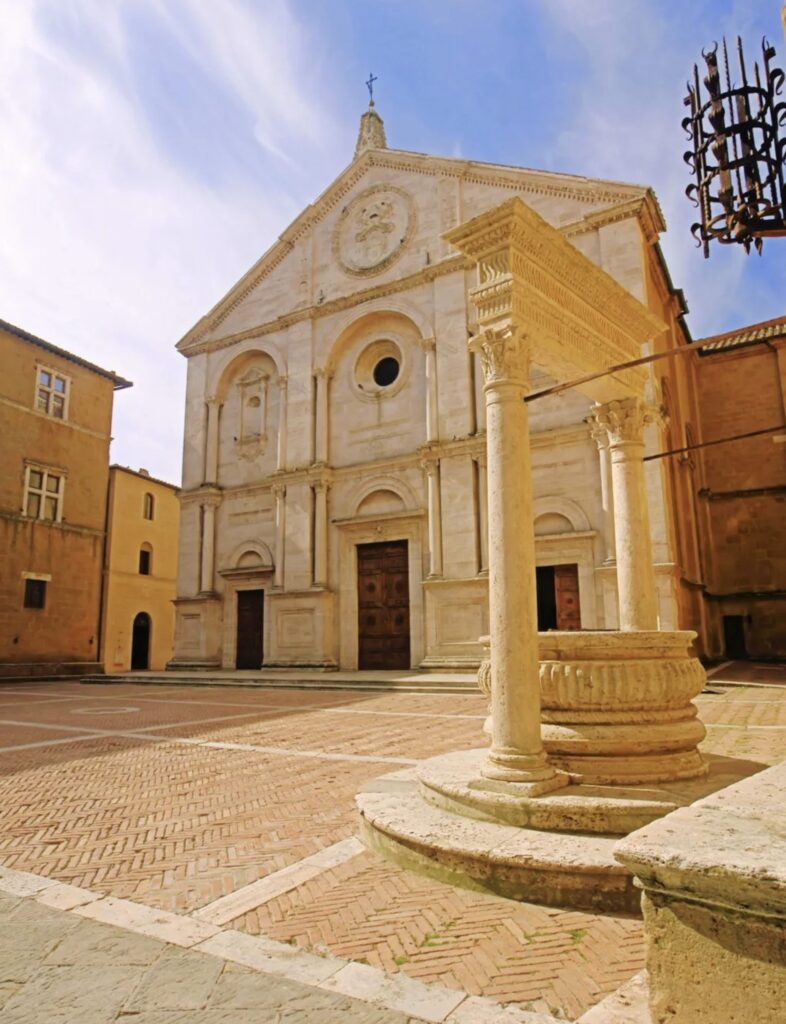
2. Pienza Cathedral
Pienza Cathedral is officially known as the Cathedral of Santa Maria Assunta. It’s perched on a precipice. The back side of the church is slipping off somewhat, and there’s been interventions to save it.
The classically-inspired facade is made from travertine marble. The triple-arched facade recalls ancient Roman triumphal arches.
The round window at the center — dubbed the “Great Eye of the Cyclops” by the pope — matches an identical stone eye in the piazza.
Behind the marble temple facade lies a high vaulted Gothic style church. The church has a basilica plan, which makes it look like a large hall.
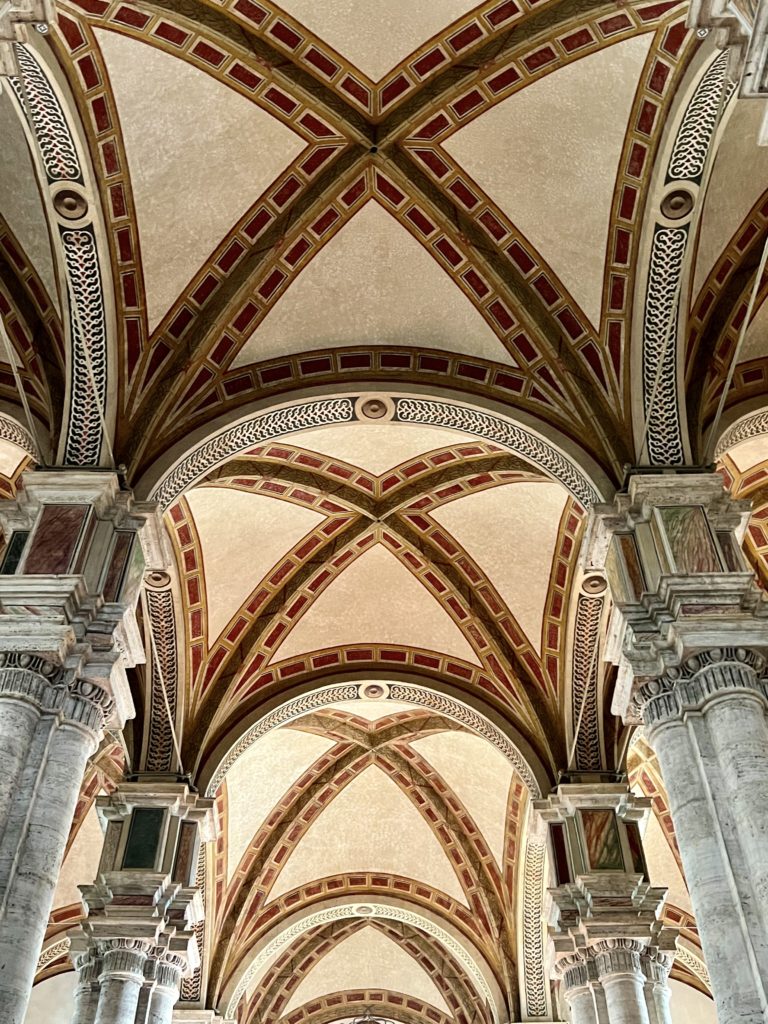
The roof level is the same for the nave and the two side aisles. Chapels radiate around the high altar.
The cathedral is “signed.” In a pilaster, you can see a crayfish relief. That was the family symbol of Rossellino, who’s real name was Gamberelli (meaning shrimp in Italian).
Inside, it’s airy, beautiful, and well-illuminated. Illustrious Sienese artists decorated the church with magnificent altarpieces.
The Baptistry, dedicated as usual to St. John the Baptist, is located next to the apse. There’s a medieval baptismal font.
3. Piccolomini Palace
Visiting the Piccolomini Palace is one of the best the vest things to do in Pienza. It was the domestic summer residence of the Piccolomini family. It’s a large block palace, just like the palaces in Florence . There’s a bench running along the outside.
The overall look is harmonious. The builders used rusticated stone. The palace is three stories high, with pilasters articulating the stories.
The inspiration for this palace was the Palazzo Rucellai in Florence, whose design is attributed to Alberti. The 23 windows are mullioned, with a horizontal sandstone band inside.
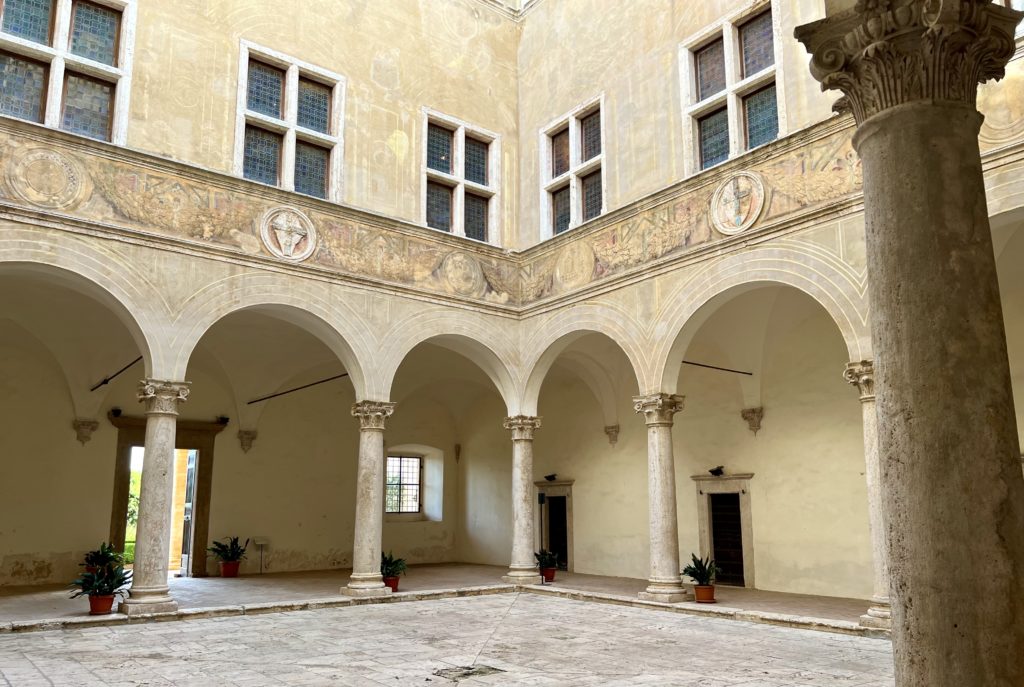
Inside the palace, you can see some of the well preserved period rooms, including the pope’s bedroom.
The furniture is original. You can inspect the family’s collection of treasures.
The palace has a wonderful loggia on the second floor, from which you have breathtaking panoramas of Mount Amiata and the Val d’Orcia.
There’s also an ivy clad hanging garden on the south side, which you see from the loggia. It was one of the first “roof gardens” of the Renaissance.
Click here to pre-book a ticket to the palace.
4. Bishop’s Palace | Palazzo Vescovile
This is the most simple building in the square, to the right of the cathedral. It was built to house the bishops who were visiting the pope.
The Bishop’s Palace is also three stories. There’s a large door flanked with rectangular windows. Cruciform or “Guelph cross” windows are on the second and third floor.
It’s a rather nondescript building. But (naturally) it had to be less grand than the Piccolomini Palace and Pienza Cathedral.
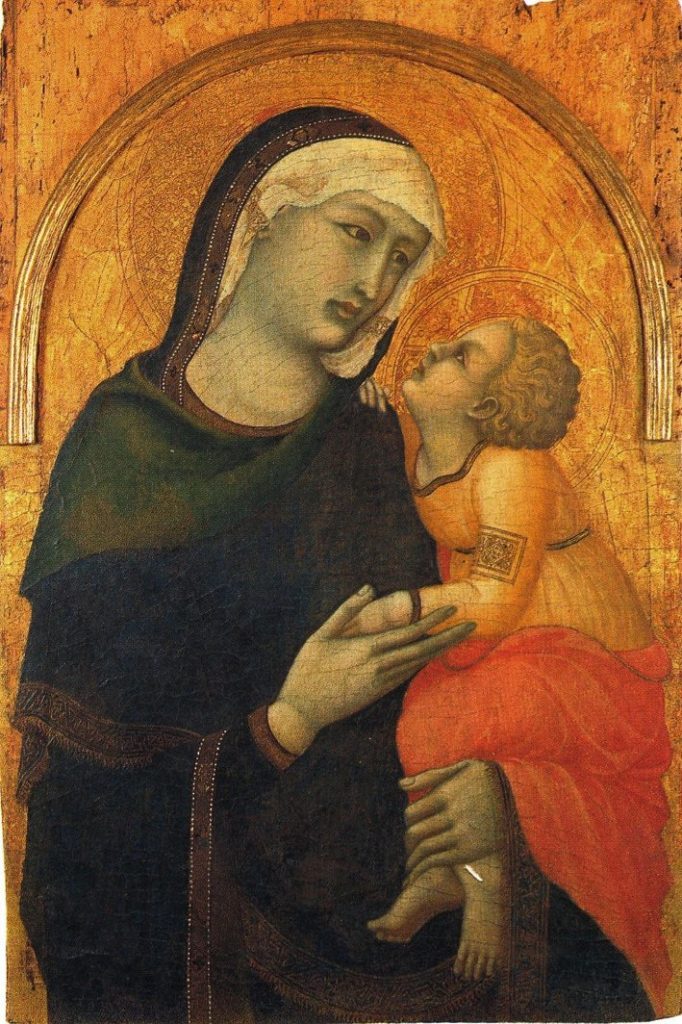
5. Diocesan Museum
Housed in the Palazzo Borgia, the Museo Diocesano displays an eclectic array of artworks, illuminated manuscripts, religious artifacts, tapestries, and miniatures.
Highlights include Pietro Lorenzetti’s Madonna col Bambino , Bartolo di Fredi’s Madonna della Misericordia, and the Gothic style Cope di Pius II .
The latter is an early 14th century embroidered cloak depicting the stories of the Virgin Mary, Margaret of Antioch, and Catherine of Alexandria.
There’s also a madonna attributed to Luca Signorelli.
6. Town Hall | Palazzo Comunale
The Palazzo Communale is the civic palace of Pienza. It faces Pienza Cathedral.
The bottom level is a triple arched loggia with Ionic columns, much like the Loggia dei Lanza of the Palazzo Vecchio in Florence. The loggia is covered with the coats of arm of the mayors of Pienza and the Piccolomini.
The second floor has four bifurcate windows. There’s a dominating terracotta clock tower, characteristic of a town hall.
It’s slightly shorter than the cathedral’s bell tower, intended to indicate the superior power of the church.
7. Passeggiata Panoramica
The Passeggiata Panoramica is a natural path along the edge of Pienza’s town walls. It offers a stroller wonderful views over the Val d’Orcia , making it one of the best things to do in Pienza.
Along the route, you’ll encounter various viewpoints and strategic spots from which you can admire the sweeping vistas and snap some photos.
The path ends briefly at the walls of the cathedral, but resumes again at the other side.
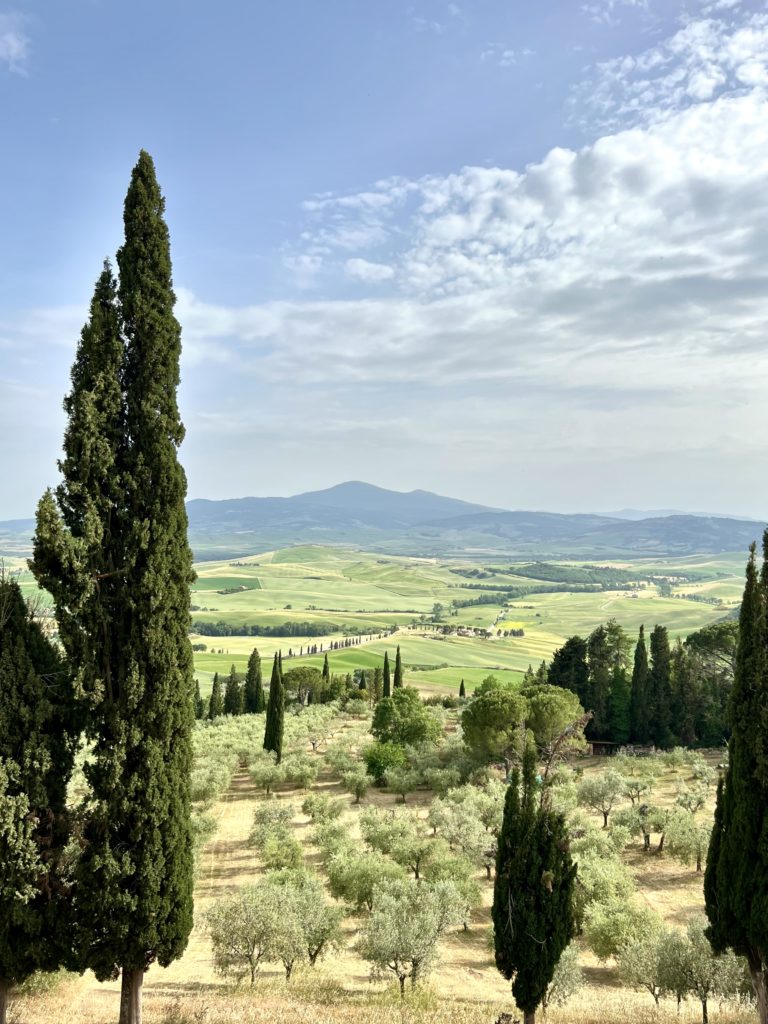
8. Pieve di Corsignano Church
Just a short stroll from Pienza is a beautiful example of Romanesque architecture, Pieve di Corsignano.
It’s an unspoiled and spartan jewel from the 12th century, with a little mermaid over the door.
The church has a unique circular bell tower with eight arched windows. The baptismal font is where Pope Pius II was baptized.
9. Palazzo Massaini
Just 5K outside Pienza on a nearby hilltop is the Palazzo Massaini. It boasts spectacular 360 degree view of the Tuscan landscape.
This is one of Italy’s Agriturismo places to stay. An agriturismo is when you stay in a farm or farm house resort, eating fresh farm produce.
There is a main rusticated palace (where you check in) and stone farmhouses on the estate.
10. Tips For Exploring The Best Things To Do In Pienza
How to get to pienza.
Pienza is an easy day trip from Siena (1 hour) or from Montepulciano (20 minutes).
If you start early, you can combine Pienza and Montepulciano in one day.
You can book an 8 hour guided tour of Montepulciano and Pienza from Florence. Or book a 10 hour guided wine tour from Florence that includes both towns.
There’s also a private wine tour from Siena . You can even book a wine and cheese tour in Pienza from Rome .
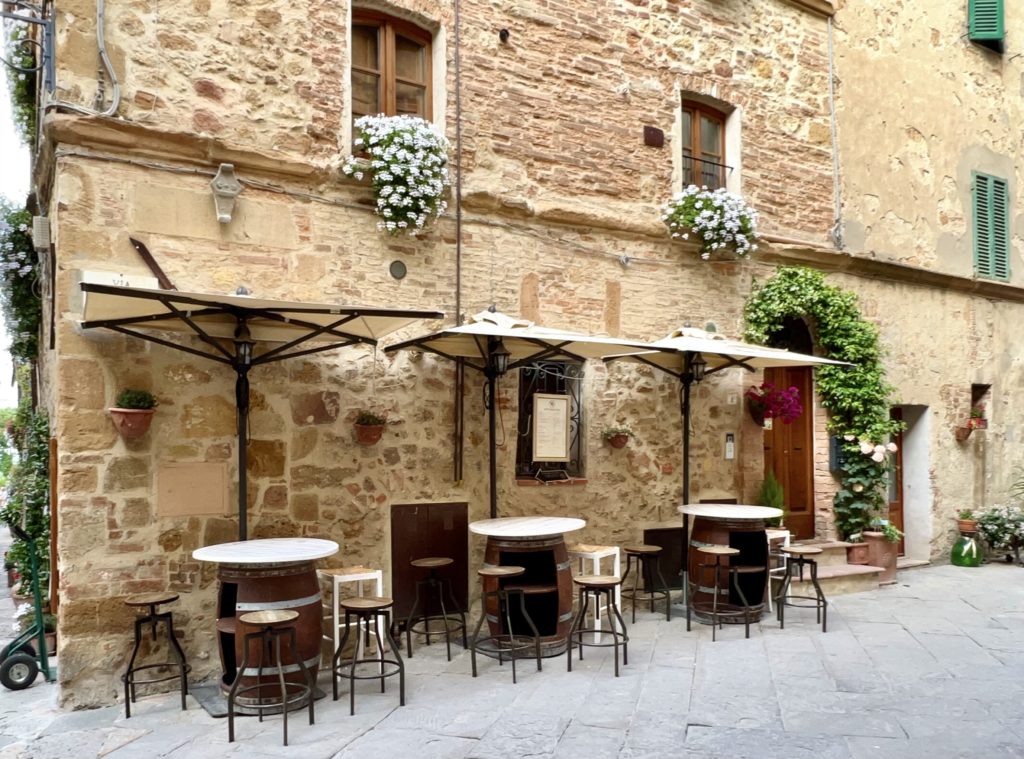
Pienza can also be visited from Florence . It’s a 1.5 hour day trip by car.
If traveling by car, park in one of the lots outside the old town walls. Or, you may find free spots on streets near the entry to the centro storico.
Pienza makes a great base for exploring southern Tuscany. The town is small and eminently scrollable. But it has some great restaurants and plenty of things to do and see.
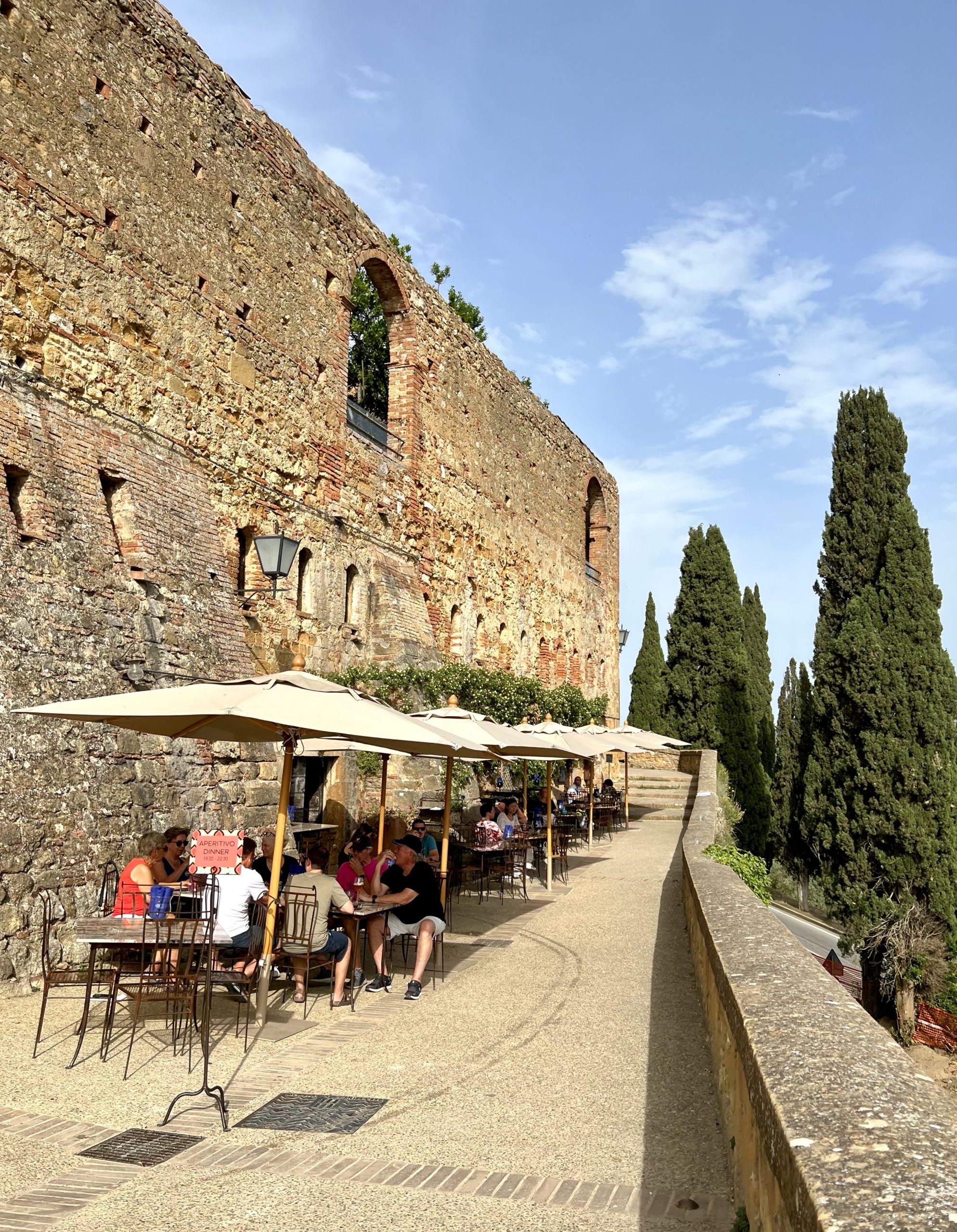
What And Where To Eat in Pienza
Pienza is known for its delicately flavored Pecorino cheese. This sacred Italian cheese is made from sheep’s milk.
Plenty of shops hawking this delicacy are tucked away in the narrow streets. There are wheels and wheels of it, both creamy and blackened with age.
Need to eat in Pienza? Try Trattoria Latte di Luna on the Corso Rossellini, one of Pienza’s main streets (connecting the town gates). It’s a tiny restaurant inside a rose garden.
You can also try Osteria Baccus on Via del Casello. For sweeping views of the Val d’Orcia, pop into La Terrazzo del Chiostro Restaurant.
For gelato, head to Gelataria Artigianal. You can even try gelato made with pecorino cheese.
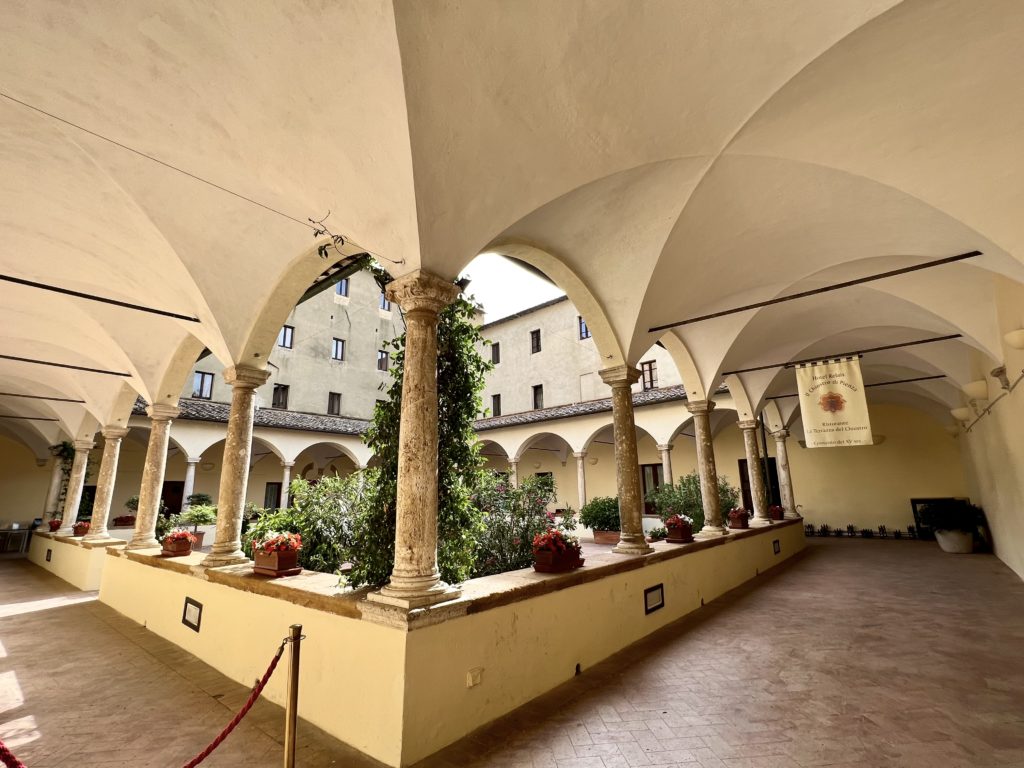
Where To Stay in Pienza
There are some good hotel options in Pienza. You can try La Bandita Townhouse , which is in a former convent with a modern design aesthetic and stone walls.
Hotel Corsignano is a romantic place near the monuments.
The Relais II Chiostro di Pienza is also housed in a former convent with a cloister and fantastic views.
I hope you’ve enjoyed my guide to the best things to do in Pienza. You may enjoy these other Tuscany travel guides:
- 10 day itinerary for Tuscany
- 1 day itinerary for Florence
- 3 day itinerary for Florence
- Best museums in Florence
- Hidden gems in Florence
- Best day trips from Florence
- 30 beautiful towns in Italy
- Art lover’s guide to Tuscany
- Guide to the Uffizi Gallery
- Best things to do In San Gimignano
- 1 day in Siena itinerary
If you’d need a guide to the beautiful town of Pienza, pin it for later.
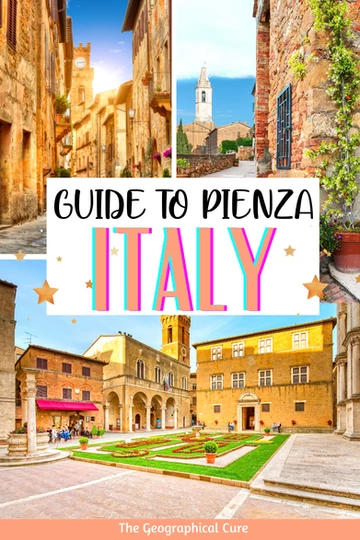
2 thoughts on “Guide To Pienza, Best Things To Do In Tuscany’s Renaissance Town”
Excellent information well researched thanks! Look forward to our trip there shortly.
Thank you. Enjoy Pienza!
Leave a Comment Cancel reply
Save my name, email, and website in this browser for the next time I comment.
Last Updated on July 5, 2023 by Leslie Livingston
Pienza, the ideal city in Tuscany
Pienza is a UNESCO World heritage site , and one of our all-time favourite small towns in Tuscany, located in the magical setting of the Val d’Orcia , south of Siena. Expect Renaissance architecture at its best, gorgeous views and pecorino cheese to die for.
We love it because of the soft colours of its stone, the graceful main square, or maybe because the drive there takes you through some truly splendid Tuscan landscapes . Whatever the case, spending some time in this delightful town will reconcile you with life.
Pienza, Tuscany – a town born out of a dream
Piazza Pio II is Pienza’s main square and the town’s beating heart. It’s named after a very interesting character who gave Pienza its name and a design with a purpose.
The Pope Enea Silvio Piccolomini was born here in 1405, when it was known by a different name – Corsignano. He took it upon himself to use this town, that wasn’t much to look at, as an architectural experiment. He employed the famous architect Bernando Rossellino , who set to work transforming the Medieval patterns and giving shape to the very first Renaissance “ideal city” in Italy, where proportions and harmonic shapes would reflect human virtues and good living.
This is how Pienza (‘city of Pio’) was born. It was the year 1459 , and it took only 3 years to give the town a total facelift , starting from the main square that became the perfect example of Renaissance urbanism.
=> Discover the 7 Unesco sites in Tuscany !
What to see and do in Pienza
A passeggiata along corso il rosellino.
The corso is where people in Italy take their leisurely stroll . And Pienza’s Corso Rossellino is a perfect example. It’s lined with small shops , selling food, artisan-worked leather goods, house decor and of course souvenirs of all sorts. A passeggiata along this historic street is a window to the life of the town.
It joins Porta a Prato (where you find the Tourist Information office) with the 13th century gate Porta del Giglio . Along Corso Rosselino you find the small San Francesco Church , a typical Franciscan church for its simplicity – in the interior you find with some 14th century frescoes that depict scenes from the life of Saint Francis.
=> Walking along Corso Rossellino and its narrow tributaries, you’ll see many artisan cheese shops. Pecorino (sheep milk cheese) from the area is justly famous. We recommend a visit to an artisan cheese shop for a taste of some of this buttery and nutty goodness. There are plenty of variations in taste and texture, and you’ll find shops selling local honey too – a typical Tuscan pairing.
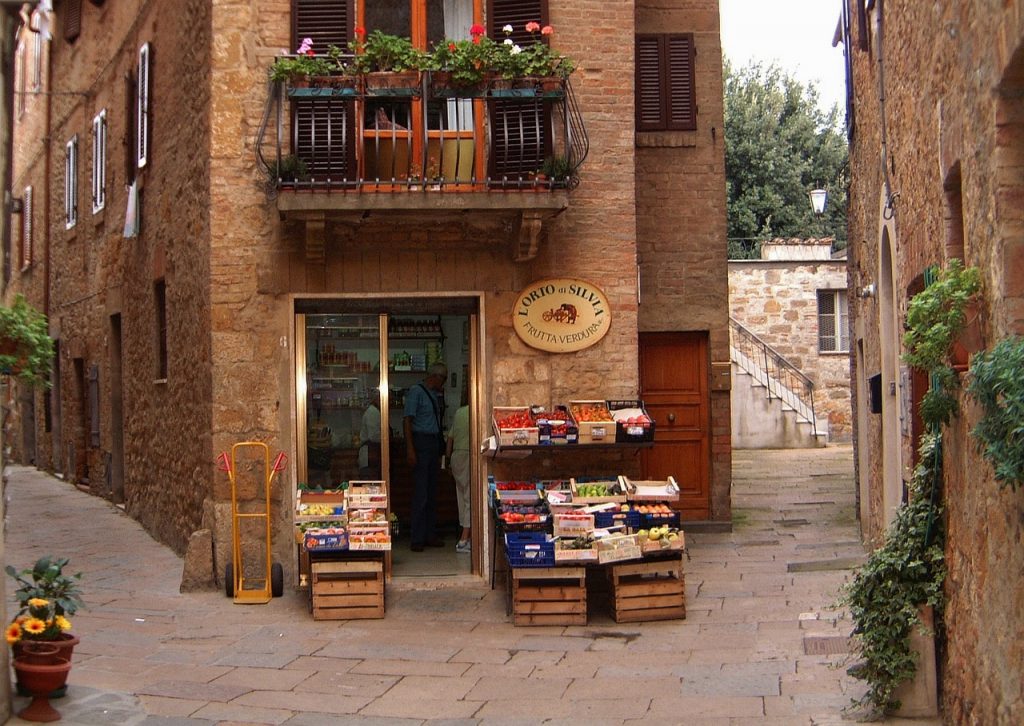
When you eat this Pecorino cheese you’re tasting a piece of history. According to Plinio Il Vecchio the Etruscans were already making a delicious cheese in the area of the Crete Senesi . Today it is produced with traditional methods. The ‘ fresco ‘ and ‘ semistagionato ‘ are younger and softer, while the ‘ stagionato ‘ is aged, darker in colour and has a more intense flavour.
Once your tastebuds are satisfied, a little meandering will lead you to the southern part of the town from which you can see a spectacular view of the Val D’Orcia .
=> Discover 5 Picturesque small towns to visit in the Val d’Orcia !

PIENZA TOP SIGHTS & ATTRACTIONS
Piazza Pio II – If you want to feel the spirit of the Renaissance , Piazza Pio II is the place to do it. The architect Bernardo Rossellini used theories of Renaissance town planning devised by Leon Battista Alberti. It sets the buildings at angles to the cathedral in order to increase the sense of perspective.

Cathedral of Santa Maria Assunta – A soberly geometric church with three high concave naves and a Papal crest near the top. After it was built in 1459, a Papal Bull forbade changes to the church and since then it has remained virtually the same.
Museo Diocesano – To the left of the cathedral is the Palazzo Vescovile (Bishop’s palace), modified and enlarged in 1492 for Cardinal Borgia (later Pope Alexander VI), and now contains the Diocesan Museum. It displays an intriguing miscellany of artwork, illuminated manuscripts, tapestries and miniatures . Enter from Corso Rossellino.
Palazzo Piccolomini – This magnificent palace was the pope’s residence and is considered to be Rossellino’s masterpiece. It has a wonderful hanging garden and a three-level loggia which offers a spectacular panorama over the valley below. There are guided tours of the 1st floor every 30 minutes, but you can peek into the courtyard for free.
Palazzo Comunale – Worth a look for its beautiful exterior with Papal insignias and biforate windows.
Where the streets speak of love
As you walk around the town centre and pay attention to the streets’ names you’ll discover some surprises. You have the r omantic Via del Bacio (kiss street), the famous Via dell’Amore , the lucky Via della Fortuna, but also Via Buia (dark street) to remind you that there’s dark and light in all places, even the most beautiful ones.
♥ Discover the most romantic places in Tuscany , and the top experiences to have in the region during your trip !
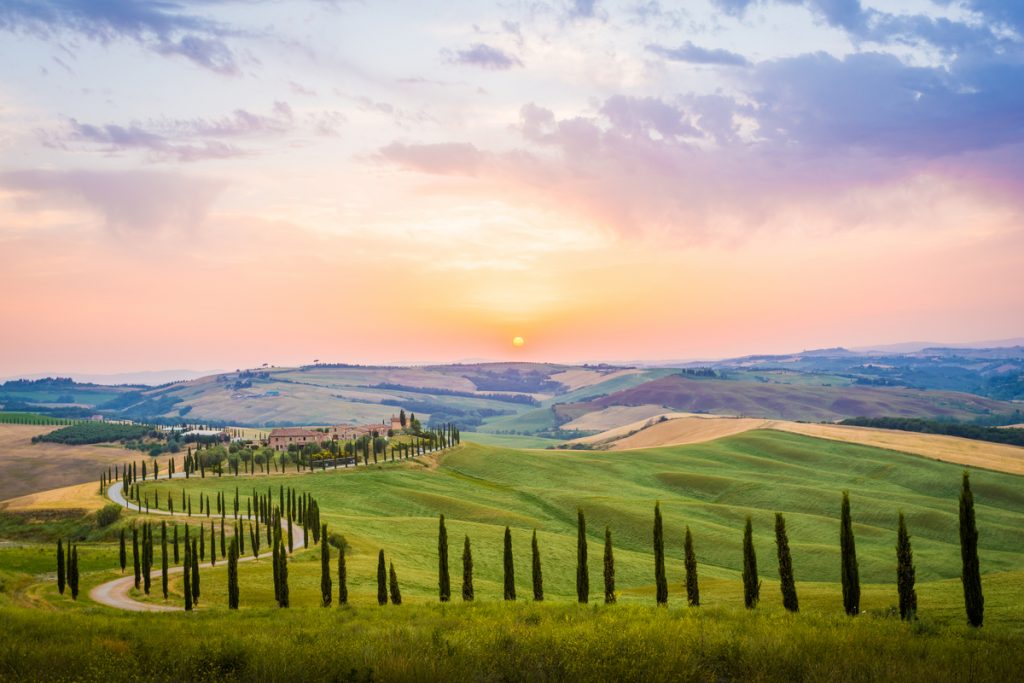
Pieve Santi e Modesto, Corsignano : In the 10th century, Pienza was called Corsignano and this was its church. Its distinctive circular bell-tower, and atmospheric carvings of entwined sirens over the doorway make it a must-see.
It won’t take more than a couple of hours to explore Pienza, but it is an excellent location from which to explore the many wonders of Val D’Orcia .
To see the best of the Val d’Orcia, check out our Val d’Orcia itinerary .
Traditional Festivals in Pienza
Cheese is the protagonist in a quirky game that takes place every year (usually the first Sunday in September) in the main square. Il “Gioco del cacio al fuso” in Pienza is a sort of bowls played with cheese, a cheese rolling game where different contrade roll their way to local glory.
During the “Pienza e i Fiori” (Pienza and Flowers) Festival, on the second weekend in May, the town embraces the spirit of Spring, with beautiful flower displays around the historic centre.
=> Check out more Traditional Festivals in Tuscany .
Your friendly online guide to Florence and Tuscany. Get our insider travel tips delivered to your mailbox every month.
Email address:
Read Our Popular posts
- 3 Scenic Drives in Tuscany, Italy 415 views
- Best coastal towns in Tuscany 303 views
- Easter in Florence – Experience a traditional Easter in Florence 255 views
- My secret Florence – Hidden gems in the city of the Renaissance 212 views
- Val d’Orcia itinerary – A day driving around Val d’Orcia 201 views
- Medici the Magnificent. Fact and Fiction in the TV series 181 views
- 10 Non-touristy things to do in Florence 157 views
- 10 Best Chianti Towns to visit 143 views
- Chianti Road Trip – A scenic drive on the Chiantigiana Road 136 views
- 8 Unique Things to do in Lucca – Enjoy lovely Lucca 132 views
Recommended Reading
Monte oliveto maggiore abbey.
The Monte Oliveto maggiore Abbey, one of the loveliest rural monasteries in Tuscany, is set...
Montepulciano – hilltop town that’s home to a prestigious wine
With views as intoxicating as its “noble” red wine, the delightful walled hilltop town of...
Val D’ Orcia – the jewel in Tuscany’s crown
The Val D'Orcia is rural Tuscany at its best. Declared a UNESCO heritage site, this...
Top places to visit in Tuscany
Discover the top places to visit in Tuscany. Beautiful places that will make your holiday unforgettable. Start...
- Val d'Orcia
Visit Pienza, the ideal city in Val d’Orcia
Pienza, a Renaissance masterpiece
Pienza is one of those places to visit absolutely at least once in a lifetime. Located in the beautiful Val d’Orcia about 50 km south of Siena and 20 km east of Montalcino, Pienza is a real gem, rich in monuments and works of art. The position in which the village is located is another strong point: perched on a hill from which it enjoys excellent panoramic views and within walking distance of many other places of considerable interest.
The history of Pienza is inextricably linked to the figure of Enea Silvio Piccolomini , who went down in history as Pope Pius II . Enea Silvio Piccolomini was born in 1405 in Corsignano , a small village of little importance. Elected Pope in 1458, Pius II visited his hometown during a trip to Mantua. On this occasion, the poor conditions in which his hometown was facing, the pontiff decided to radically transform it to make it an “ideal city” . The intent of Pius II was to transform this small medieval village into a papal residence in the Renaissance style and, as we will see, he succeeded perfectly.
The works for the renovation of the city were entrusted to the architect Bernardo Gambarelli known as Rossellino . In less than four years the urban planning work was completed and the city was renamed with the name of Pienza. Rossellino’s project has its fulcrum in the central square, Piazza Pio II, which is overlooked by the main Renaissance buildings. The main street of the village branches off from this extraordinary square, named after the Rossellino. The end result is a concrete example of an ideal city, a true symbol of the Renaissance.
In 1996 UNESCO declared the city a World Heritage Site . Today Pienza, in addition to being one of the most popular tourist destinations in the whole province of Siena, is also known for the production of a typical cheese, the delicious Pecorino di Pienza , and because some scenes of the film Gladiator .

Things to do in Pienza: the guide
Let’s see what are the main points of interest to visit in the historic center of Pienza:
Piazza Pio II
Museo diocesano d’arte sacra, palazzo piccolomini, chiesa di san francesco.
- Pieve di Corsignano
Romitorio di Pienza
The square, which follows the existing one, has a trapezoidal plan on which the Cathedral overlooks the center. On the sides of the church we find Palazzo Piccolomini (on the right), Palazzo Borgia (on the left), later renamed the episcopal palace and today the seat of the Museo Diocesano and the Palazzo dei Canonici, always on the left. On the opposite side from the Cathedral are the Palazzo Comunale and Palazzo Ammannati. It is one of the most beautiful squares in all of Tuscany, a real masterpiece of Renaissance town planning!

Cathedral of Pienza
In a fully Renaissance style, the travertine facade of the Cathedral is divided into three parts and opened by as many portals. In the highest part, above the rose window, there is a tympanum bearing the coat of arms of Pius II. The interior, which maintains a Gothic imprint, is divided into three naves of the same height. The apse is divided into three chapels to which are added two more positioned at the height of the cruise arms.
Some masterpieces of sacred art commissioned by Pius II adorn the interior of the Cathedral, among these we mention the altarpiece by Giovanni di Paolo , Madonna and Child with Saints Antonio Abate, Bernardino, Francesco and Sabina , the Madonna Enthroned between Saints Nicola, Martino, Agostino and Girolamo by Matteo di Giovanni and The Assumption of the Virgin by Lorenzo Vecchietta .

The Diocesan Museum , housed inside the Palazzo Borgia, displays numerous works of art and ecclesiastical furnishings. The museum itinerary consists of eleven rooms in which the works, coming from the Duomo and the surrounding area, are exhibited according to a chronological criterion (from the XII to the XVIII century). There are really many masterpieces on display, among them we find the Madonna di Monticchiello by Pietro Lorenzetti , the Madonna della Misericordia by Bartolo di Fredi and the altarpiece by Lorenzo Vecchietta , Madonna and Child with Saints .
For information on museum hours and tickets, I refer you to the official website .
Huge but very elegant, Palazzo Piccolomini is a three-storey building with an almost square plan. Entirely covered with ashlar on the facade, the building develops around a refined central courtyard, around which an arcaded portico develops on columns with Corinthian capitals. On the left of the building there is a beautiful garden which overlooks an extraordinary three-order loggia; from here you can enjoy a beautiful panoramic view of the Val d’Orcia which ranges from Monte Cetona to Monte Amiata and the hills around Montalcino.
The interiors of the building present a series of magnificent rooms where you can admire extremely valuable furniture and works of art worthy of the best museums. On the website of the Palazzo Piccolomini you will find all the information on the opening hours, tickets and events taking place at the palace.

The chiesa di San Francesco in Pienza was built between the thirteenth and fourteenth centuries, following a pattern common to many other Franciscan churches, which provides for a single nave with a final apse. The exterior is very simple with a single decoration aimed at highlighting the entrance portal. The interior is much more interesting as it preserves numerous remains of fourteenth-century frescoes, attributed to Cristoforo di Bindoccio and Meo di Piero, which depict various scenes including the Annunciation , the Deposition and episodes from the life of San Francesco (in particular San Francesco who receives the Stigmata ). The Madonna della Misericordia and the Saints Sebastiano and Bernardino located in the left altar come from the workshop of Luca Signorelli.
Pieve dei Santi Vito e Modesto in Corsignano
The pieve dei Santi Vito e Modesto in Corsignano is located just outside the town of Pienza about 500 meters from Piazza Pio II. Documented since 714, the current church dates back to the 12th century and is a beautiful example of Romanesque building. Noteworthy is the facade with a richly decorated portal surmounted by a mullioned window which has a female statue per column. On the left stands the mighty cylindrical bell tower, while a second portal, also decorated, opens on the right side.

The Romitorio di Pienza is a place of worship created by digging in the rock that is located below the Church of Santa Caterina. Probably built between the 14th and 15th centuries, this very particular complex is made up of a series of rooms inside which there are the remains of various rock sculptures. A real hidden corner of the city a stone’s throw from the historic center. If you find it open it is definitely worth a visit, to reach it you will have to take Via Santa Caterina. Along the descent towards this hermitage you will also meet the small Cappella della Madonna del Latte (15th century).
What to see around Pienza
Pienza is located more or less halfway between San Quirico d’Orcia (9.8 Km) and Montepulciano (14.8 Km). If you are planning a visit to the Val d’Orcia , it could be a good starting point; from here you can quickly reach all the other main centers such as Montalcino , Castiglione d’Orcia and the thermal baths of Bagno Vignoni .
The main points of interest in the municipal area of Pienza are the pretty village of Monticchiello , the Castello di Spedaletto , the Castello di Cosona , the Castelluccio , the Riserva naturale Lucciola Bella and the Quercia delle Checche while film lovers will be happy to know that the location of the famous scene of the Elysian fields of the Gladiator is located in Terrapille, between San Quirico d’Orcia and Pienza.
Monticchiello
Castello di spedaletto, riserva naturale lucciola bella.

Moticchiello is a fine medieval village located just 6 kilometers from Pienza. Still enclosed within solid stone walls, the town is known for its “Teatro Povero”, a theatre where the actors are the inhabitants of the village. To see the building of the Cassero, the city walls and the Pieve dei Santi Leonardo e Cristoforo.
The Castello di Spedaletto is a remarkable fortified complex which dates back to the XII century. Although modified over the centuries, the castle still retains towers and walls with battlements. At the castle there is also the Church of San Niccolò in Spedaletto which preserves some 15th century works. Today the Spedaletto Castle is used as a hotel.

The Riserva naturale Lucciola Bella is a protected area located southeast of Pienza characterized by the presence of badlands, which are typical elements of this area. In 2003, fossils of a marine mammal (similar to the dolphin) that lived here 4.5 million years ago, when the sea covered the entire area, were found. This is considered a very important finding because it is the most complete finds of this species ever found.
How to get to Pienza
By car : to reach Pienza by car you must take the A1 highway to the Valdichiana exit, from there continue in the direction of Torrita di Siena on the SP326 and then towards Pienza.
By train and bus : the nearest station is Buonconvento, from there you must continue with the bus, line 112 of Siena Mobilità. If you are in Siena, you can take the Siena Mobilità line 112 directly.
You might also be interested in...

The cypresses of the Val d’Orcia

The thermal baths of Bagno Vignoni in Val d’Orcia

Which are the top things to do in Val d’Orcia?

Guide to visit Rocca d’Orcia, top things to do

Pienza, Italy: Visit the Beautiful Hilltop Village in Tuscany
Pienza, Italy : a Tuscan gem, alive with history, charm, and romance. Famous for its renaissance history and being the capital of pecorino cheese (delicious!), this beautiful little hilltop town is a must-see on your trip to Tuscany . Find out everything you need to know about Pienza with this complete travel guide.
The Story of Pienza, Italy
Pienza is located in the most southern part of Tuscany , in the region of Val d’Orcia, and is only 15km away from Montepulciano . The town was named after Pope Pius, who was born here (Pienza means the city of Pius). Wanting to completely reimagine his birthplace (a small unknown village called Corsignano), the pope hired the architect Bernardo Rossellino to create the perfect Renaissance town.
Here are all your hotel options in Pienza.
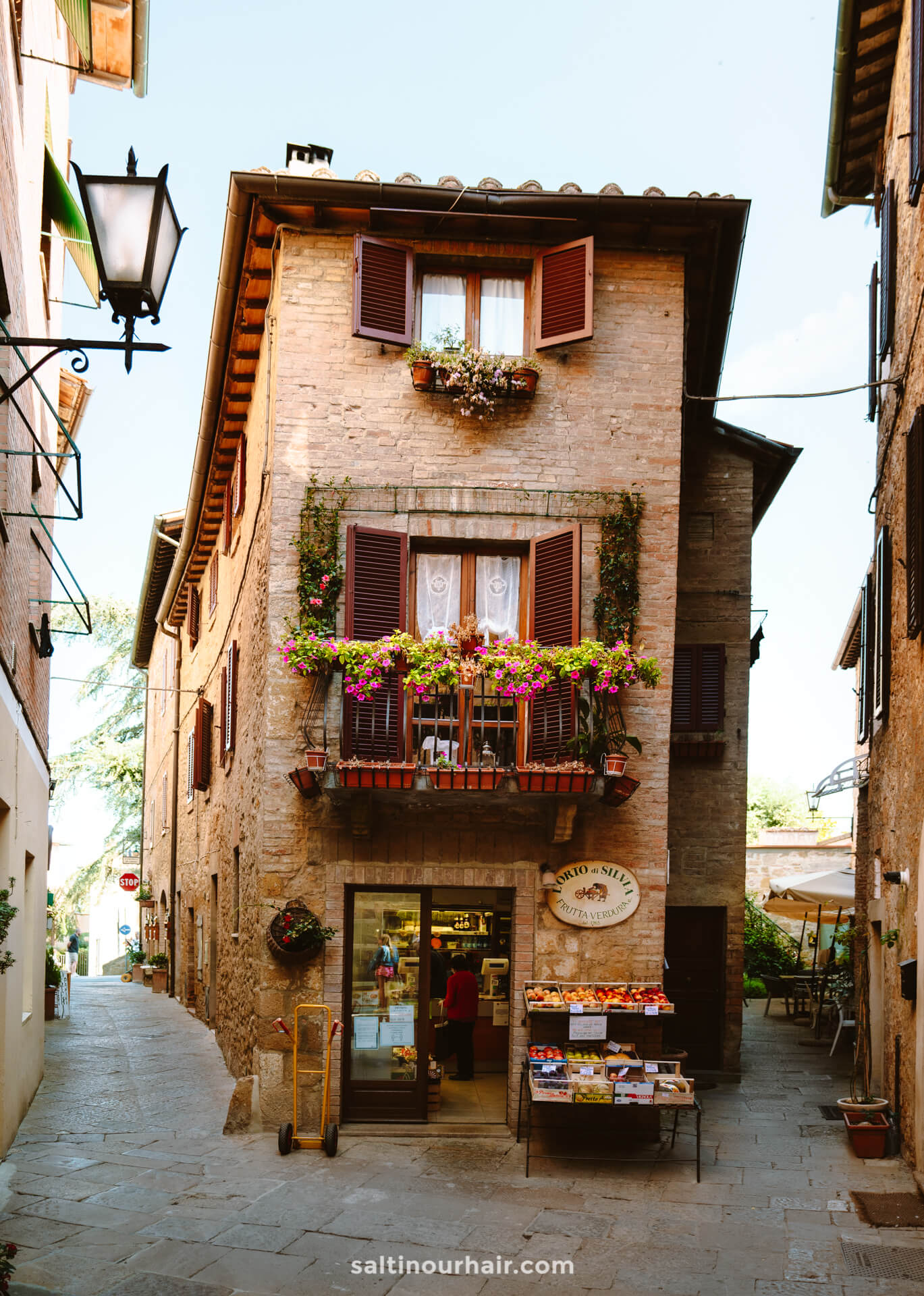
Building began in 1459, and within a few years, they had finished the city. The architect was also the first to use these concepts of Renaissance Humanist urban design – now seen throughout Italy and the rest of the world.
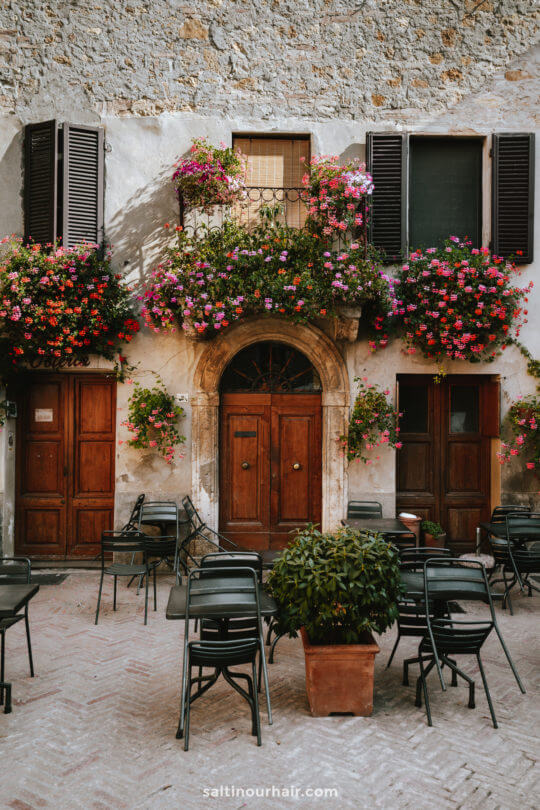
In fact, UNESCO now recognizes Pienza’s historical center as a world heritage site, wanting to protect the first urban design principles of Bernard Rossellino. These days, people consider the town one of the most beautiful examples of Renaissance architecture.
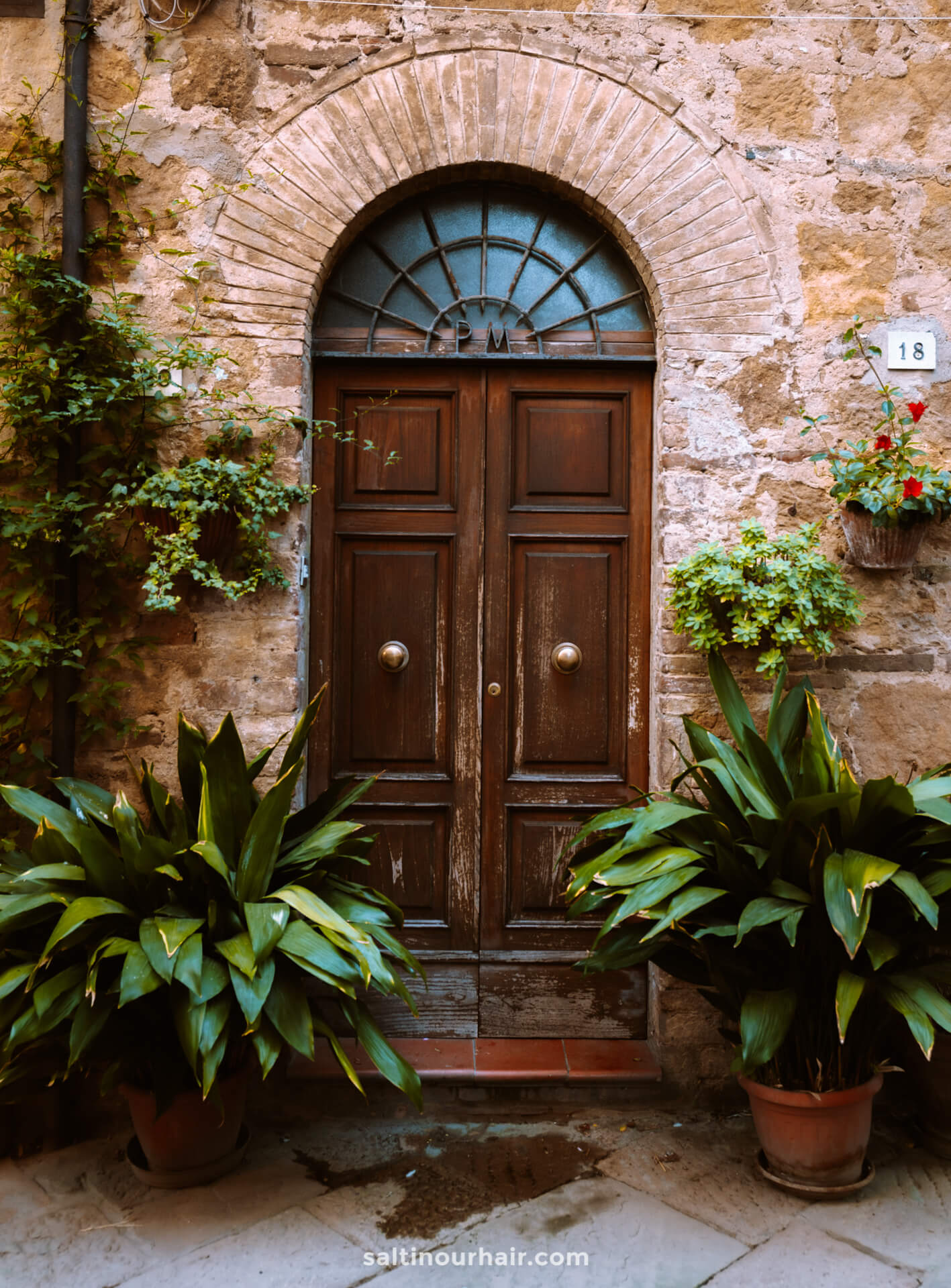
Historic Center of Pienza
In the center of Pienza, you’ll find Renaissance architecture everywhere you look. The cathedral and its octagonal bell tower are particularly extraordinary and are icons of the town. Make sure to also check out the cathedral’s interior, where there are many beautiful paintings from the Renaissance period. Spend some time looking around before relaxing in the beautiful square outside.
Also read: Things you must do in Italy!
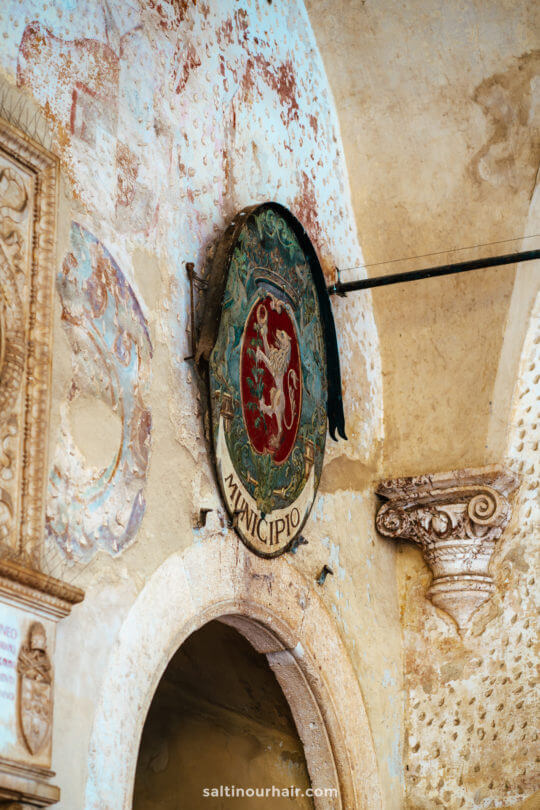
Via dell’Amore
In Pienza, romance and charm take on a new life. The beautiful setting is truly magical, sat high up on a hill overlooking Tuscany’s rolling hills, cypress trees, and sunflower fields. It really feels like a living, breathing oil painting.
Also visit the impressive Piazza Grande at Montepulciano .
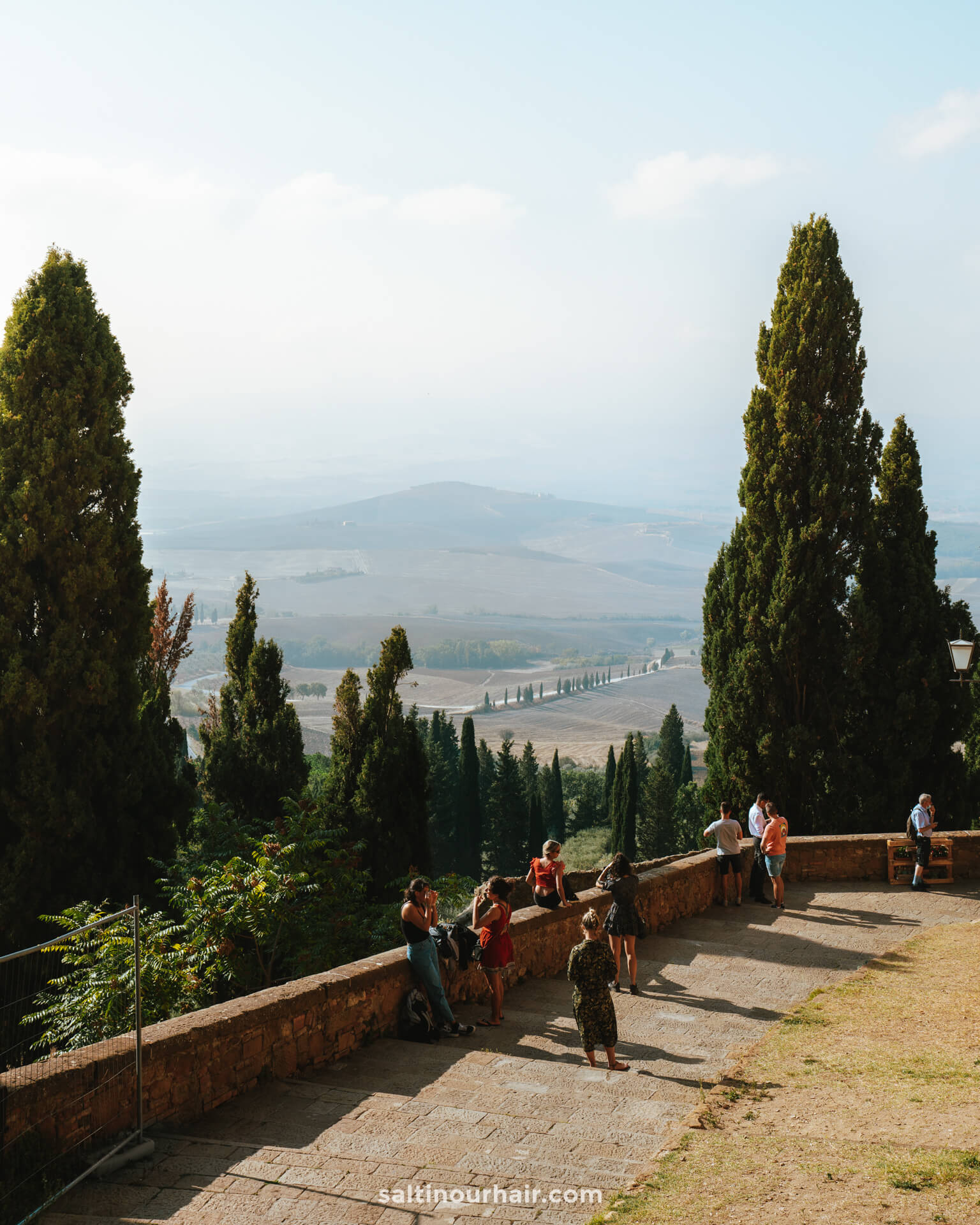
With all this beauty, it’s no surprise that Pienza is the town for lovers, and film director Franco Zeffirelli even set his movie ‘Romeo and Juliet’ here. The romantic streets also have romantic names, like Via del Bacio (Kiss Street) or Via dell’Amore (Love Street). Enjoy wandering the love route in Pienza, Italy !
More of Tuscany in: The complete Tuscany road trip guide
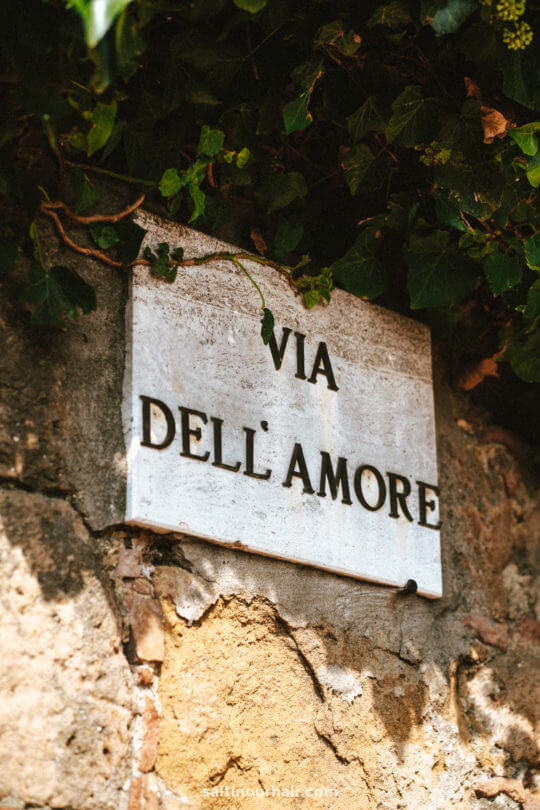
Pecorino Cheese in Pienza, Tuscany
Pienza is the capital of pecorino cheese, and you can try this tasty local delicacy in many of the town’s osterias. The area is perfect for Pecorino because of the rich pastures that the sheep graze on. This is what gives the cheese a particularly delicious flavor!
Tip: Are you visiting in September? On the first Sunday of the month, discover the annual pecorino festival in Pienza!
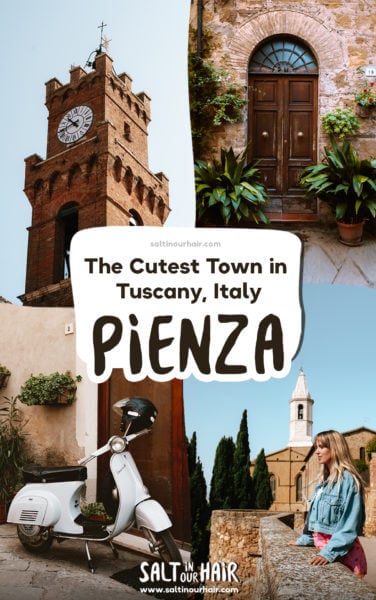
How to Visit Pienza, Italy
The nearest international airport to Pienza is Florence, with flights arriving and leaving to destinations all over Europe.
The village of Pienza is wonderfully remote, allowing visitors to see the natural beauty of the area. Because of this, there is no train service and very few public buses. If you want more flexibility, we recommend renting a car in Italy so that you can visit other hilltop towns too.
We recommend to rent a car in Italy through Sunny Cars with free cancellation and insurance included. Book your rental car here .
Join an Organized Tour
Alternatively, look to book an organized tour of Pienza . For example, many of the wine tours that come from Montepulciano include a stop here. See a well-rated tour here .
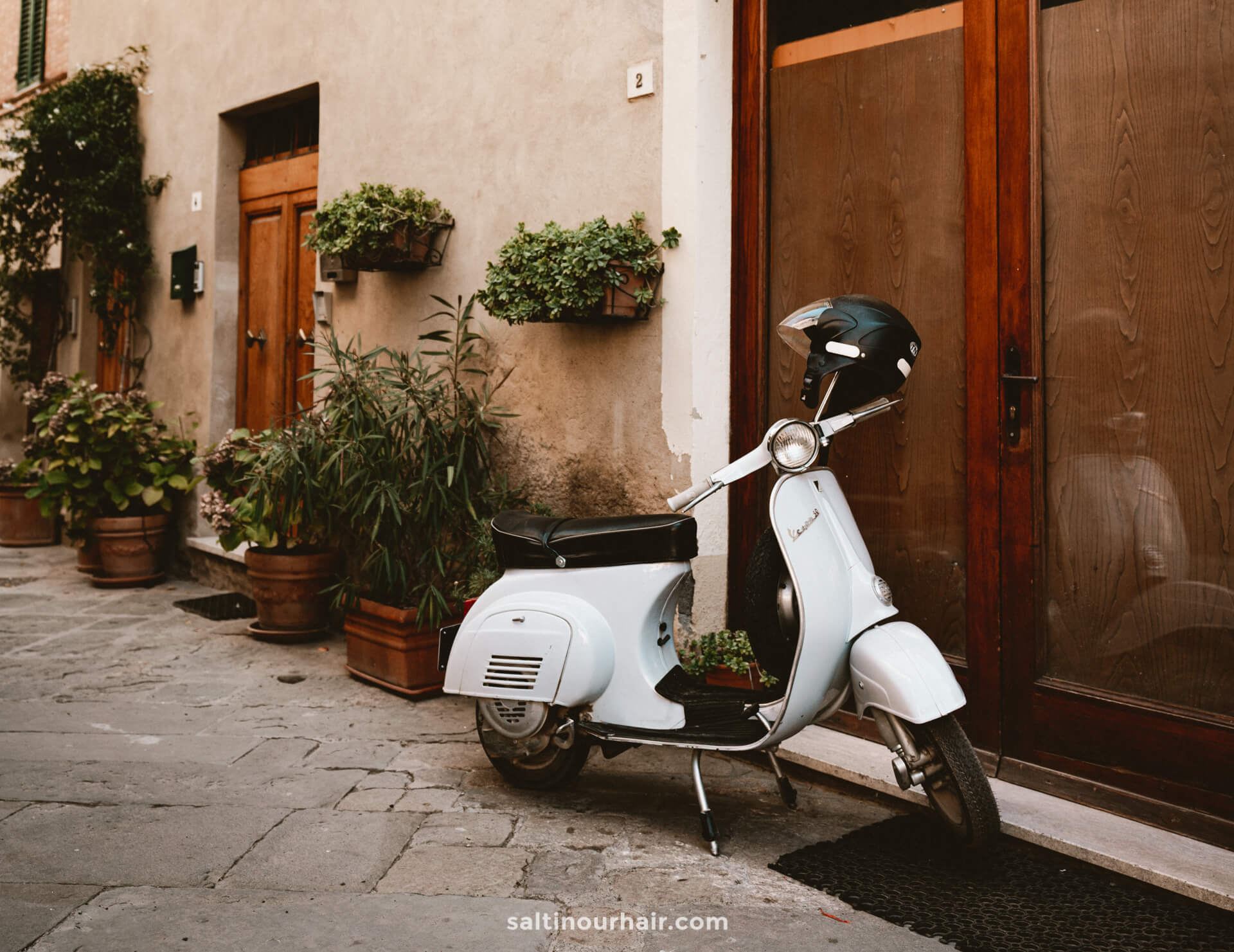
Where to Stay in Pienza
Pienza is a lovely place to stay on your trip to Tuscany and a great base to explore the rest of the region.
Hotels in Pienza 😴
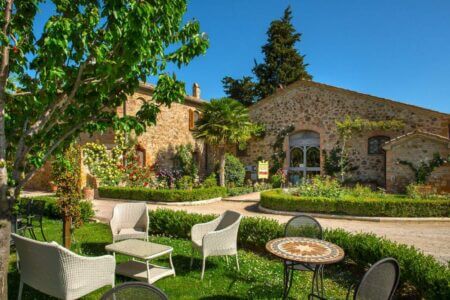
Choose a small guesthouse or bed&breakfast in the historical center, or if you have a car, opt for one of the many agriturismos (farm stays) that sit down in the beautiful valley below.
Best Time to Visit Pienza
If you want to see Pienza come to life, then visit during September when the annual Pecorino festival occurs. This is an excellent opportunity to see the locals in action, selling their town’s delicacy.
Otherwise, anytime during the fall or spring is a great time to visit this beautiful hilltop town. There will be fewer crowds and tour groups during this time, and you might even be lucky enough to get the streets all to yourself!
Also read: The Elsa Trail in Tuscany
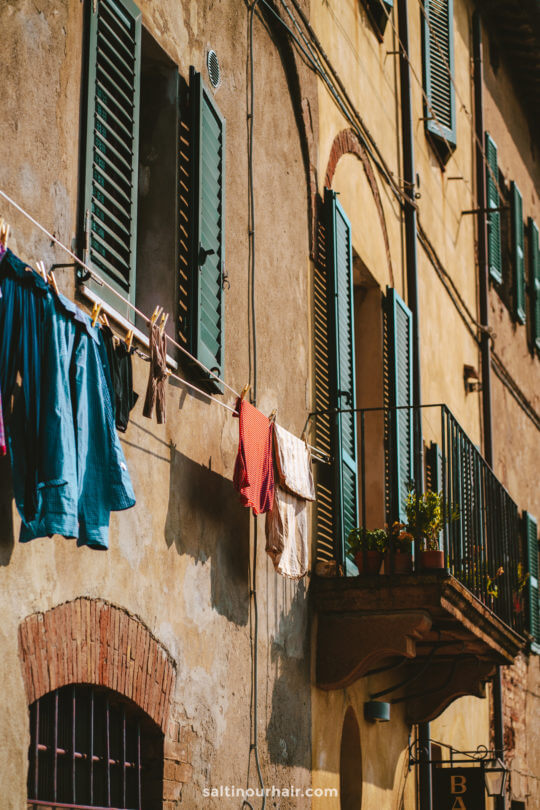
Best Cafes and Restaurants
Pienza is an authentic Tuscan town. You’ll find narrow streets filled with charming osterias, run by local people, using fresh and locally sourced produce.
- Sette di Vino (Italian)
- Buon Gusto Gelateria (Gelato)
- Poderuccio (Italian)
- Piccolomini Caffè (good coffee)
Make sure to try one of the fantastic Italian pasta dishes with some grated pecorino cheese on top, of course!
By purchasing through our links, you support us at no additional cost. Thank you for your support. ♥️
- Find Hotels via Booking.com
- Find a Rental Car via Sunny Cars
- Find Flights to Pienza via Skyscanner
- Get a Travel Insurance via Heymondo
- Book Tours & Attractions via GetYourGuide
- Book a Bus/Train/Transfer via 12Go
Renting a Car in Italy in 2024: All you need to know
Discover san marino: the perfect day trip from italy, 13 best things to do in assisi, italy.
Looking for more travel information? Plan a chat with us for personalised travel advice or get an answer from the Salt in our Hair Travel Community on Facebook.
Your email address will not be published. Required fields are marked *
Notify me when new comments are added.

Official website of Ambito Turistico Val d'Orcia

- Castiglione d’Orcia
- San Quirico d’Orcia
Art and culture
Food and wine.
- Romantic Val d’Orcia
Restaurants
- Useful Facts
- Tourist Offices
Download area
Regional department.

The city of light
Squatting on a hill, the ideal Renaissance cit y takes its name after Pius II , who wanted it built. Enea Silvio Piccolomini, a leading member of Humanism, who became pope with the name Pius II, decided to transform his native land, the medieval walled village of Corsignano. In 1459 he commissioned the project from the Florentine architect Bernardo Gambarelli, aka “ il Rossellino ”, a follower of the great architect Leon Battista Alberti. That is how a rare example of urban planning on a human scale came to light, focussing on the monumental character of the main square, Piazza Pio II, around which the major buildings were laid out: the Cathedral, the Piccolomini Palace, the Borgia Palace, the Townhall Palace. Today the town still has its original stylistic unity , representing one of the most significant architectural achievements of the humanist ideals of the 15th century, and for this reason, in 1996 the historic centre of Pienza was included on the World Heritage Sites list . A few kilometres from Pienza, the town of Monticchiello was built on a hill where you can enjoy a wide view. Down in the valley there is the fortified castle of Spedaletto and north of Pienza the Monastery of Sant’Anna in Camprena.
Tourism Office Corso Il Rossellino, 30 Pienza 0578 749905 [email protected] www.comune.pienza.si.it
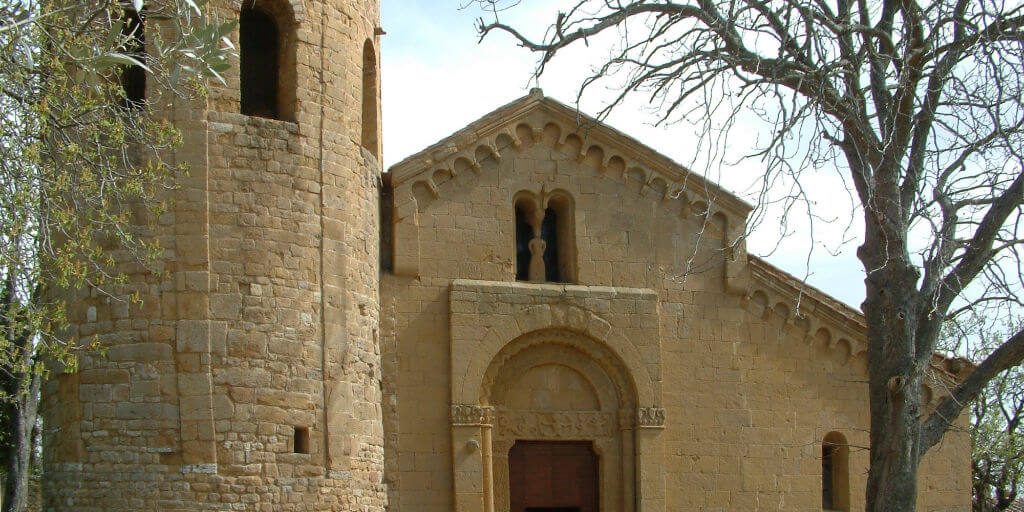
Val d'Orcia is expecting you with all its excitement, browse through the travelling tips and find inspiration for your stay.
Other locations
Castiglione d'Orcia
San Quirico d'Orcia
Hospitality
Staying in Val d'Orcia means waking up in the midst of a beautiful incomparable landscape, surrounded by historic towns and engaging nature. Look for the accommodation that most suits you and find the ideal place on the hills, between the churches and the stars of Val d'Orcia.
Immersed in nature and landscape
The authentic flavours from the land
Traditions e folklore
Val d'Orcia romantica
Getting married in unforgettable places
Where tradition is art
World Heritage
A valley protected dy UNESCO
BEFORE LEAVING
Useful tools and information to organize your holiday
Useful facts
Weather, transport and more
Maps and guides
Write us for more info
Tourist offices
Val d'orcia as you like.
A territory that lets itself be told...
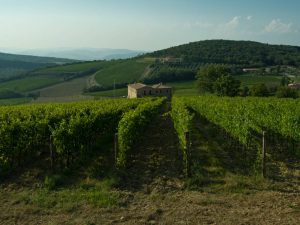
A journey between the forms and colours of taste
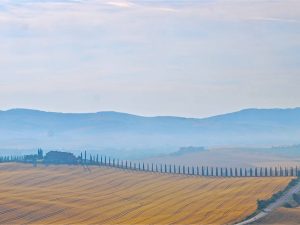
The landscape and its natural elements

The beauty and enchantment of the ideal landscape
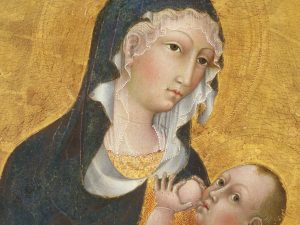
The landscape of hidden treasures with churches and palaces
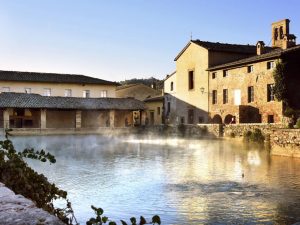
Finding oneself between mystery and spirituality
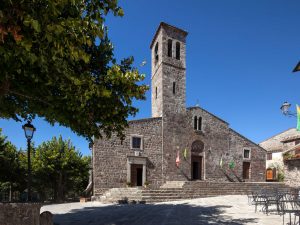
A valley of stories and adventures
#tuscanytogether.
The collaborative tools of the Tuscany Region to give voice to its destinations.

Waking up in Val d'Orcia
Proposals and experiences to know the territory
Immerse yourself in local identity and traditions
Food and wine products
Before leaving

Val d’Orcia views, a pope’s plan for Renaissance perfection and landscapes from literature and film
Pienza travel guide.
Tiny Pienza is such a perfect miniature of Renaissance architecture that its entire centre is recognized by UNESCO, for the “new vision of urban space” it represented in the mid-1400s. Since prehistory, there had been settlements on this ridge overlooking the Val d’Orcia, 37 miles south-east of Siena . But it is Pope Pius II’s madcap (and unfinished) plan to build the Città Ideale (“Ideal City”) that puts Pienza on the tourist trail.
In the early 1300s, Boccaccio wrote of the “ladri” (thieves) of Corsignano. By the 1460s, this same place had a new name, and was instead famous for architects and the elegant buildings they created here.
In the Beginning...
Until 1462, there was no such place as Pienza. There was something here, of course: the village of Corsignano , birthplace in 1405 of Aeneas Sylvius Piccolomini, who on investiture as Pope Pius II , decided to revamp his modest home village in lavish style and at great expense (50,000 florins, apparently). This humanist pope had ambition: to take the architectural writings of Alberti and other theorists of the early Renaissance and put them into action, to plan and build the “perfect” town. And then, to name it after himself. Pienza translates as “city of Pius”.
The focal point is Piazza Pio II , named after the pope who was born here and who later commissioned Florentine architect Bernardo Rossellino to convert Corsignano into his new model town. In truth, Rossellino never got much farther than this main piazza. In the process, he left a Duomo (1462) with handsome, regular blind arcades and niches on the façade (as well as Pius’s own coat of arms). Unusually, artworks Pius II commissioned for the airy, light interior are all still in place — four hybrid Gothic–Renaissance altarpieces by leading Sienese painters, including Vecchietta and Matteo di Giovanni.
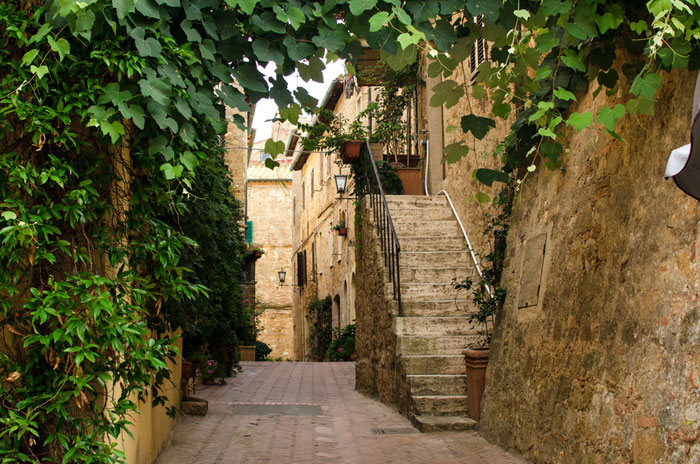
Pius insisted upon the cathedral’s precise location. Unfortunately, he chose the edge of a precipice. As a result (and despite hefty underpinning) the building is slowly cracking up. You can see and feel the slope as you walk from the door to the apse. The adjacent Palazzo Piccolomini is Rossellino’s masterpiece, a perfectly proportioned palace whose design is heavily influenced by Florence’s Palazzo Rucellai. Its hanging gardens look down the length of the Val d’Orcia. You can see the interior and gardens on a guided tour. Facing it, across Piazza Pio II, is the Palazzo Vescovile (Bishop’s Palace), originally commissioned for a member of the notorious Borgia family who later became Pope Alexander VI. (It’s sometimes called the Palazzo Borgia. ) The palace now houses Pienza’s Museo Diocesano, an eclectic collection with Flemish tapestries, medieval woodcarvings and art by Sano di Pietro. There’s another photogenic Val d’Orcia panorama from the ramparts of Pienza’s walls. Outdoor tables at the little café on the corner of Via dell’Amore (“Love Lane”) have some of the best views in Tuscany. It’s hard to believe this vast, undulating valley was formed (over millennia) by the dribbling River Orcia.
Pope Pius insisted upon the cathedral’s precise location. Unfortunately, he chose the edge of a precipice
Eat & Drink This
Pienza has an artisan rep, mainly for its for cheese: pecorino di Pienza, a hard sheep’s milk cheese . Delis along Corso Rossellino sell it in various stages of maturity: fresco (fresh, young), semi-stagionato (partly aged), and stagionato (aged). It’s the perfect picnic cheese, and a wedge tastes divine in a roll with salami or with a sliced pear and/or a slather of local honey. Enoteca di Ghino has the best selection of local wines for miles around. There is usually informal tasting available at the counter.
Out of Town
Just downhill from the town — and easily walkable — is a glimpse of Pienza before its 15th-century rebranding. The Pieve di Corsignano is an ancient (10th- or 11th-century) stone church built in the Romanesque style, with rounded arches and carved Biblical and decorative reliefs. Deeper in the Val d’Orcia, La Foce was the home of Anglo-Italian writer, Iris Origo. War in Val d’Orcia is Origo’s memoir, written as the Germans retreated (destructively) through this part of Italy, in 1943–44. Child refugees and POWs were offered safe haven, often clandestinely and at significant risk to those who lived and worked at La Foce. La Foce is also famed for its formal English/Italianate garden, designed and built by Cecil Pinsent in the 1920s and 1930s, with box hedges, wild herbs and snatched views of the Val d’Orcia. The garden is usually open to visitors on Wednesday afternoons, weekends and national holidays. Four miles north of Pienza is the remote Olivetan monastery of Sant’Anna in Camprena . The inside is mostly private, but this is a wonderfully peaceful spot to drive to and roam around. Much of Oscar-winner “The English Patient” was filmed here. San Quirico d’Orcia , 6 miles west of Pienza, is a small, tranquil town where it’s easy to fritter away a few hours in idle roaming around its (mercifully flat) streets. It grew as a rest stop on the Via Francigena pilgrims’ route to Rome . Photogenic highlights include its honey-coloured Romanesque collegiate church, part of which dates to the 11th century; and geometric 16th-century gardens known as the Horti Leonini.
Pienza’s major festival celebrates its famous cheese, pecorino di Pienza. Early September’s Gioco del Cacio al Fuso features cheese rolling and plenty of good eating.
Three Excursions from Pienza
- Montepulciano : Renaissance palaces line the steep Corso of southern Tuscany’s highest hill-town, which is also home base for one of Italy’s finest wines, Vino Nobile di Montepulciano
- Montalcino : it’s famous all over the world for Brunello wine and also has an intact fortress, an art museum and among the olive groves outside town, a perfect 12th-century abbey
- Monte Oliveto Maggiore: painters Luca Signorelli and Sodoma frescoed the Great Cloister at this remote abbey with the life story of St. Benedict
Book your luxury villa holiday
All experiences are exclusively available to you when you book a luxury villa in Italy with Tuscany Now & More. Too add on any enriching extras, contact our local Villa Specialists to share your villa shortlist and secure your stay.
(*)Please read this before completing any of our enquiry forms. The information you provide is to facilitate our response to your enquiry, a brochure request or to make a booking. Click here for our Web Privacy Statement for the full details of how your information may be stored and used.
By submitting your information, you agree that Tuscany Now & More may contact you via email or phone with commercial and informational purposes.
There is an option to discontinue direct communication and to do this simply click on this link [email protected] and follow instructions. All payments for bookings are done via a link having a Secure Sockets Layer (SSL) protocol. No information regarding credit card or debit card details is held by us.
Subscribe to our newsletter
Receive your Free ‟Tuscany in 10 Minutes Guide”
We respect your privacy. Learn how we handle your details in our Privacy Policy.
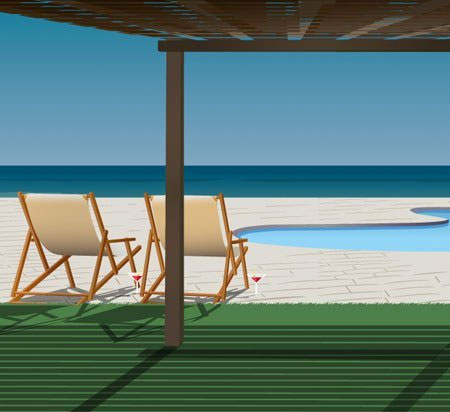
Keep in touch with Tuscany Now & More

Pienza, Italy: The Ultimate Guide to Tuscany’s Beautiful Hilltop Village
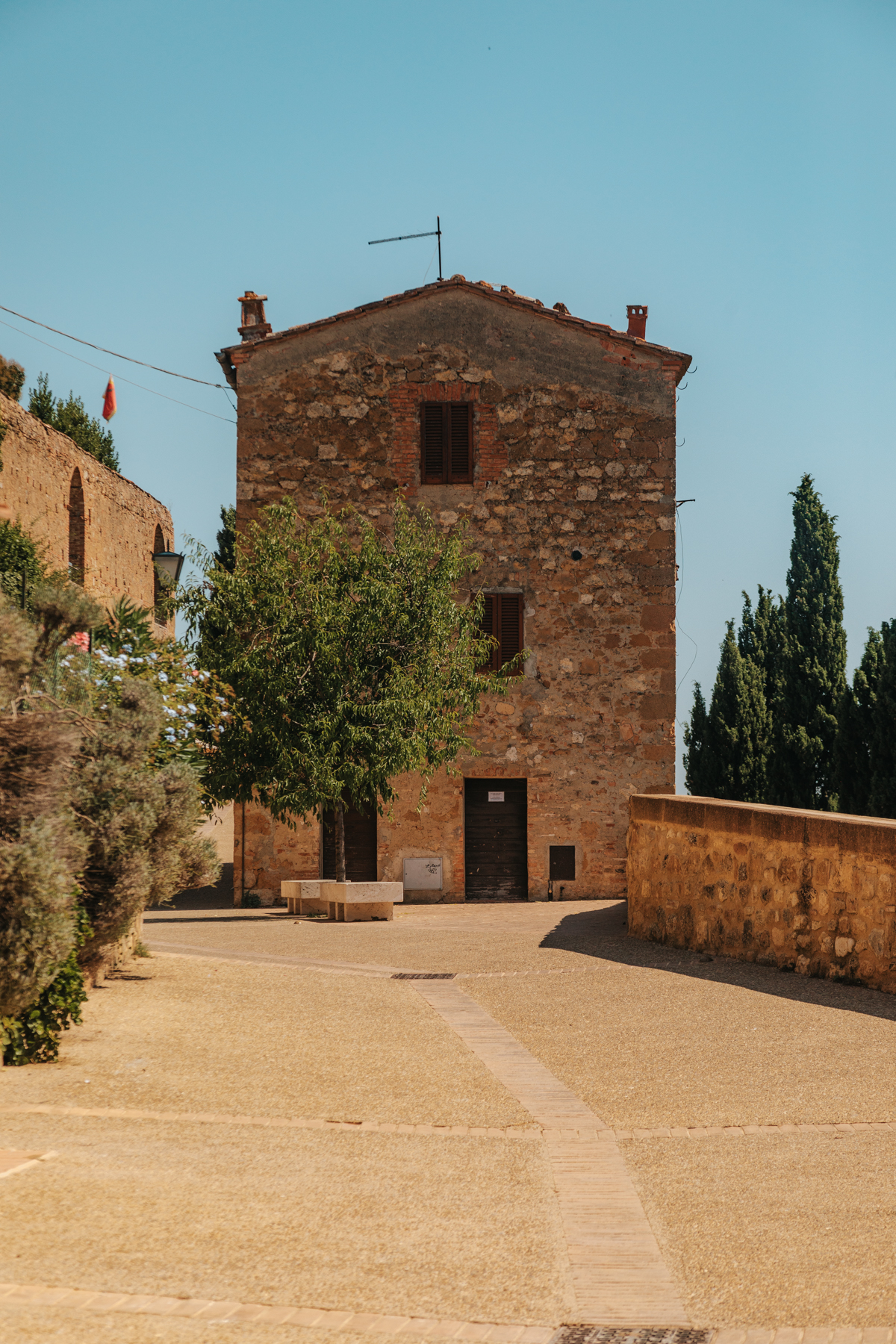
Last Updated on March 24, 2024 by Michela
During your research for your upcoming trip to Italy, I am sure you have come across a small town in Tuscany multiple times. Why is Pienza, Italy a must-visit?
Italy is full of charming villages but Pienza is the exact version of what we all picture in our heads when we imagine the Tuscan countryside.
So, you know you want to visit Pienza, but what do you need to know before you go? Read on for in-depth Pienza travel tips, the best things to do and foods to eat and the parts of Pienza that make it so special.
Some of these links are affiliate links. This means if you make a purchase through that link, I receive a small commission at no extra cost to you. Read my full disclosure !
Why You Must Visit Pienza
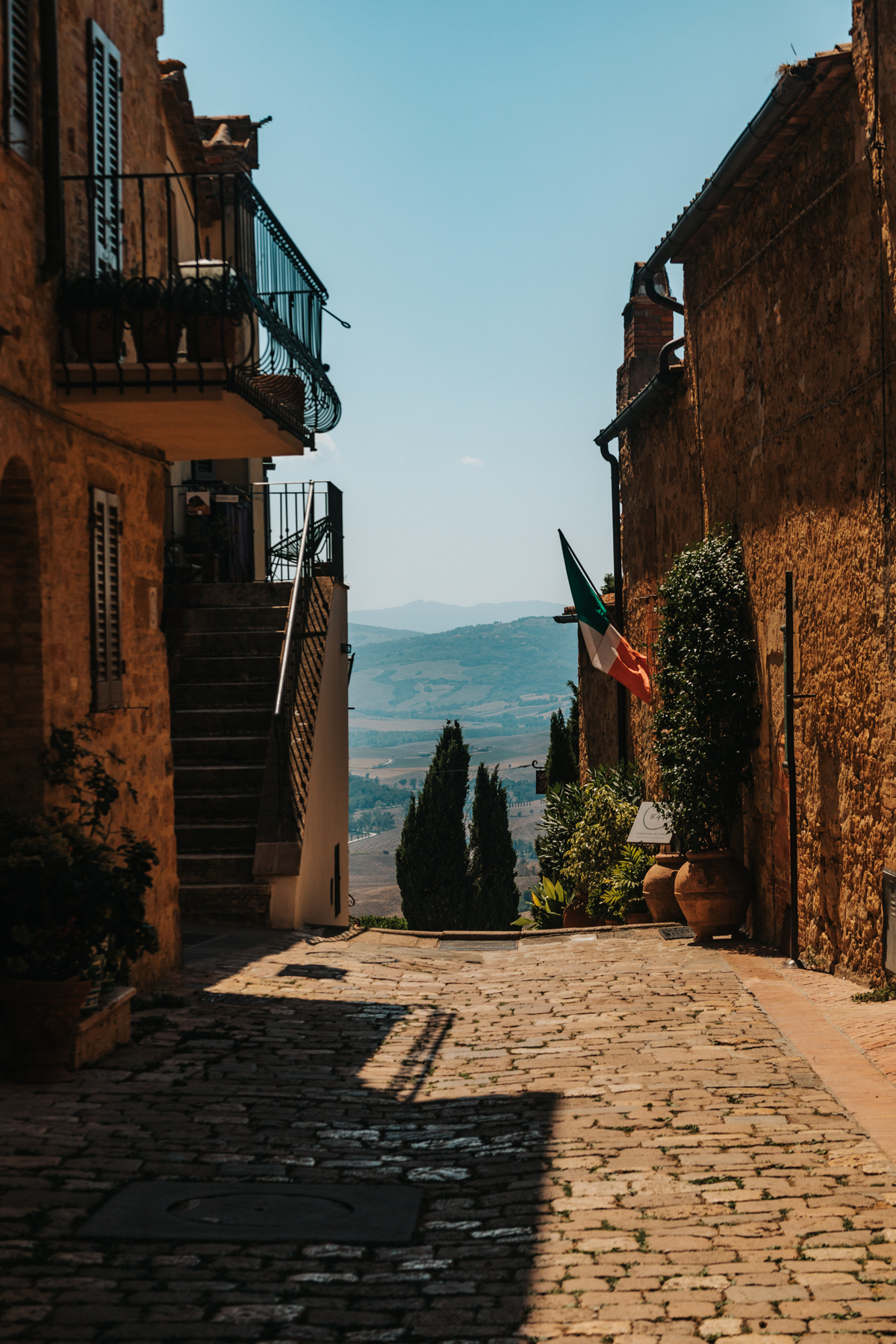
Pienza is nothing special in terms of size. It is a very small village of about 2,000 residents. But what makes Pienza so lust-worthy for travelers is something you’ve heard before: location, location, location.
Pienza is the poster town for the Tuscan countryside . Set on a hilltop overlooking the iconic Val d’Orcia, Pienza has one of the most romantic sceneries in Italy .
Beyond the trademark Tuscany cypress trees and Medieval stone streets that make Pienza so beautiful, the town also has a significant history. It was the birthplace of Pope Pius II, and its historic town center in which there are many buildings dedicated to the pope is an UNESCO World Heritage Site.
Best Time to Visit Pienza, Italy
Pienza is a town that you could visit year-round. The most pleasant time I have visited was in April : the weather was defrosting to a perfectly refreshing spring warmth and the fields were brightly green and abloom with yellow wildflowers.
April to June is the best time to visit Pienza for less people and good weather. Tuscany is also beautiful in fall, from late September to early November.
Pienza is so small that I would recommend just half a day to enjoy and explore so you can fit more into your itinerary.
If, however, your trip is completely centered around visiting Tuscany, then Pienza can be a good central base for visiting other locations.
How to Reach Pienza, Italy
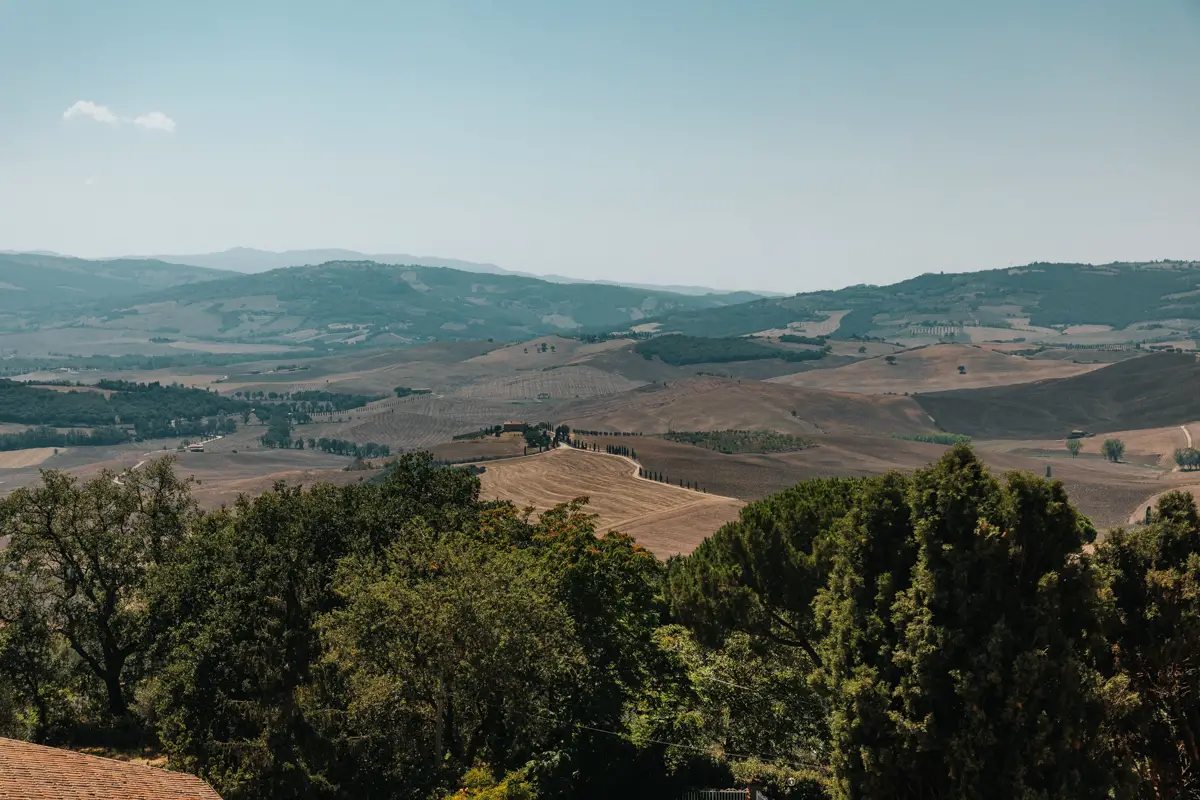
Pienza is located in central Tuscany, one hour from Siena, Italy and close to two hours from Florence.
Pienza has no train station, which can make it a bit more difficult to reach than other places in Tuscany if you are planning on just using trains in Italy .
So, what is the best way to get to Pienza?
I believe the best way to visit Tuscany is by renting a car. There is nothing like driving through the rolling hills of the countryside, which are just as beautiful as you’ve always imagined in your head.
It is also the quickest and most flexible way to reach Pienza, allowing you to adjust your itinerary accordingly based on the other things you may want to see.
Parking can be limited in Pienza during high season. If you can snag a spot, I recommend this parking lot, which is right below the main square: “Via del Cassello parking” at Viale di Circonvallazione, 25, 53026 Pienza SI. It is a paid parking lot.
There is a larger paid parking lot on Viale Mario Mencattelli.
Pro Tip : Download the EasyPark app to pay for parking from your phone and be able to adjust your stay time so that you only pay for the time you’ve actually parked.
If you are traveling to Pienza from some place like Florence, your travel time drastically increases by using public transportation: an hour and forty-minute drive becomes a three-hour and twenty-minute journey involving multiple bus changes.
I don’t recommend traveling to Pienza by bus just because of the number of stops you have to do, increasing the possibility of delays and mishaps when switching from bus to bus.
If you have specific questions about reaching Pienza by bus, leave them in the comments so I can answer directly.
By Organized Tour
Since Pienza has become famous, you will find it included as a stop on many organized day trip tours .
These kinds of day trip tours are perfect for those who have limited time, don’t want to rent a car and don’t want to worry about organizing their ride with public transportation.
That being said, they are the least flexible option since you have to respect the timing placed on you. They are also usually the most expensive option (besides renting a car.)
What to Do in Pienza
Piazza pio ii & duomo santa maria di assunta.
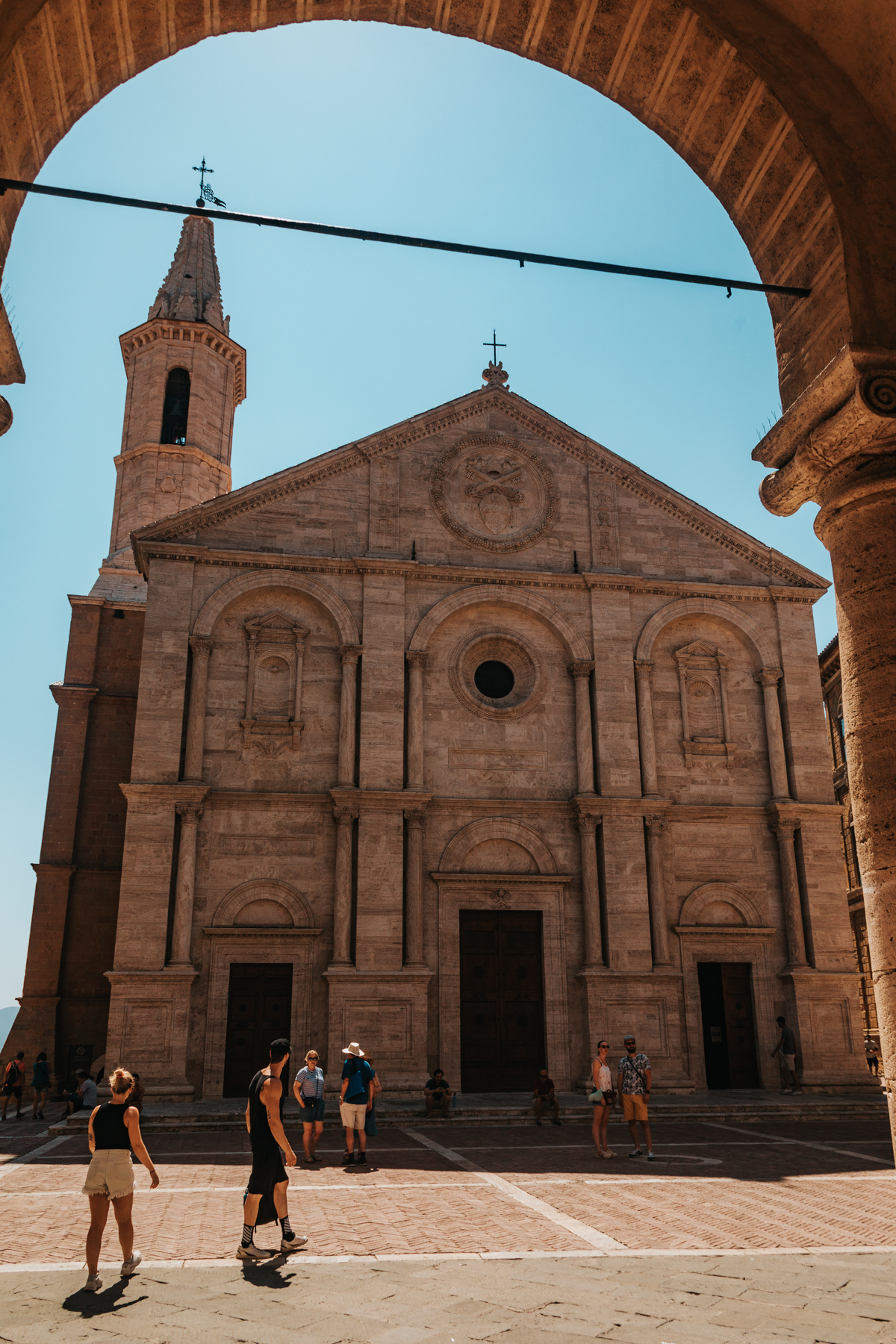
Pienza’s historic town center revolves around the Piazza Pio II and the stunning Duomo Santa Maria di Assunta.
Renaissance on the outside and gothic within, the church was reconstructed according to Pope Pius II’s wishes to make Pienza a Renaissance town.
The square is quite small and hugged by some of Pienza’s other principal buildings.
Pro Tip : To the right of the church is the most stunning view in Pienza. Fall in love with the sweeping stone staircase that opens up to the breathtaking panorama of Val d’Orcia.
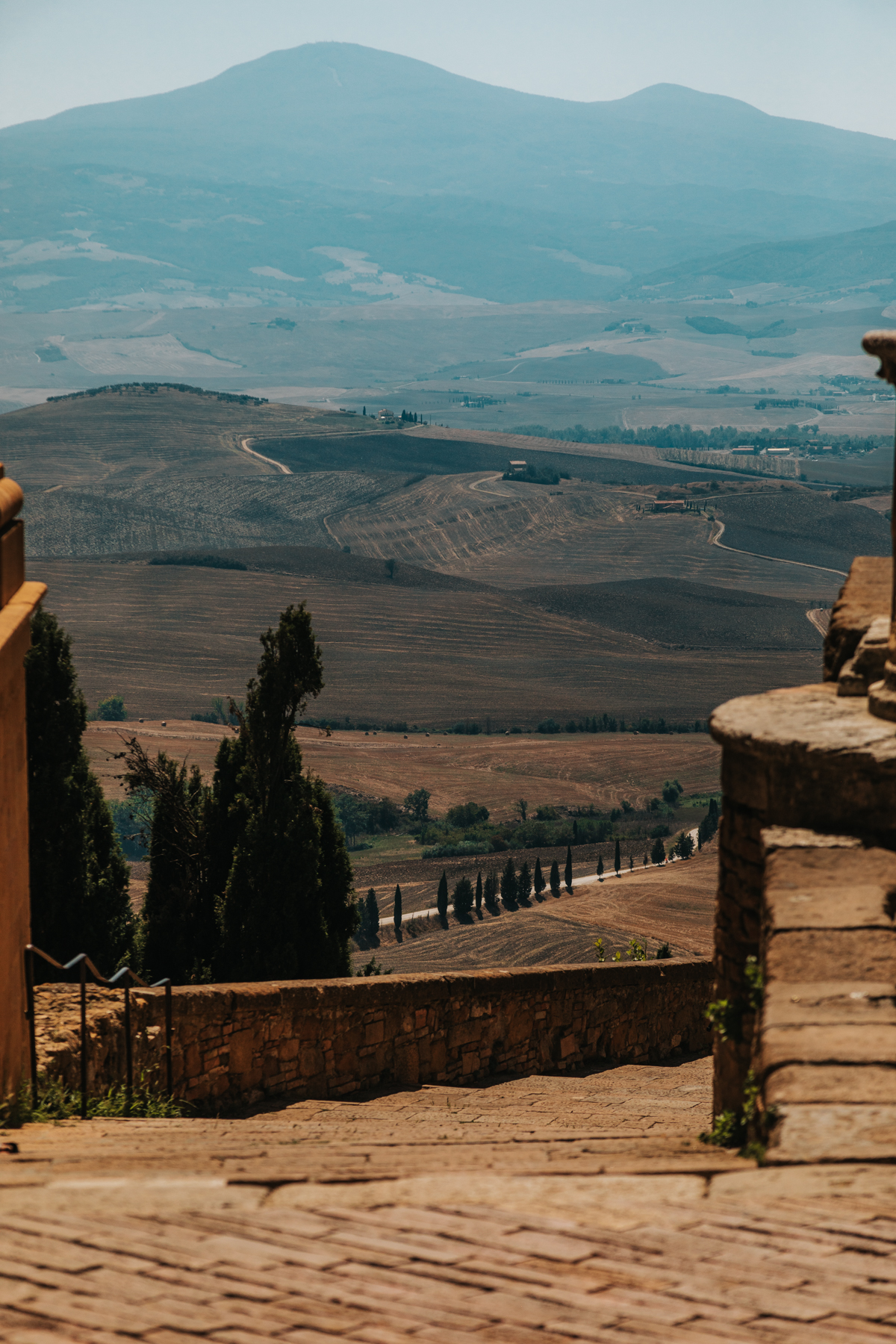
Via dell’Amore
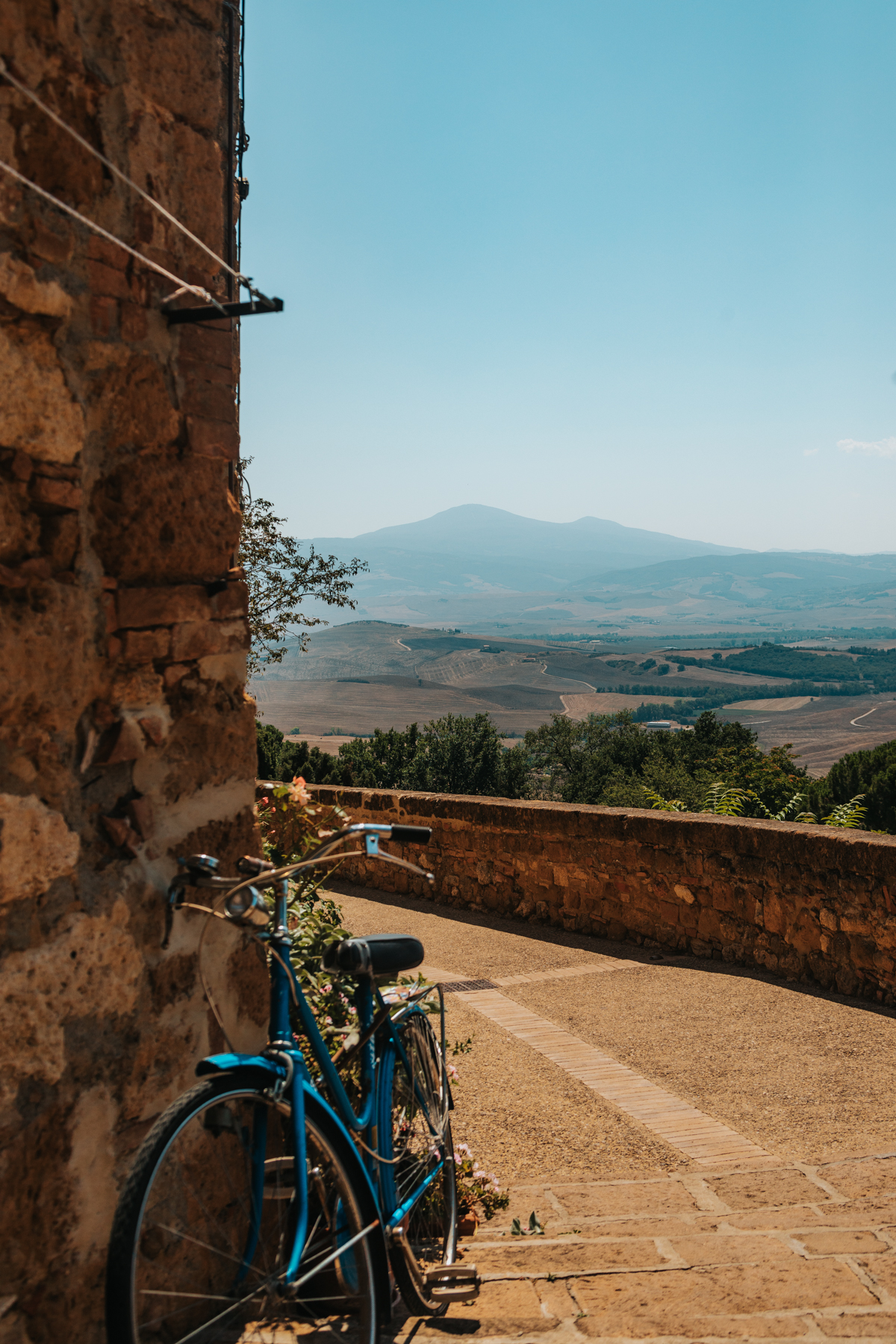
One of the best parts of Pienza is the Via dell’Amore. This is a street that stretches along the outskirts of the historic city center walls, boasting panoramic views of the Val d’Orcia.
It is the perfect area to soak in what you came to Tuscany for: iconic landscapes!
Palazzo Piccolomini & Palazzo Borgia
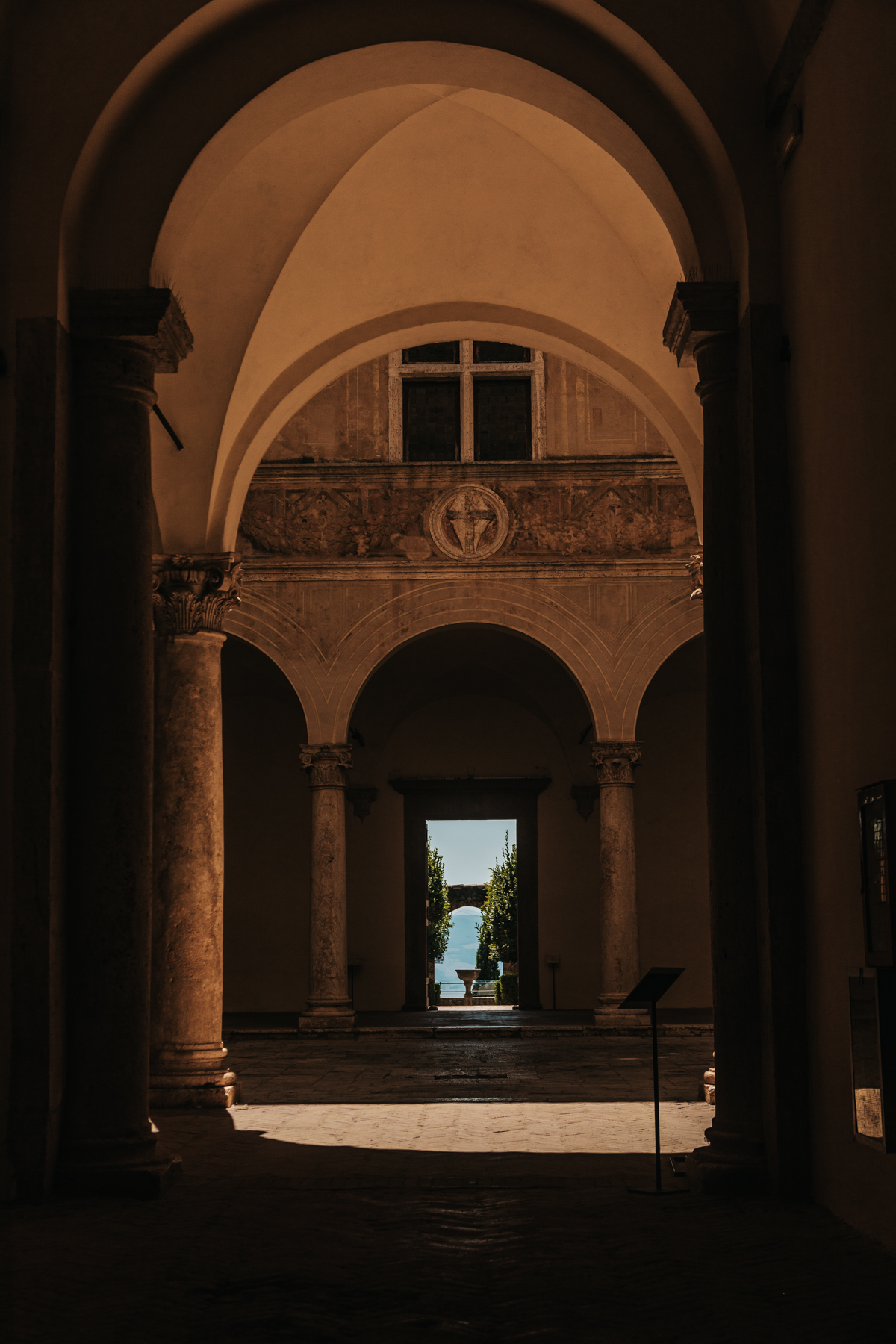
Much of Pienza’s architecture is dedicated to Pope Pius II, Enea Silvio Piccolomini, as Pienza was his summer residence.
Palazzo Piccolomini is a palace located right off the main square of Pienza. It was commissioned by the Pope Pius II and entrusted its construction to the Renaissance architect Bernardo Rossellino as part of his project to make Pienza the ideal city. In fact, it’s one of the earliest examples of Renaissance architecture.
The palace was the summer residence of Pope Pius II, but today it is a museum that you can visit.
The Palazzo Borgia houses the Museo Diocesano, a museum that holds works of medieval and modern art about or commissioned by the church in the area of Pienza.
You can get tickets for your visit here .
Eat Tuscan delicacies
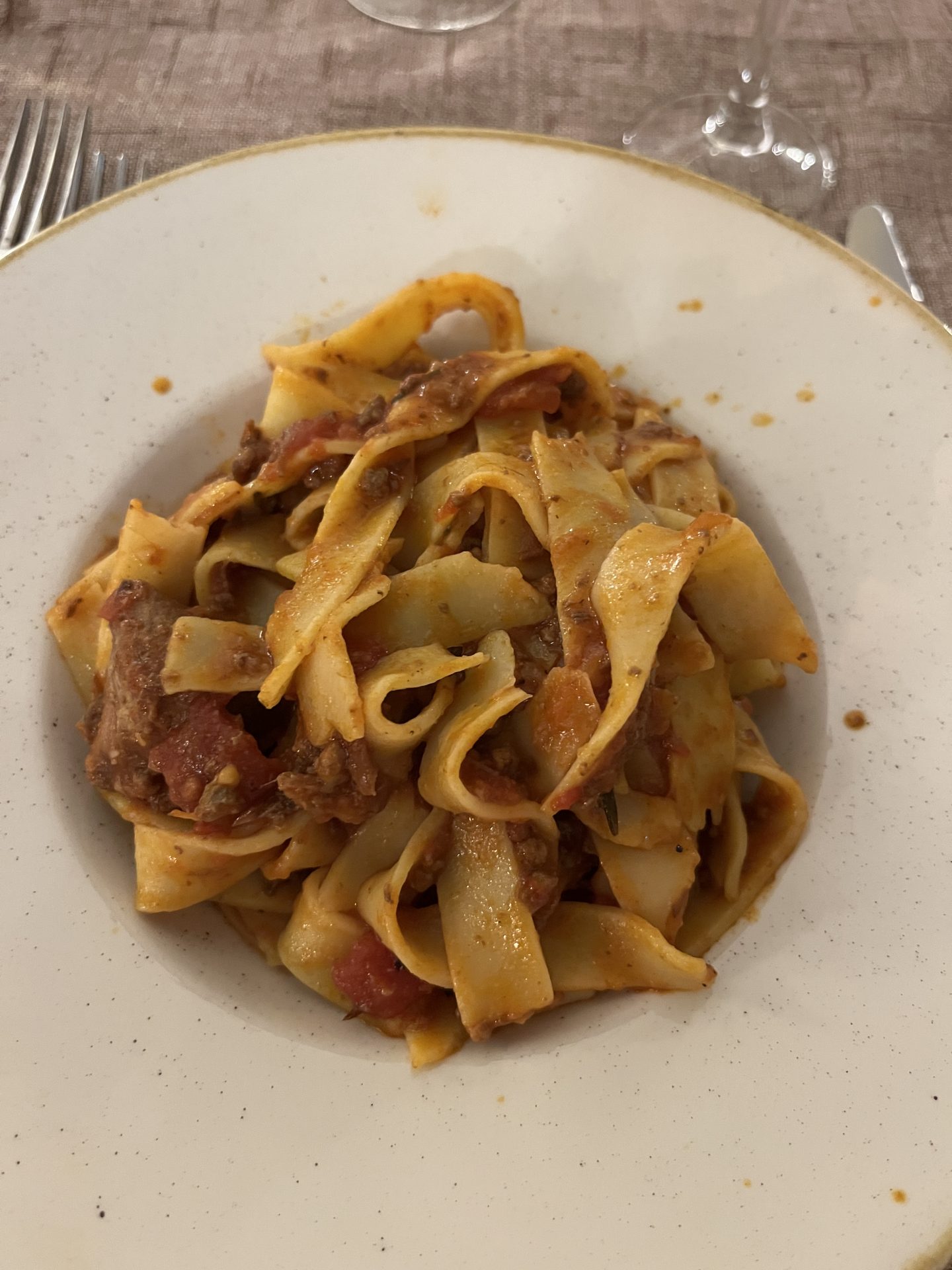
It’s no secret that being in the heart of Tuscany, you are bound to find amazing, rustic Tuscan dishes.
One of the pasta specialties is pappardelle al cinghiale , long pasta with wild boar sauce. I tried mine at Trattoria La Buca delle Fate and it was delicious!
If you are looking for a quicker lunch, then try the porchetta sandwich at Nannetti e Bernardini. Here you can also try Pecorino di Pienza, a special type of Pecorino that is only made form the 3,000 sheep that call Pienza home!
Renaissance Bell Tower
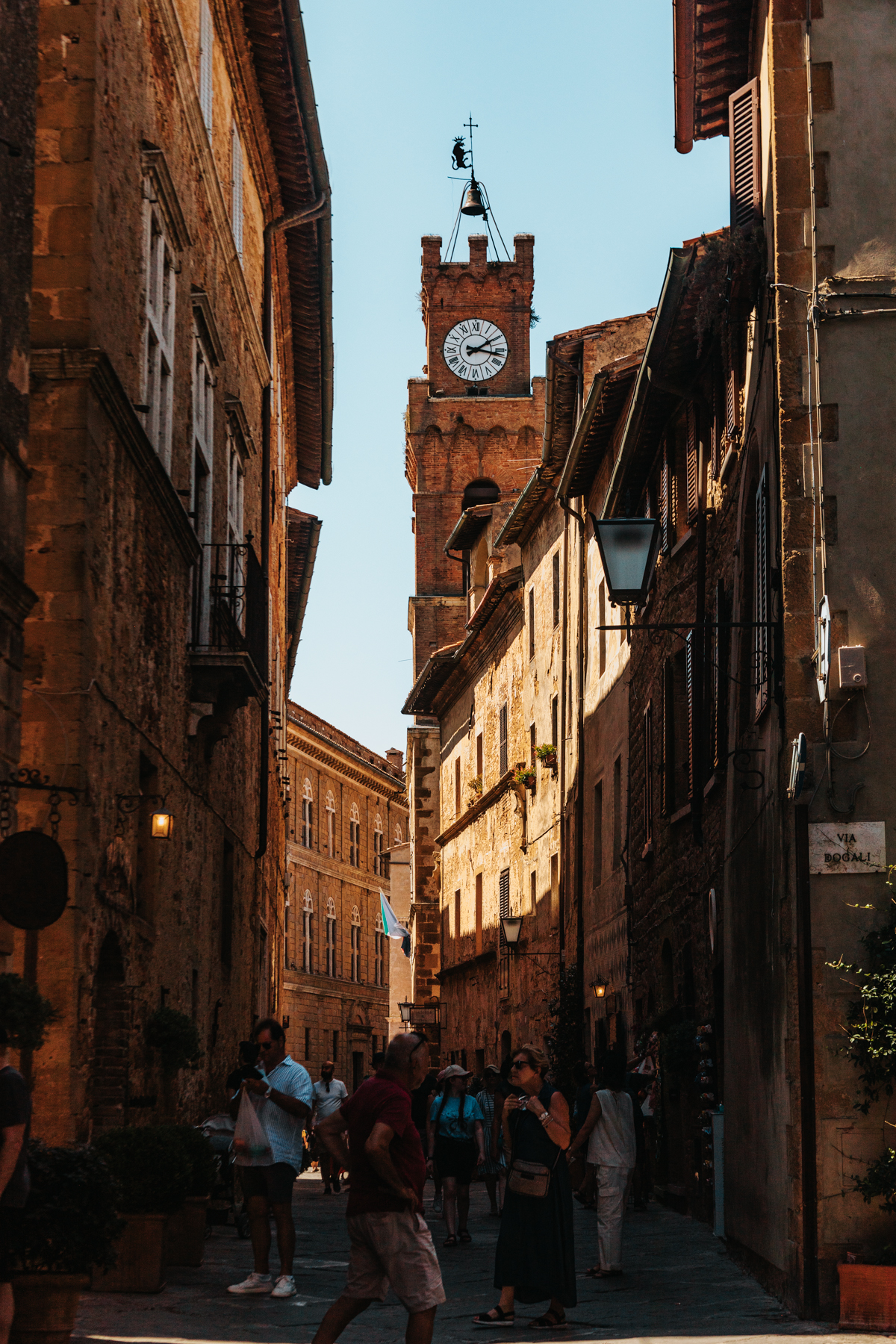
The Torre Civica of Pienza is a town fixture: in fact, it has made news because after 500 years of its bell chimes throughout the day and night, it will no longer ring from 11pm-7am because of tourist complaints.
The bell tower, which is part of the town hall building, is another example of the Renaissance-style urban planning created by Bernardo Rossellino, student of the founder of Renaissance architecture, Leon Battista Alberti.
When you travel to Pienza, seek out these architectural details that make Pienza considered the first example of the ideal Renaissance town!
Where to Stay in Pienza
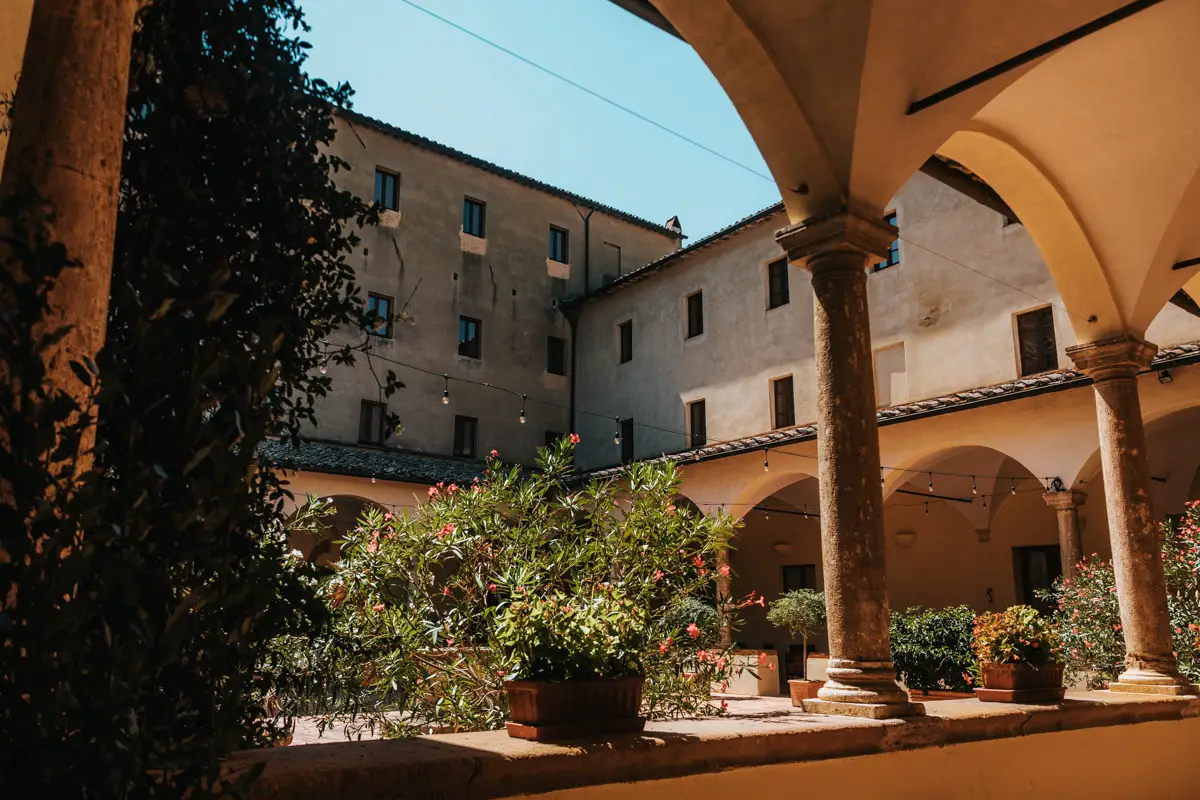
If you are on a busy Italy itinerary, you likely won’t be staying in Pienza for too long. But if you are fortunate to have a slow travel-themed trip or Pienza is a strategic location for you to spend the night to get to your next destination, there are some picture-perfect places to stay in the heart of the Val d’Orcia.
- Agriturismo Marinello : Beautiful farm stay at the foot of Pienza
- Relais Il Chiostro di Pienza : Hotel set in an old convent
- Il Giglio B&B : Room with rooftop terrace overlooking the town center
- Locanda Vesuna : Stunning farmhouse
- Hotel San Gregorio : Set in an old theater just 50m from the town center
- Relais Val d’Orcia : Incredibly unique swimming pool with countryside views
- A440 : Luxurious modern farmhouse
- La Bandita Townhouse : Upscale Tuscan retreat
The SGTD Take
Pienza is no longer a secret to foreign visitors, and this may be its only flaw. The small town crowds with tourists during the peak summer season in Italy , so it risks losing a bit of its magic.
However, for as small as it is, I have to say that I have found much worse crowds in other Tuscan towns. If you just get off the main street in Pienza, the neighborhood is almost deafeningly quiet. So despite its popularity, Pienza still holds that secret charm if you are willing to go beyond the surface.
I have visited Pienza 3 times and I cannot get enough. While I don’t think you need more than a half a day to visit Pienza, I do believe it is an essential stop to any Tuscany itinerary.
Have any questions about visiting Pienza? Leave them in a comment?
Italy Trip Planning Resources
- Accommodation : For Italy, I mainly use Booking.com to search and book places to stay.
- Booking flights : I like to search for flights through Skyscanner , but I also book direct depending on the airline.
- Activities & experiences : For things to do that require a ticket, and for more unique trip activities, I use Musement .
- Road trip : For renting a car, I get the best prices by comparing companies with AutoEurope . I then use ViaMichelin to estimate road trip costs and Autostrade.it to find gas stations/have live updates on traffic.
- Transportation : Traveling by public transportation is a great way to see Italy. I use Trenitalia or Trainline to book tickets for trains and Flixbus for long-haul bus trips.
- Accessories : I always travel with this portable charger to stay connected and with a universal adapter to accommodate Italy’s plug types.
- Need help planning an itinerary? Fill out my form for a custom itinerary request !
Save this guide on Pinterest for later reference!

Share with me in the comments your experience in Pienza, Italy !
Michela is a travel writer and photographer living in northern Italy. She is passionate about helping people make the most of their travels by sharing advice gained from her personal experiences, off-the-beaten-path destinations and time-saving quick itineraries. Browse her top articles or have her help you plan your itinerary to your dream destination!
Find me on: Web | Instagram

You may also enjoy:
The ultimate guide to visiting mantua, italy, from a local, how to organize the perfect strasbourg day trip, leave a reply cancel reply.
Your email address will not be published. Required fields are marked *
Save my name, email, and website in this browser for the next time I comment.
Website URL
Sign me up for the newsletter & access to resources from The Travel Library!
JOIN MY FACEBOOK GROUP
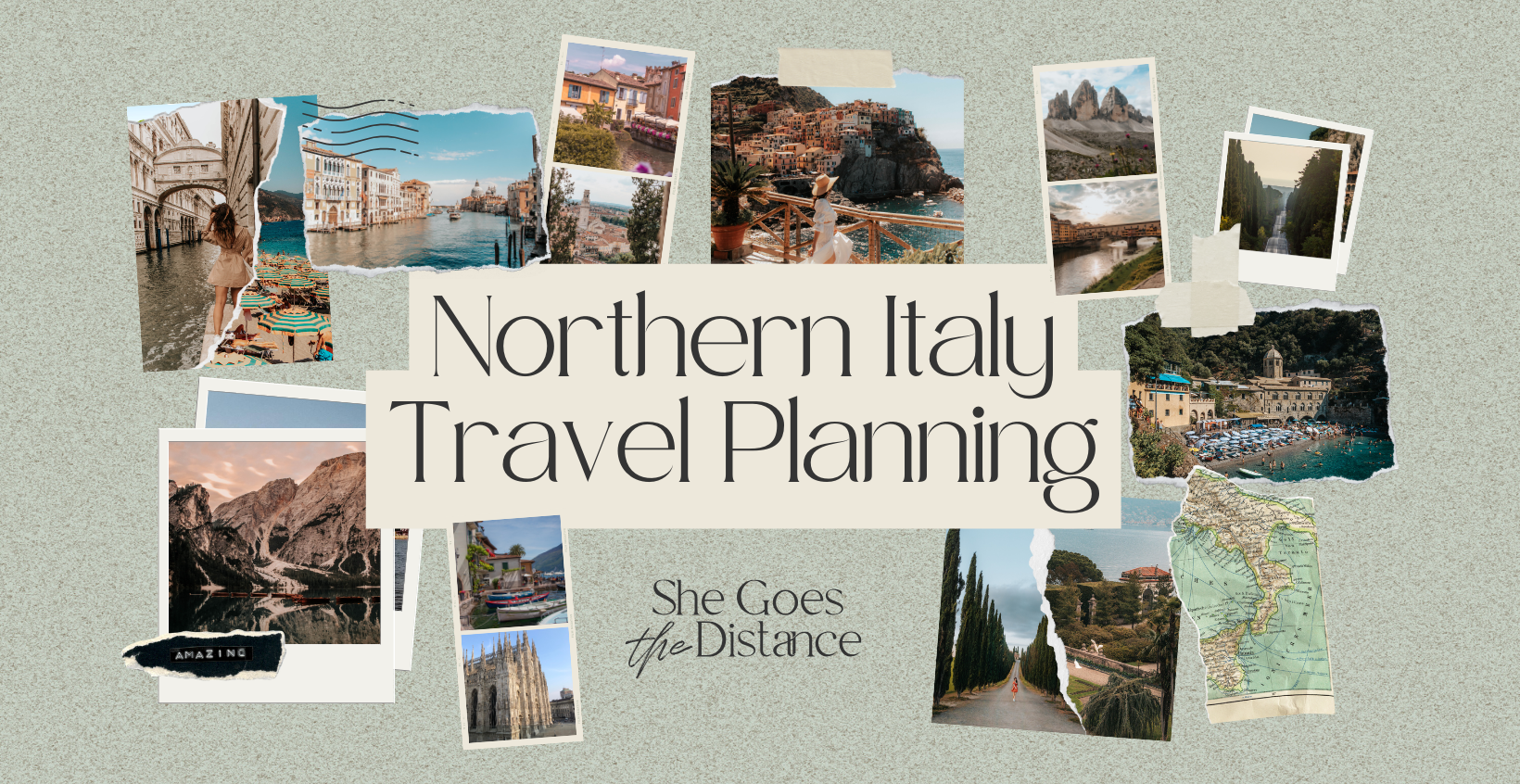
Check this out
- The Travel Library
- Privacy Policy
BUY ME A COFFEE
I love creating free resources for your travels and personally responding to your questions over chat and email.
Planning a trip to Italy?

Looking for Something?
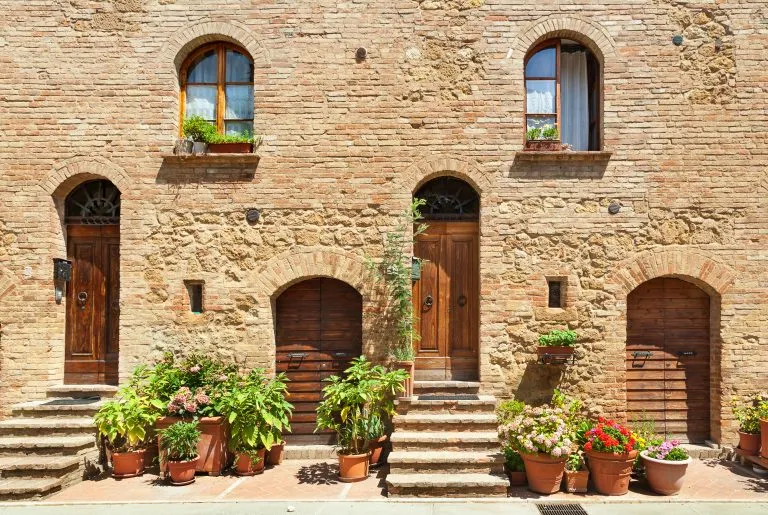
Peaceful Pienza, Italy: Things to Do + Travel Guide
Featuring gorgeous architecture and even better views, visiting the small but delightful Pienza, Italy is a fantastic addition to any trip to Tuscany.
Located in the famous Val d’Orcia, Pienza is known as the “Ideal Renaissance Town” thanks to the vision of Enea Silvio Piccolomini (later Pope Pius II), who was able to influence the transformation of his home village of Corsignano into the Pienza that we know and love today.
There are several fun things to do in Pienza, ranging from historic buildings to tour to a very famous filming location to visit, but there’s no doubt that the peaceful atmosphere and incredible beauty are the biggest draws for visiting Pienza.
We fell in love with this UNESCO-recognized town, and highly recommend a visit!
Here’s what you need to know about visiting Pienza, Tuscany, from what to do to how to get there!
Table of Contents
The Best Things to Do in Pienza, Italy
How to get to pienza, tuscany, where to stay in pienza, taking a day trip to pienza from siena, florence, or rome.
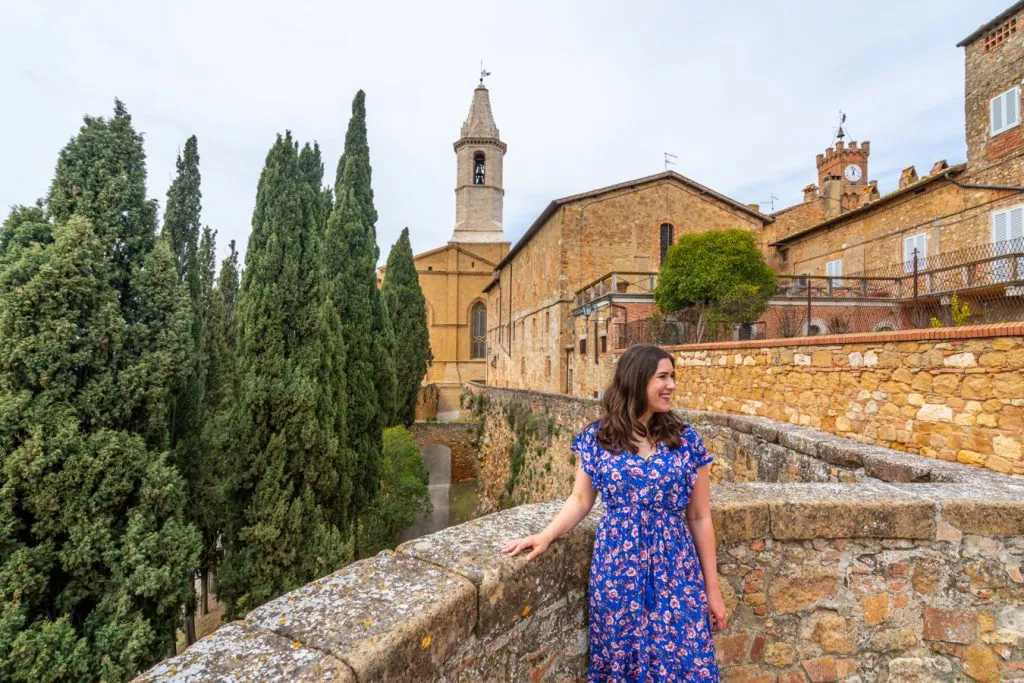
Some links in this post may be affiliate links. If you make a purchase through one of these links, we may earn a small commission at no extra cost to you. Please see our disclosure policy for more detail.
Meander along Pienza’s walls and soak in the views of Tuscany.
Strolling around the edges of this delightful walled town and enjoying the countryside views is one of the absolute best things to do in Pienza!
Not only will you be able to appreciate both the town and countryside from many angles, but you’ll also happen across several of the top attractions in town as you stroll.
If you’re visiting Pienza with loved ones, don’t miss the chance to snap your own photo with this popular “Via dell’Amore” (Street of Love) sign!
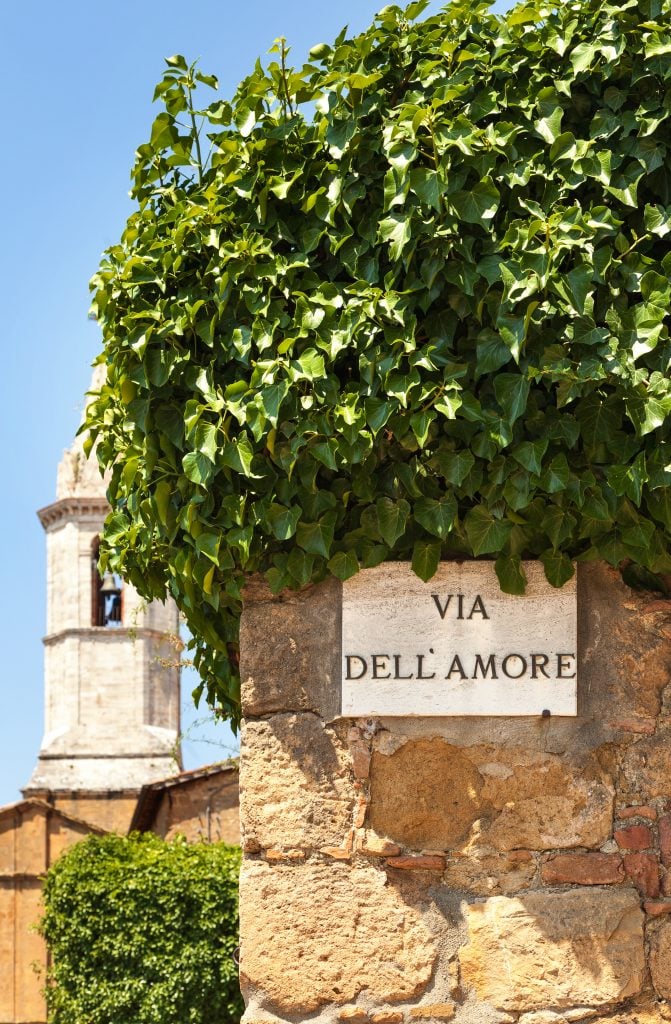
Stroll through Piazza Pio II.
At the heart of Enea Silvio Piccolomini’s project to transform his hometown into an ideal Renaissance city was this place: Piazza Pio II, the main piazza of Pienza.
Designed by architect Bernardo Rossellino in the mid-1400s, this piazza is where you’ll find several of the top attractions in Pienza, including its Duomo, the Palazzo Piccolomini, and more.
Plus–as in virtually all Italian piazzas–the people-watching is excellent here.
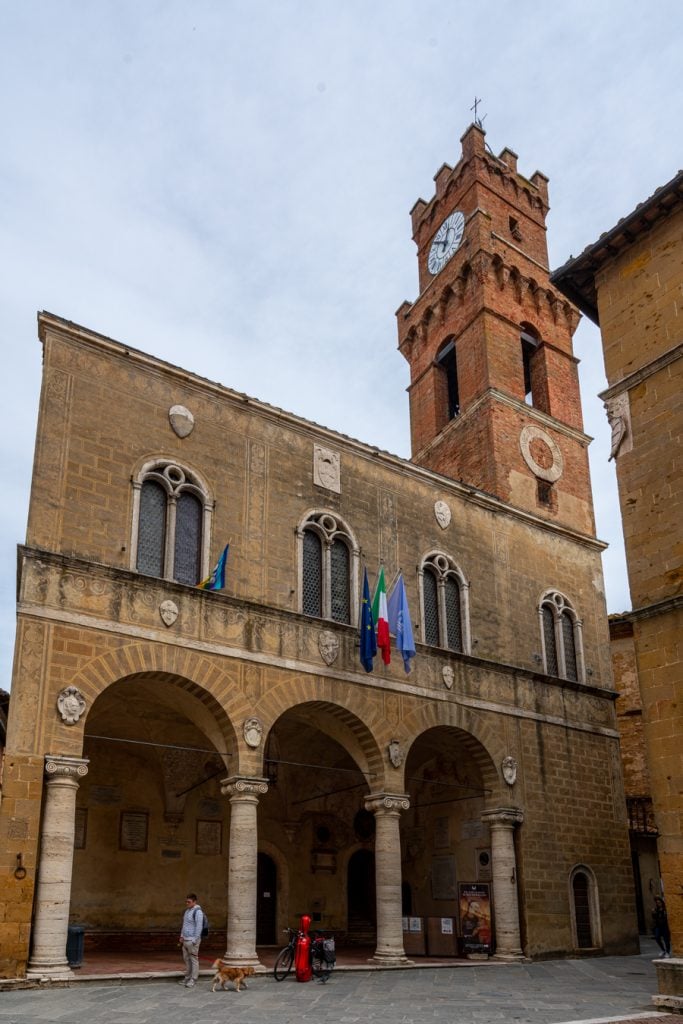
Make your way down the Corso il Rossellino.
Pienza’s main walking street, Corso il Rossellino, runs directly through the center of town.
Named for Bernardo Rossellino, the architect responsible for Pienza’s Renaissance-era transformation, many of the best things to see in Pienza are located mere steps from this thoroughfare.
Framed at one end by the Porta al Prato and the other by Porta del Ciglio, with plenty to see in between, it would be very hard to take a day trip to Pienza and not spend some time on Corso il Rossellino!
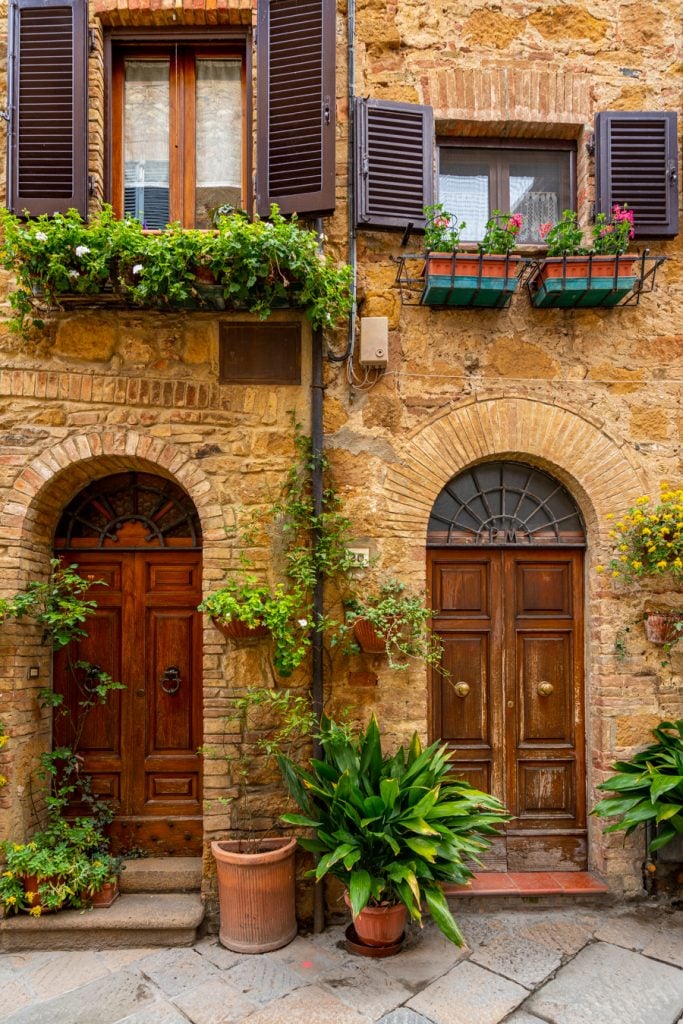
Tour the Palazzo Piccolomini.
Built as a summer home for Pope Pius II, the Palazzo Piccolomini is considered a pioneering piece of architecture in many ways, starting with its incredible rooftop garden!
Considered the first “hanging garden” of the Renaissance, it’s safe to say that Palazzo Piccolomini kicked off a trend.
The magnificent loggia, impressive central courtyard, and magnificent views of the countryside also make it obvious why Pope Pius II would consider this the ideal summer home.
Step inside Pienza’s Duomo (Cathedral).
Built in a mix of Renaissance and Late Gothic styles, Pienza’s Duomo (the Cattedrale dell’Assunta) is beautiful, and one of the crown jewels of Pope Pius II’s project to recreate Pienza.
While you’re there, be sure to step down into the crypt to explore beneath the surface, too!
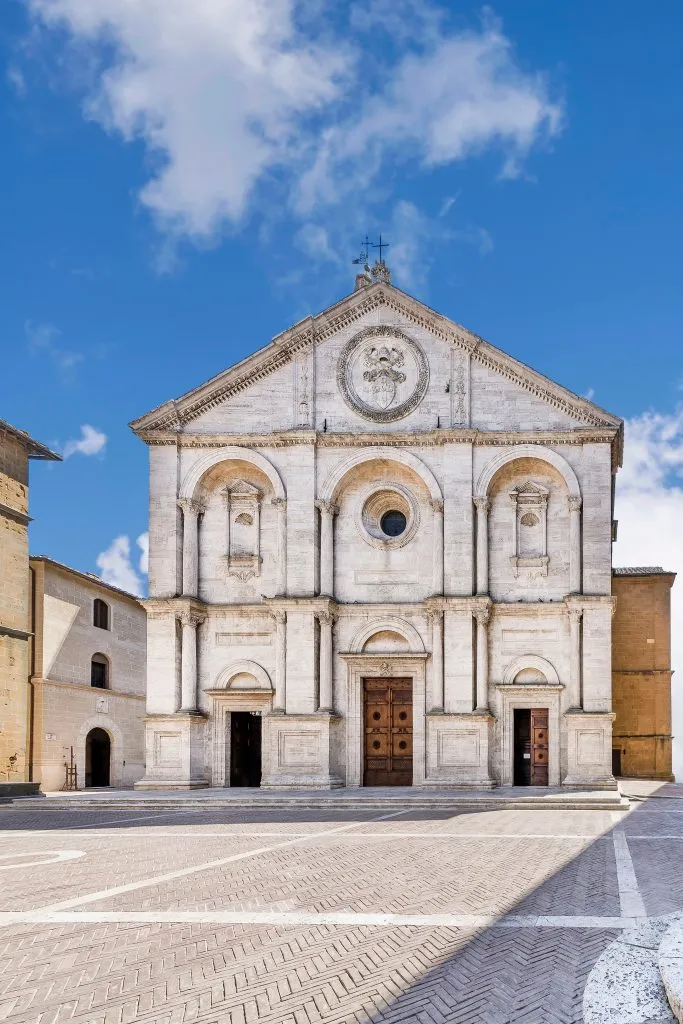
Eat lots of pecorino di Pienza.
Pecorino is one of Italy’s most famous cheese varieties, and the local pecorinio di Pienza is absolutely delicious!
This hard sheep’s cheese has a fantastic flavor and goes well paired with honey.
Pecorino di Pienza is so important to the town that virtually all day trips to Pienza include at least one tasting of it.
Don’t miss a chance to order some when sitting down at one of the many restaurants in Pienza, and–once you fall in love with it–consider stopping in a shop to buy some to take with you, as well.
If you happen to be visiting Pienza in September, you may also luck out and be in town for the “Feria del Cacio”, or Cheese Fair.
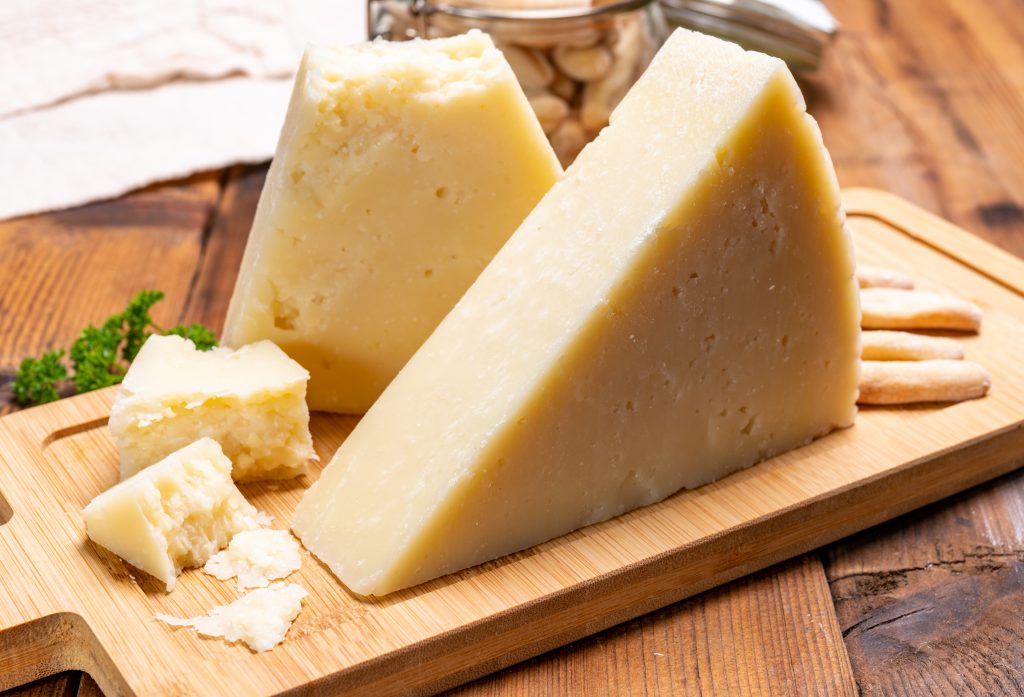
… and all the other local food, too.
For a delicious local pasta, try “pici con cacio e pepe”.
Pici is a handmade pasta typical of this part of Tuscany and is a long, round noodle that is a bit thicker than spaghetti.
Add some pecorino and pepper, and you’re in for a real treat!
Beyond pici, though, there is an endless number of local vegetables, meats, cheeses, and pastas that make eating in Pienza a true treat.
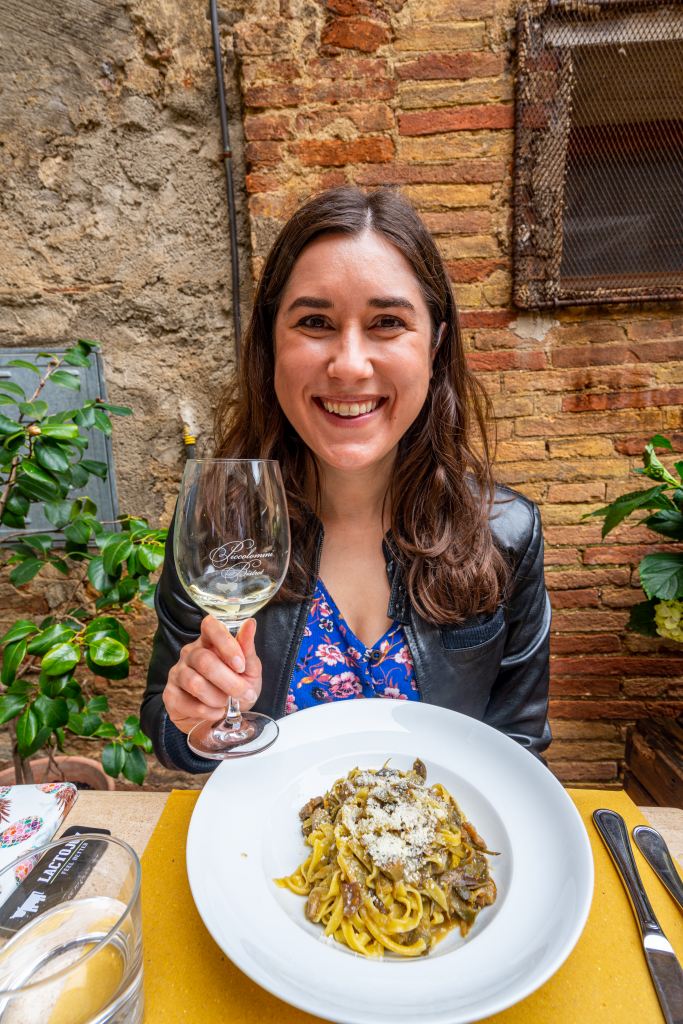
Snap photos at the Chapel of the Madonna di Vitaleta.
There’s a good chance you recognize this chapel–because it’s one of the most famous photography locations in all of Tuscany!
This small chapel is said to have been built where the Virgin Mary appeared to a shepherdess, and the chapel itself is listed as a UNESCO World Heritage Site.
It’s also located very close to Pienza and is one of the most popular road trip stops in the immediate area.
Check this article for directions to the chapel.

Step inside the Church of San Francesco.
Significantly pre-dating the Duomo, the Church of San Francesco was built by local monks in the 13th century.
You certainly can’t tell from the outside, but the interior of this church holds beautiful frescoes, though many that were once here have been lost to time.
Visit the famous “Gladiator Point”.
Big fan of the movie Gladiator ?
If so, you won’t want to miss the chance to peek at this famous road just outside of Pienza’s historic walls!
Luckily, it’s not hard to find–the viewpoint is literally marked on Google Maps as “Gladiator”.
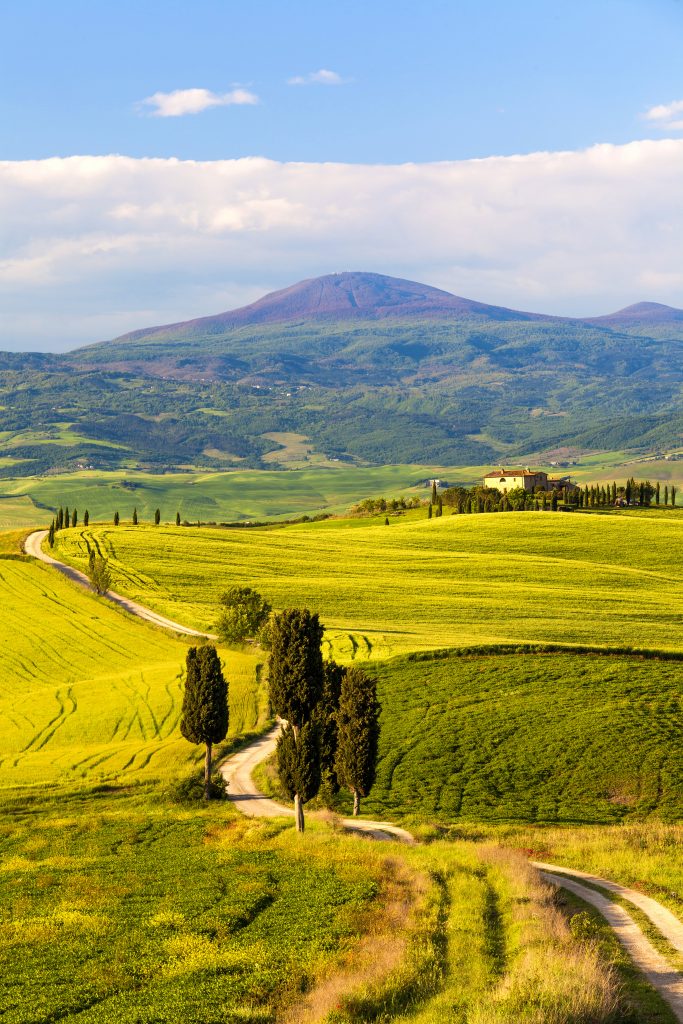
… and step inside the Pieve di Corsignano.
This small church is better known for its history and location than for its architecture, but it’s worth a quick look when visiting Pienza!
This is where Pope Pius II (the man responsible for the rebuilding of Pienza into an “ideal Renaissance town”) and Pope Pius III were baptized.
It’s also only a short walk from the famous Gladiator Point!
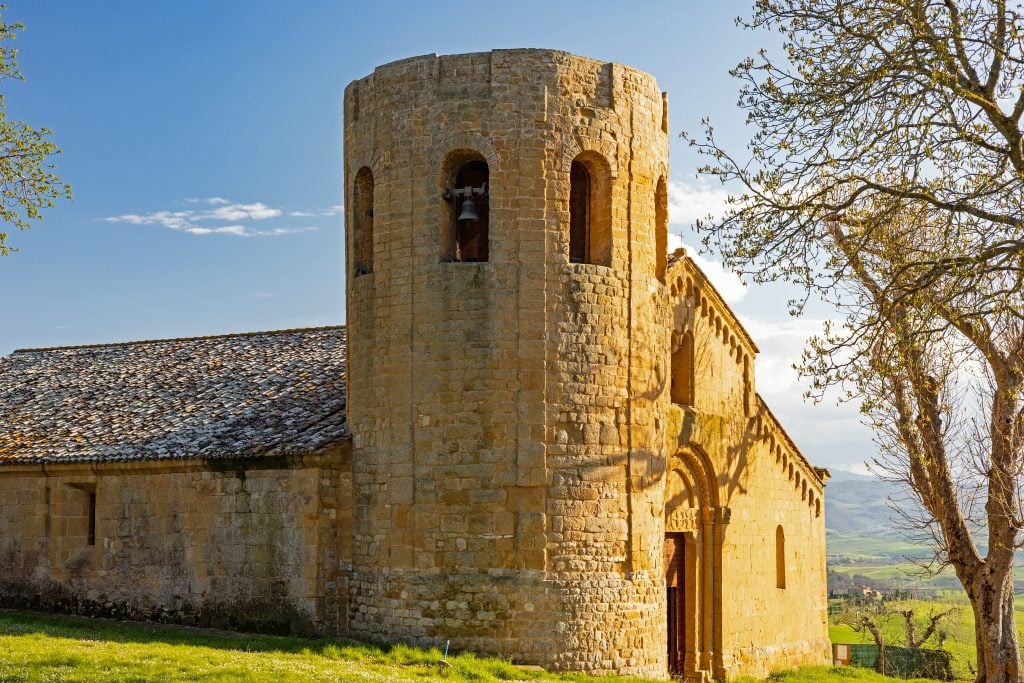
Wander aimlessly through Pienza’s small alleys, streets, and shops.
Without a doubt, one of the best things to do in Pienza is simply to wander.
As one of the most picturesque towns in Tuscany–and that is truly saying something–simply appreciating the many small streets, beautifully decorated doorways, and scrumptious shops is well worth your time.
If you take a day trip to Pienza and don’t do a single thing except enjoy the atmosphere and eat local food, it will be a day in Tuscany very well spent.
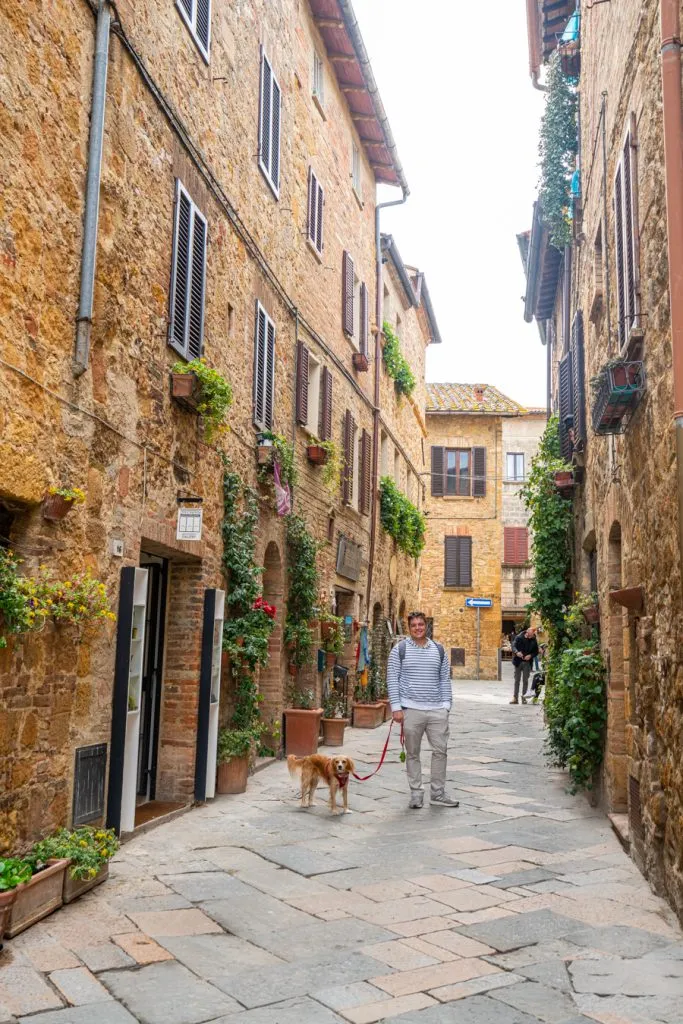
As Pienza is located in the rural Val d’Orcia and does not have a train station, by far the easiest ways to get there are either to rent a car or join a guided tour like this .
There is bus service as well, but it takes much longer, requires at least one change (coming from Florence), and leaves you pretty “stuck” once you get to Pienza, without much flexibility when it comes to exploring the surrounding area.
If you’re planning to explore southern Tuscany and the Val d’Orcia for several days, we highly recommend renting a car .
Driving in this part of Italy is quite doable and will allow you to see much more than by relying on the fairly limited bus service!
We have several tips for driving in Tuscany in our Tuscany road trip guide .
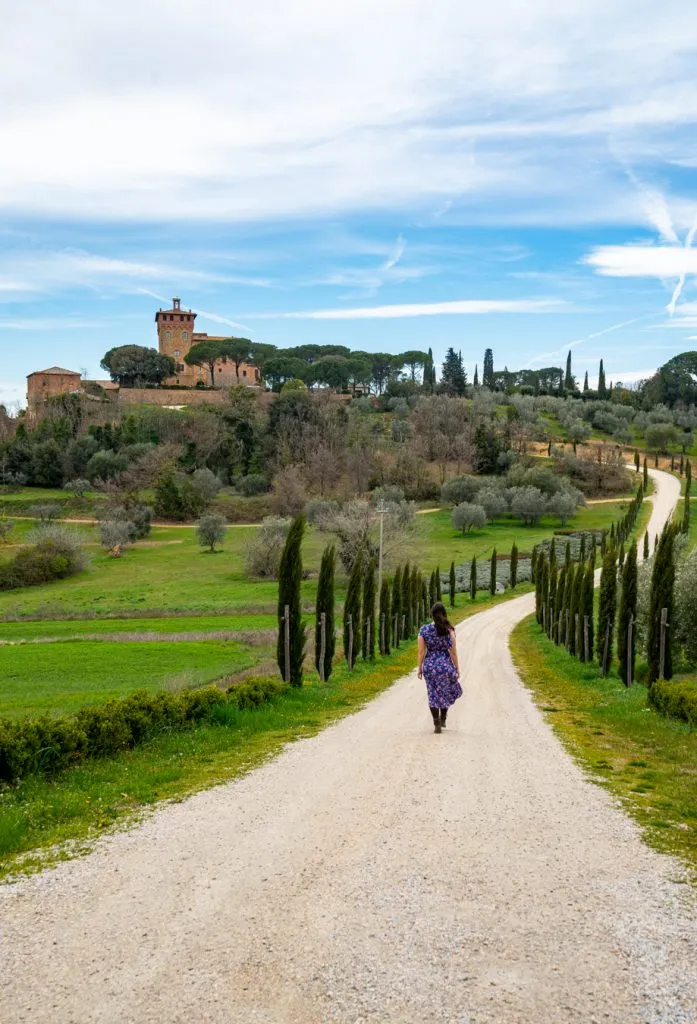
For rental cars, we recommend searching through Discover Cars , which will allow you to compare prices and inclusions of multiple companies at the same time and choose the best car for you from there.
Parking in Pienza is fairly simple, as the town is small and there is ample parking available around the edges of the walls for a small fee.
And, unlike many small towns in Tuscany, you don’t even need to climb a hill to reach the center after parking!
If you’re based in Siena, Florence, or Rome and would like to get a short taste of Pienza and the Tuscan countryside as a whole, a well-reviewed tour like this is an excellent option (more on that below).
Shop rental cars for your trip to Pienza today!
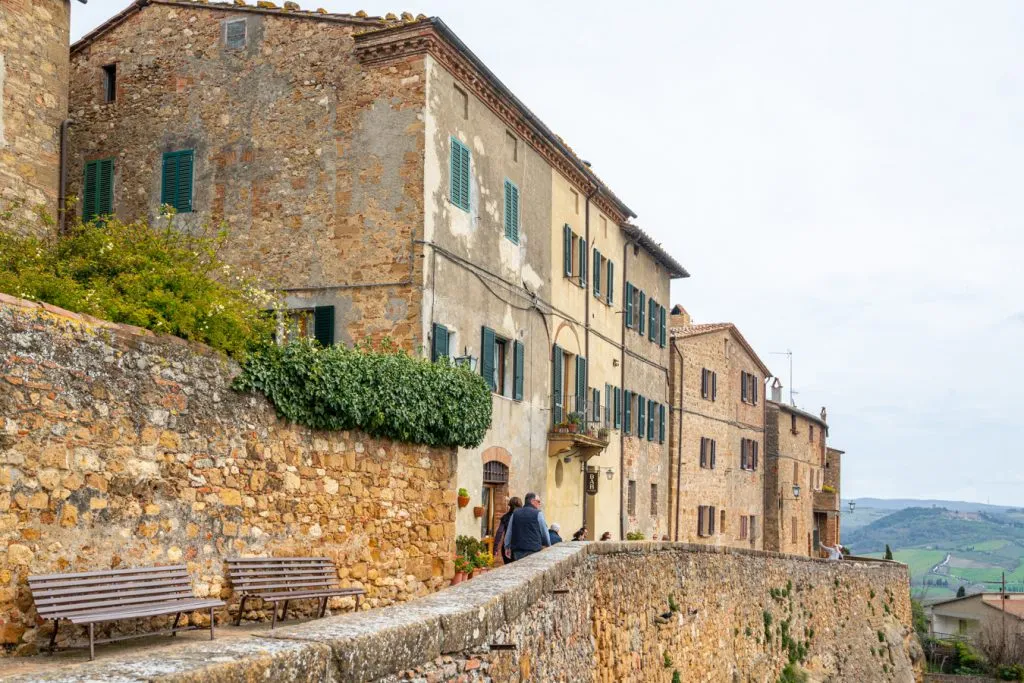
The wonderful thing about taking a road trip in Tuscany is that you can base yourself in a handful of cities or towns and visit a wide variety of places in the surrounding area without packing and unpacking!
While many visitors to Pienza choose to base themselves in nearby destinations like Siena or Montepulciano , Pienza also makes for a fantastic base.
If you’re looking for somewhere in the Val d’Orcia that is quiet, peaceful, and a relaxing place to recuperate between sightseeing excursions, consider staying in Pienza !
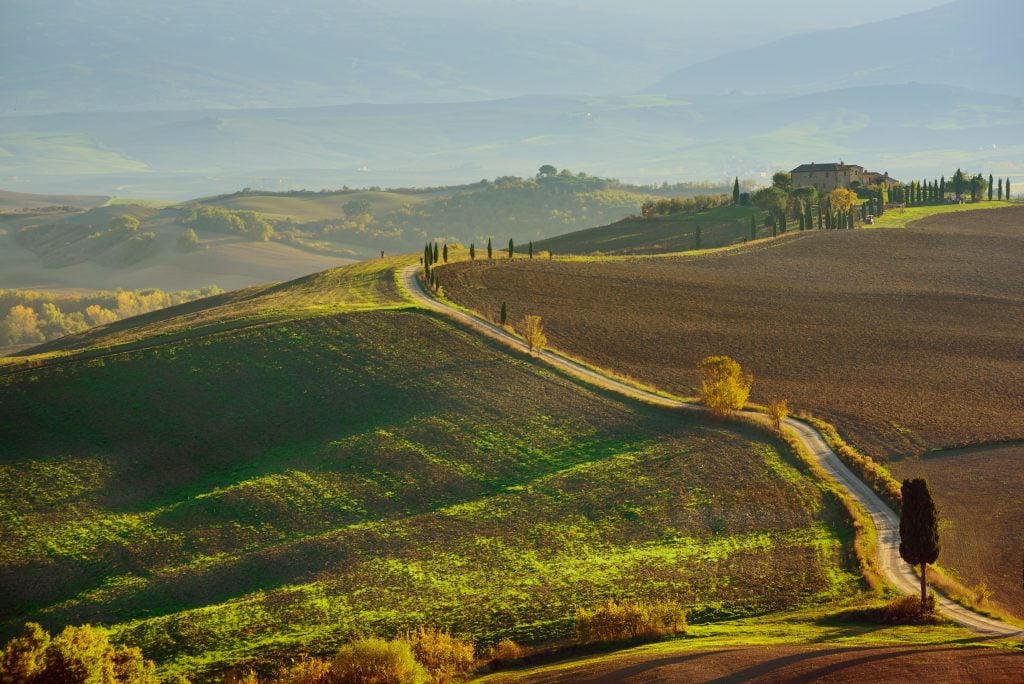
While you can stay in beautiful places like La Citta Ideale Suites right in the heart of town, spending the night in Pienza is also an excellent opportunity to try out an agriturismo.
Agriturismos generally offer incredible views, easy parking, lots of peace and quiet, and endless Tuscan charm.
Agriturismo Il Casalino and Borgo Sant’Ambrogio Resort are two of the most highly rated agriturismos in Pienza, and both would make for a fantastic stay.
And–very important for summer travelers–the Borgo Sant’Ambrogio Resort also features a pool with a gorgeous view.
Check rates & book your stay in Pienza today!
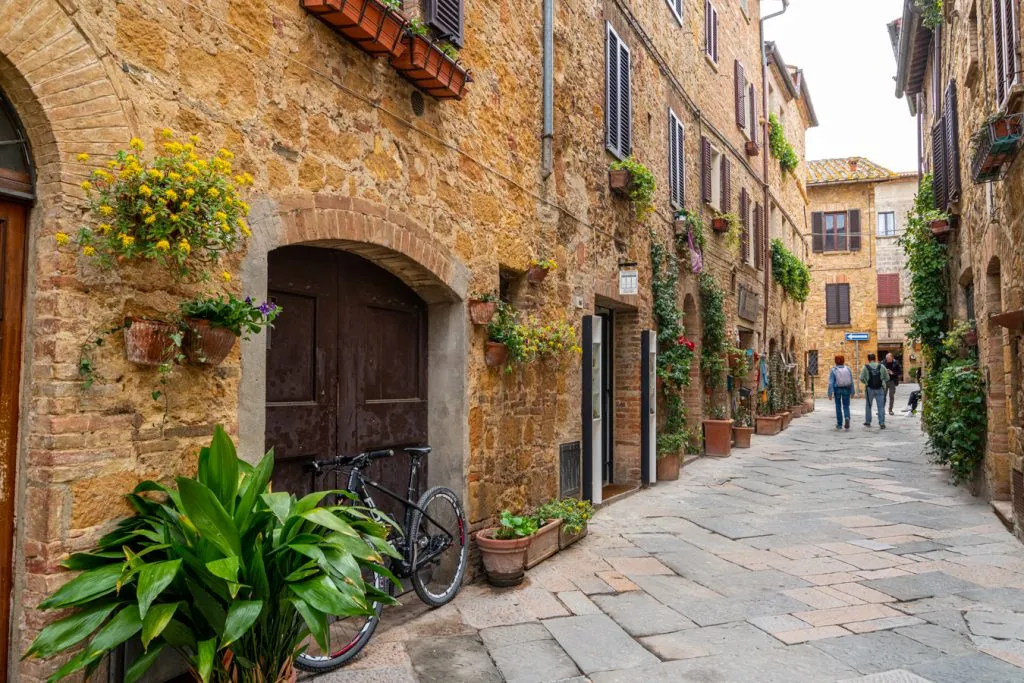
Not planning to spend the night but still hoping to enjoy Pienza?
In a town this small, that’s very doable: in fact, you can experience almost all of Pienza’s top attractions in one day (or even less, if you want to squeeze in a visit to a second village).
If you’re comfortable driving, renting a car –even if just for the day–will give you the most flexibility for taking a day trip to Pienza.
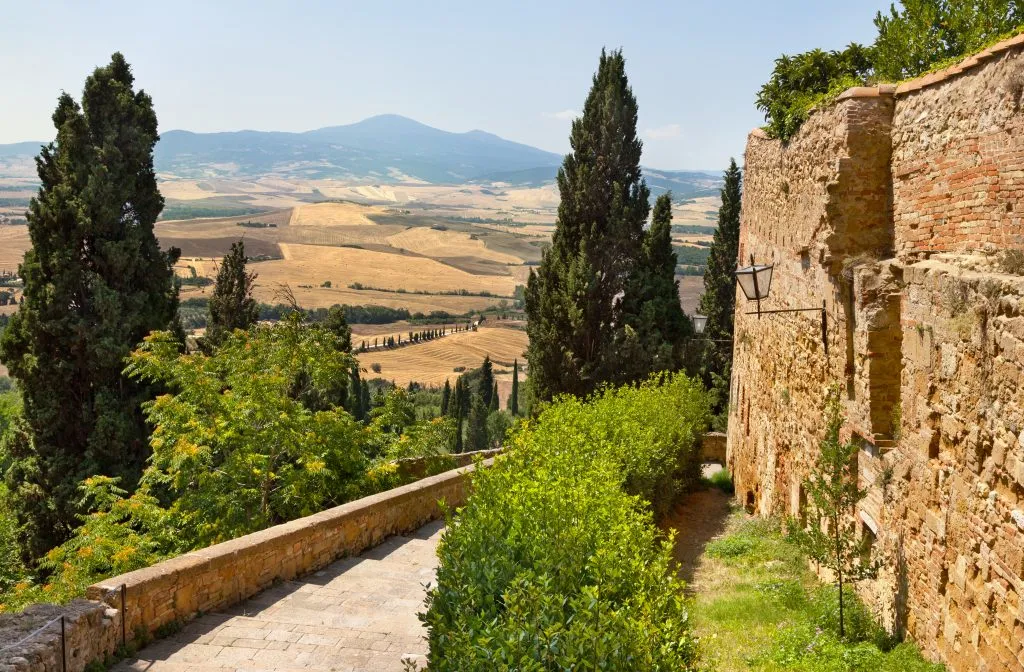
However, with such a short timeframe, you may prefer a guided tour!
Most guided tours, like this one from Rome , this one from Florence , or this one from Siena , will visit Pienza plus another town or two (usually Montalcino and/or Montepulciano ), and often include a wine and/or pecorino cheese tasting as well.
Guided day trips can be an excellent way to explore Tuscany with minimal stress, and are a great way to visit Pienza with limited time!
Shop guided day trips to Pienza today!
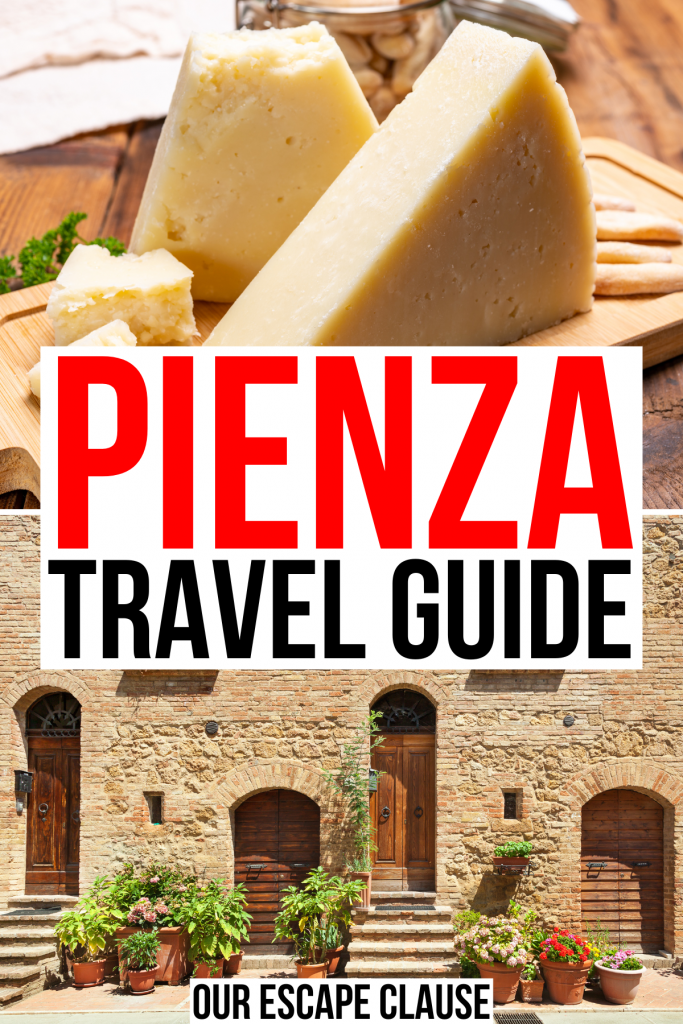
About Kate Storm

In May 2016, I left my suburban life in the USA and became a full-time traveler. Since then, I have visited 50+ countries on 5 continents and lived in Portugal, developing a special love of traveling in Europe (especially Italy) along the way. Today, along with my husband Jeremy and dog Ranger, I’m working toward my eventual goal of splitting my life between Europe and the USA.
2 thoughts on “Peaceful Pienza, Italy: Things to Do + Travel Guide”
which months were you in Pienza? I saw from google all the grass is gon left with brown spot 🙁 at the gladiator..Im going in April..
By April the Val d’Orcia will (probably) be a mix of bright green with some brown left. It depends on the year, the fields, etc. But it won’t look like winter anymore, that’s for sure!
Leave a Comment Cancel reply
- Discover Toscana
- Tours & Activites
- Taxi & Transfers
- Recover Booking
Shopping cart
€ 0.00.
Your cart is empty.
- you are here: Home
- Discover Tuscany
- Small Villages

Tours & Activities
Pienza in Italy is a Tuscan village of pure beauty and once seen, it is not easily forgotten. Pienza and its surroundings provide a rare beauty, made of rolling hills and cypress trees that dot the horizon. Along the road to get to Pienza, the ideal poetic city, you will be so fascinated by the landscape that you might be tempted to continue your car trip: do not hesitate, in the old town there are plenty of treasures, most notably the Palazzo Piccolomini. Pienza is a perfect tourism stop during the discovery of the Val d'Orcia, surrounded with other small and characteristic towns like Montalcino and Bagno Vignoni; about 50 km separates Pienza from Siena, Tuscany in Italy and even less from Arezzo.
Are you wondering what to do and visit in Pienza? Many cheese lovers and gourmets, already know that Pienza is famous for its delicious Pecorino, a cheese unique and full of tasty varieties. But the city has many other surprises and there are many other Pienza tourist attractions! A visit to a cheese farm to see Pienza cheese making in particular, is such a pleasure that it should be visited soon to discover its beauty with us!
THINGS TO SEE In Pienza you have no excuse: the town is small and it is easy to travel around without too much effort! But its impact will remain with you for a long time. Its location perched on a hill makes it one of the of the most spectacular in the Tuscan valley. Pienza offers views of incomparable beauty, to be framed in great photographs or drawings and paintings! And the historical and ancient walls of Pienza have now been declared a World Heritage Site .
We suggest starting your visit of Pienza from the famous Piazza Pio II , where Palazzo Piccolomini is located. First of all, who (or what) was Piccolomini? Enea Silvio Piccolomini was born in Corsignano (the ancient name of Pienza) in 1405. We all, however, know him under the name of Pope Pius II . During his pontificate, which lasted from 1458 to 1464 (the year of his death), Pius II took charge of rebuilding Pienza according to the dictates of the ideal city. Among his projects were the construction of the Palace and the Pienza Cathedral , both by Bernardo Rossellino . The project of the Palace is inspired by that of Leon Battista Alberti's Palazzo Rucellai in Florence; amongst the Renaissance examples available at that time, there was nothing more perfect to enhance the small town of Pienza. In the Renaissance the concept of the ideal city was thoroughly investigated through architectural and urban designs that included geometric principles as well as through a rational and scientific approach that drew on the philosophical theories of the past, including those of Plato. The revival of Pienza , the ideal Renaissance city such as Urbino or Ferrara, was therefore tied to a vision, a utopia in which the urban space was developed according to the balance and the virtues of man.
Palazzo Piccolomini and Piazza Pio II are an example of the dreams of the umanists of the 15th century. Even if you are not architects or historians you will appreciate the facade with its huge entrance and the inner courtyard which is accessed to arrive at the beautiful garden terrace : from here you will be kings and queens of the Val d'Orcia, with a truly magnificent view overlooking much of the valley. Hopefully you can you glimpse Montalcino or Mount Amiata in the distance. The walls surrounding this green terrace are covered with ivy, the rectangular flower beds are surrounded by walkways and boast rose bushes, in the middle, finally, there is a pretty 15th century fountain…Think, also, that some scenes of Romeo and Juliet by Franco Zeffirelli were shot here in 1968! In addition to the garden we advise you to visit the apartments and the papal library.
There are much more things to do when visiting Pienza, Italy than seeing the main square, such as Palazzo Borgia and the other undisputed jewel of this 'ideal' square, the Pienza Cathedral of Santa Maria Assunta . This church was built at the behest of Pius II, who, in an edict in 1462, expressed the wish that there were never any changes: 'No one must deface the whiteness of the walls or face excommunication. No other paintings must hang, no altars are to be added or new chapels opened. Nobody must change something to the beauty of the church, as it must remain as it is '. Enea Silvio Piccolomini was especially fond of his hometown and his great commitment in making Pienza an 'ideal city' was a clear testimony of this. Pienza is an artistic treasure and one of the few remaining Renaissance cities in Italy.
The stunning Cathedral in Pienza is presented to you with a travertine facade and with an apparent decorative simplicity, when seen from a distance you will notice its planned natural setting which makes it look like a stone set in the green valley. The church boasts works selected personally by Pius II and commissioned to the best Siena artists of the time such as Sano di Pietro and Matteo di Giovanni . Noteworthy especially are the wooden choir and a baptismal font designed by Rossellino.
If you want to conclude the tour of Pienza with the works of the great architect Bernardo Rossellini, take a look at the Town Hall , also located in the spectacular Piazza Pio II. Are you intrigued by the well on the side of the square? It is known as the ' well of dogs ' and with its capital columns it is one of the finest of the many wells that you will see scattered in the city.
In addition to the square - Pienza in Tuscany has surely one of the most characteristic and harmonious squares in the region- other Pienza tourism highlights include the Diocesan Museum , also known as the Cathedral Museum, housed in the Bishop's Palace (Borgia ). Since the late sixties, the museum has housed many interesting works from the period of Pope Pius II. There are eleven halls in total but we are highlighting in particular the Cope of Pius II , considered one of the masterpieces of English art of the 14th century. This precious fabric was made with a British embroidery technique weaving silk of various hues and silver. Some experts believe the author of this masterpiece was inspired by the designs of the anonymous illuminator of the famous Holkman Bible kept at the British Museum in London. Of course, in the museum's collection there is no shortage of paintings and sculptures by artists from the area of Siena. Pienza is an ideal city and will not fail to enchant you with its artistic and natural beauties!
The great poet Mario Luzi , very close to the town of Pienza, once perfectly described the landscape seen from these places and the sky above: ‘a clear vast valley, a continually changing and stupefying steadiness, the infinity written and deleted in the sky and in the open ground a thousand times a day'.
PIENZA SHEEP CHEESE Pienza in Tuscany is known by many for its cheese: Pecorino di Pienza cheese! Sheep grazing in the meadows of Val d'Orcia feed on special herbs (wormwood, meadow goat's-beard and horehound) that make Pienza cheese unique and delicious! Several methods of cheese making, salting and seasoning, which takes place in oak barrels, create many variations. Do you want to go shopping? In the cheese shops of the city choose Marzolino if you prefer a fresh cheese, Magnifico or Black if you prefer the mild and dry cheese, or Pecorino di Grotta or aged Pecorino di Pienza DOP for a stronger flavour, finally, if you are fans of pecorino di Pienza cheese then treat yourself to some spicy pecorino !
Before buying, if you can, do not forget to try and get a recommendation for the type of honey that should be eaten to enjoy your chosen cheese in the best way and have fun during tastings in the company of this fantastic Pienza cheese!
In September there is the Fiera del Cacio (Cheese Fair), dedicated to Pienza cheese tasting! During the fair you will also watch the ancient Pienza must see Palio del Cacio Fuso where players, divided by districts, commit to rolling entire forms of cheese around a wooden spindle. Taking place in the central square, the favourite place of Pienza. Tuscany traditions such as this are the basis of everyday life. Remember that God offers us good mood as first support to tackle the difficulties.
PIENZA TOUR. Walking along the streets of Pienza is already enough to feel at peace with the world. The narrow streets of the village have lovely and romantic names like Kiss Street or Love Street... Do not you feel inspired? A scenic walk along the walls surrounding the old town is also recommended. Pienza is highly recommended in Tuscany when it comes to spectacular views!
Another suggestion is to follow the signs to the Romanesque church of Corsignano , the baptism site of Pope Pius II within easy walking distance from Pienza. In addition to the original baptismal font of the time, look amongst the pillars of the church for the sculpture of the snake... It is one of the few remaining of this deity of the Roman time!
Pienza offers delicious dishes like Pici with cheese and pepper, brushetta, cold Tuscan cut meats and grilled pecorino Pienza, Italy cheese ! Find the trattorias at the bottom of the narrow streets, off the beaten track and remember to book in advance if you want to dine here on a Saturday night!
PIENZA & AROUND. Your journey should not end here. Pienza tourist attractions on the outskirts of town include, just six kilometres away the large Benedictine monastery of Sant'Anna in Camprena . How to convince you to come here? This monastery is situated between the landscapes of the Val D'Orcia and near the beginning of the Crete Senesi. The beauty of these places is such that the monastery has been used for some locations of the movie The English Patient in 1996… Do you remember the soldier Ralph Fiennes cared for by the nurse Juliette Binoche? Even if you do not like love stories, this monastery is worth a visit. In particular, the refectory boasts a splendid 16th century cycle of frescoes by Sodoma (Antonio Bazzi).
Another place that we suggest is Monticchiello of Pienza. It is a medieval village on top of a hill where there are the remains of ancient walls. In addition to the small historic centre and the beautiful Pieve of Saints Leonard and Christopher with its 14th century frescoes, we recommend that you attend an unmissable summer show at the Teatro Povero di Monticchiello , in Pienza,Siena Tuscany, Italy in July and August.
As you read, in Pienza what to do is plentiful, but why stop there? After a day in beautiful Pienza - the ideal city - we suggest you make a stop at Bagno Vignoni and enjoy the hot springs.
Pienza is also close to Montalcino where you can complete your purchase of pecorino di Pienza cheese with some Brunello wine !
Does the summer heat oppress you? If you are affected by the summer heat then you can escape to the mountains to the wooded areas of Amiata or dive into the waters of the Argentario! In any case, the rule is always the same: take your rest!
view on map
About the region, need help choosing, florence city sightseeing 24, 48 or 72 hours.
Duration: 24, 48 or 72 hours Location: Florence
Day trip to Siena, San Gimignano and the Chianti area: departure from Florence
Duration: approx. 11 hours Location: Florence
Food and wine walking tour of Florence at sunset
Duration: approx. 2 hours Location: Florence
Private guided tour of Siena with a short course in ice cream making
Duration: approx. 1 hour and 30 min. Location: Siena
Explore Pienza

Plan Your Trip to Pienza: Best of Pienza Tourism
Essential pienza.

Trending in the forums
Pienza Is Great For
Dining experiences.

Wine Tastings

Cooking Classes

Shopaholics
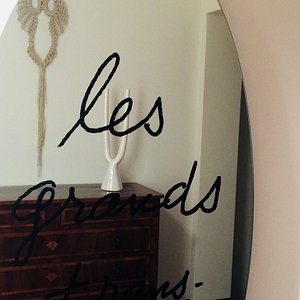
- Podere Spedalone
- La Bandita Townhouse
- Hotel San Gregorio
- Tenuta Santo Pietro
- Sette di Vino
- La Fonte Agriturismo
- La Bandita Townhouse Caffe
- Podere Il Casale
- Monticchiello
- E-Bike Tuscany
- Historic Centre of the City of Pienza
- Fattoria Pianporcino
- Brunello Wine Tour and Val D'Orcia Landscape
- Pienza: Pecorino Cheese Tour and Tasting in a Farm
- Pienza - Ebike tour for a full immersion in Val d'Orcia.
- Bike trip from Pienza to Montalcino through the Val d'Oricia
- Val D'Orcia Dreaming!!
Pienza trip planner
A tiny tuscan town with outsized renaissance architecture and the best pecorino cheese in italy.
Pienza is miniscule: just a nine blocks long and three blocks wide, still encircled by its medieval walls, and a population that—including the surrounding area—tops out at 2,231. However, what would otherwise be a scenic blip on the map has an outsized history and major draw in the form of its central piazza.
Thanks to the quirky ambition and deep pockets of a homegrown pope, the main square of Pienza—and the buildings surrounding it and stretching down the main street— were all completely overhauled by a Renaissance architect and laid out as an homage to all those paintings of "the perfect Renaissance city."
Pienza: The town that Pius built
What history owes to fuzzy accounting Have you ever heard of a major renovation project that didn't come in late and way over budget? The makeover of Pienza was no different—though Rossellino also engaged in another time-honored tradition, that of faking the account ledgers so the client (in this case, the pope) wouldn't realize how much of the papal treasury was being drained into this little ego-trip of his. It was a huge risk to take with the pope's pocketbook, but Rossellino’s gamble paid off. Pius II took a tour of his new town, and reportedly told his brilliant (if deceptive) architect: “You did well, Bernardo, in lying to us about the expense... Your deceit has built these glorious structures, which are praised by all except the few consumed with envy.” Rossellino broke down crying, and Pius II got his papal-sized dollhouse of a town. The pope almost immediately set off to Ancona to kick off a Crusade (a popular, and usually profitable, papal pastime) in order to top up the papal coffers. Unfortunately, Pius II died in Ancona in 1464, still trying to raise his army. He never returned to Pienza. He did, however, leave behind a missive that said, in so much Latin, "Don't touch anything until I get back." Pienza took the pope's final wishes seriously, and to this day has the best-preserved Renaissance center of any town in the world. Enea Silvio Piccolomini was born to a prominent family in the miniscule Tuscan town of Corsignano. He entered the church, eventually became a cardinal, and in 1458 was elected Pope. He took the papal name Pius II (Pio Secondo, in Italian).
He also hired architect Bernardo Rossellino to do a Renaissance Extreme Makeover of little Corsignano, razing the center of the village and turning it into the architectural ideal of a perfect Renaissance city. The new look begged for a new name, so the pope modestly renamed Corsignano after himself—"Pio's town," or Pienza.
The piazza is surrounded by a cathedral and three palaces, one each for the local government, for the bishop, and for Pius II himself.
The sights of Pienza
Note the huge crack that runs along the floor and up the left-hand wall neat the apse end of the church. The church was built right up to the the edge of Pienza's little cliff, which allows light to stream through its windows, but slow erosion and general subsidence of the cliff face has for centuries threatened to collapse the entire altar-end of the structure.
Palazzo Comunale
Across from the Duomo is the porticoed Palazzo Comunale, a Renaissance take on the typical medieval town hall.
Flanking the piazza are the papal palace (Palazzo Piccolomini) and the bishop's palace (Palazzo Vescovile).
Palazzo Piccolomini
This comprises a triple-decker loggia spilling over with plants above a tiny strip of box hedges, all of it rising directly atop Pienza's little cliff for sweeping countryside views that stretch across the patchwork of fields to Monte Amiata in the distance.
You can only visit the palazzo, the gardens, and the papal apartments (kept intact by the Piccolomini family, who continued to live here until the 1960s) by taking one of the half-hourly tours. Piazza Pio II, tel . +39-0578-749-392, www.palazzopiccolominipienza.it ; Closed Mon .
Palazzo Vescovile
Across the piazza, the Palazzo Vescovile (Bishop's Palace) was built by Pius II’s nephew and flunky, Cardinal Roderigo Borgia (who later became Pope Alexander VI—yes, that Pope Alexander, the infamous Borgia Pope, whose reign was rife with sex scandals, assassinations, and fratricide).
The Palazzo Vescovile now houses the town's Museo Diocesano, with some fine Sienese altarpieces by Il Vecchietta and Bartolo di Fredi. Corso Rossellino 30, tel . +39-0578-749-905. Closed Tues.; open weekends only Nov–mid-Mar.
Beyond the main square
Next door on Corso Rossellino is one of the few buildings to survive Pius II’s remodeling, the 14th-century San Francesco church, in whose dark interior are some fresco fragments.
The alley between San Francesco and the Palazzo Piccolomini leads to Via Gozzante, a walltop walk that shares the panoramic valley views of the hanging garden.
Best pecorino cheese in Italy
Pecorino glossary Ages: fresco - fresh (firm; for table eating) rosso - red (aged 3 months with a thin, red rind; for table eating) semistagionato - partly aged (semi-hard; for table eating) stagionato - aged (hard; suitable for grating) Coatings/varieties: cenerato or sotto cenere - ash (softer) peperocinato - hot peppers (spicy) tartufato - truffles (earthy) marzolino - "March" cheese (soft and creamy; available only in early spring) pecorino di fossa - aged in a cave (earthy) erbe - wild herbs The surrounding rolling grasslands raise the sheep that provide Pienza with its other claim to fame—arguably Italy's best and finest pecorino cheeses, available in multiple styles and flavors at the handful of shops and boutiques in this tiny town.
Many cheeses are also cured or aged in various wrappings or coatings, imparting still more flavors (some producers actually mix flavors into the cheese itself—bits of black truffle are popular—but purists scoff that this mars the taste and the cheese).
Luckily, nearly every shop in town will let you sample for free so you can decide for yourself. See the "Pecorino glossary" box on the right for a list of the more popular varieties. Among the best cheese shops are:
- La Bottega del Cacio, Corso Rossellino 66, tel . +39-0578-748-713
- La Bottega del Naturista, Corso Rossellino 16, tel . +39-0578-748-081, www.affittacamerelavite.it/links.htm
- Delizie della Valdorcia , Via Dogali 2 (at Corso Rossellino), tel . +39-0578-748-686, www.deliziedellavaldorcia.it
As a bonus, most cheese shops double as wine enoteche, and—since, unlike its wine-crazy neighbors in Montalcino, Montepulciano, or the Chianti region, Pienza has no world-class wines of its own to trumpet—the advice in these shops tends to be a bit less partisan and more honest when it comes to the various merits of the mighty red wines of Tuscany.
Planning a trip to Pienza
- Planning your day: You can easily knock off Pienza in an hour or two—though I do recommend a tour of the Palazzo Piccolomini and, as just about any other town in Italy, you are rewarded for lingering longer by getting a better sense of the town and its people.
- Visitor information in Pienza: The Pienza tourist office is in the center of town at Corso il Rossellino 30, on the south side of Piazza Pio II ( tel . +39-0578-749-905, www.comune.pienza.siena.it )
- From Florence: Context: Day in the Val d'Orcia
- From Siena: Small-Group Montepulciano and Pienza Day Trip
- Montepulciano & Pienza: Full Day Wine Tour from Florence or Siena
- How to get to Pienza: Pienza is 33 miles southeast of Siena (and just 24 km/15 miles east of Montalcino and 14 km/9 miles west of Montepulciano ). It lies on the SS146 from San Quirico d'Orcia to Chiusi. By car, just take the SS2 south from Siena to the San Quirico exit, then the SS146. Getting there by public transport is trickier. The closest train station is in Chiusi Scalo, but from there you'd have to take a bus ( www.trainspa.it ) to Montepulciano (48–63 min.) and then another bus to Pienza (14–17 min.). From Siena , the best bet is to take one of five daily Tra-In buses ( www.trainspa.it ); the ride takes about 75 minutes. (If you're leaving Pienza, the tiny Edicola Libreria newsstand/bookshop at Piazza Dante 8 double as the bus depot, with schedules and tickets.)
- Near Pienza: Montepulciano (15–20 min. by car or bus); Siena (75 min. by bus); Chianti (90 min. by car ).
Tips & links
Tourist info office: Ufficio Informazioni Turistiche di Pienza Corso il Rossellino 30/Piazza Pio II, Pienza tel . +39-0578-749-905 www.comune.pienza.siena.it Useful private websites: www.pienza.info www.ufficioturisticodipienza.it www.portalepienza.it
- Context: Day in the Val d'Orcia ( Pienza, Montalcino, Sant'Antimo )
- Small-Group Montepulciano and Pienza Day Trip from Siena
★ Hotel Relais Il Chiostro Di Pienza [€€] Hotel Arca di Pienza [€€] Hotel Il Giardino Segreto [€€] Hotel Antica Locanda [€€] » More hotels in Pienza (from €76) » B&Bs in Pienza (from €59) » Apartments in Pienza (from €70) » Agriturimsi near Pienza (from €79)
- Tourism info
- Italia.it (national tourism authority)
- Beniculturali.it (historic and cultural sites ministry)
- Culturaitalia.it (cultural patrimony)
- Coopculture.it (runs many major museums and ancient sights)
- Multi-day tours
- Intrepidtravel.com
- Gadventures.com
- SelectItaly.com
- Infohub.com
- Walks, activities, tours, & guides
- ContextTravel.com
- City-discovery.com
- Gear & clothing
- Backwoods.com
- Travelsmith.com
- Magellans.com
- Booking.com
- Hostelz.com
- HotelsCombined.com
- Priceline.com
- Bedandbreakfast.com
- Bed-and-breakfast.it
- Hostelworld.com
- Bbitalia.it
- Karenbrown.com
- Apartments & villas
- Rentalo.com
- Homeaway.com
- Belvilla.com
- Interhomeusa.com
- Villasintl.com
- Craigslist.org
- Hostels & campgrounds
- Hostelbookers.com
- HostelsClub.com
- Residence hotels
- Biz-stay.com
- Agriturismo (farm stays)
- Terranostra.it
- Turismoverde.it
- Agriturist.it
- Momondo.com
- AutoEurope.com
- CheapOair.com
- Cheapflights.com
- CheapTickets.com
- Airport transfers
- Rome: Adr.it
- Milan: Sea-aeroportimilano.it
- Venice: Veniceairport.it
- Florence / Pisa: Aeroporto.firenze.it , Pisa-airport.com
- Palermo: Gesap.it
- ItaliaRail.com
- Raileurope.com
- Trenitalia.com
- Autoeurope.com
- RentalCars.com
- CarRentals.com
- AutoSlash.com
- Europebycar.com
- Renaultusa.com
- Short-term leases
- Car resources
- Emergency service/tow: tel . 803-116
- Highway agency: Autostrade.it (traffic info, serivce areas, toll calculator, weather)
- Italian automotive club (~AAA): Aci.it
- ZTLs: Ztl-italia.blogspot.com (lightly outdated, but handy, links to cities' traffic-free zones)
- Regional & long-distance bus (coach) info
- Orariautobus.it
- Italybus.it
- Oraribus.com
- Cruisedirect.com
- Expedia.com
- Cruisecompete.com
- Onlinevacationcenter.com
- Vacationstogo.com
- iCruise.com
- Cruisecritic.com
- Cruisemates.com
- Smallshipcruises.com
- Shore excursions & port transfers
- City-Discovery.com
- Shoretrips.com
- Traghettilines.it
- Traghetti.com
- Aferry.co.uk
- Directferries.com
- Traghettionline.com
- Navigazionelaghi.it (lakes)
Related pages
- Pienza hotels
- Pienza restaurants
- More Tuscan hilltowns
- Tuscany itineraries
- Pefect Italy itineraries
- Italy destinations
- Italy planning FAQ
Share this page
Search ReidsItaly.com
- Amalfi Coast
- Cinque Terre
- Lake District
- All Italy regions
- Map of all regions
- Emilia Romagna
- Trentino Alto-Adige
- Leaning Tower of Pisa
- Sistine Chapel
- Michelangelo's David
- Da Vinci's Last Supper
- Grand Canal of Venice
- Blue Grotto
- Brunelleschi's Dome
- Chianti vineyards
- Ponte Vecchio
- Basilica of St. Francis
- Temple of Concord
- Mole Antonellina
- Castel del Monte
- Secret Hotels
- Vietri sul Mare
- The Chianti
- Planning FAQ
- Riomaggiore
- Monterosso al Mare
- Lake Maggiore
- Lake Lugano
- Lake Varese
- Lazio lakes
- San Gimignano
- Montepulciano
- Tuscan Itineraries
Shortcuts to popular planning sections:
Airfares , Cars , Trains , Tours , Packages , Cruises , Lodging , Itineraries , Info , Packing , Prep , Comm
- Top 10 tips
- Getting to Italy
- Save on airfares
- Tours & Specialty trips
- Vacation packages
- Getting around in Italy
- Italian trains
- Renting a car
- Save money on transportation
- Top 10 lodging tips
- Amazing alternatives to hotels
- Booking hotels
- How Italian hotels work
- The hotel hunt
- Hotel scams & rip-offs
- Save money on lodging
- Top 10 planning tips
- Time to budget for cities
- Daily itinerary tips
- Sights to book ahead
- Perfect city & regional itineraries
- If you have one week...
- If you have two weeks...
- The countdown calendar
- Book a tour
- Book airfare
- Book hotels
- Book a rental car
- Book train tickets & railpasses
- Book a cruise
- Book sightseeing
- Get travel gear
- Choose guidebooks
- Information, guidebooks, & passports
- Packing lists & tips
- Money matters
- Shopping & taxes
- Health, safety, & insurance
- Communications: Italian lessons to cellpones
- Saving on airfares
- Saving on train travel
- Saving on car rentals
- Saving on cruises
- Saving on lodging
- Saving on dining
- Saving on sightseeing
- Free sightseeing
- Free lodging (honest)
- Free dining (seriously)
- Worst savings tips
- Sightseeing tips
- Microtours of cities & sights
- Save money on sightseeing
- Dining tips
- Save money on dining
- Top experiences
- Italian icons
- Culinary adventures
- Alternative accommodations
- Once-in-a-lifetime
- Reid's offbeat experiences
- Italian skills
- Learn something new
- Italian modes of transport
- Opera & concerts
- Get religion
- Sports & outdoors
- Retail therapy
This article was written by Reid Bramblett and was last updated in April 2015 . All information was accurate at the time. about | contact | faq » THE REIDSITALY.COM DIFFERENCE « åß Copyright © 2008–2017 by Reid Bramblett . Author: Reid Bramblett
Like ReidsItaly? Try ReidsEngland.com
An Italian Mama's Guide to Italy
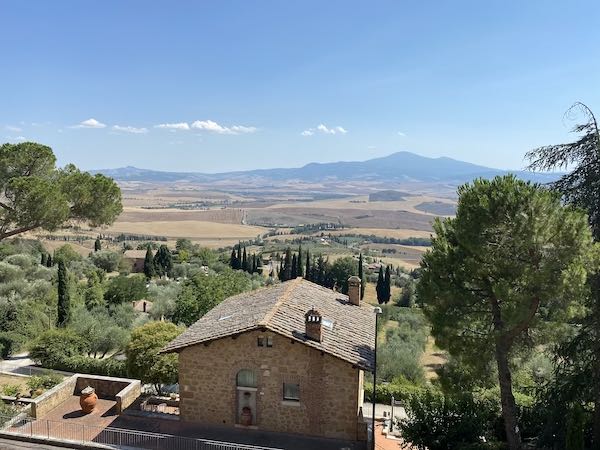
Pienza Italy: why you will love Tuscany’s ‘Ideal town’ and the travel tips you need to plan a visit
All you need to know to visit Pienza Italy: what to see in Pienza, what makes it special and the travel tips you need to visit this beautiful Tuscan hilltop town.
Have you ever visited an ideal city? If you find yourself in Tuscany, you can do just that by visiting the wonderful town of Pienza!
Perched on top of a beautiful hill in scenic Val d’Orcia , Pienza is a small town with incredible history.
Originally just a village like many others in the area, Pienza saw his history and fame change in the late 1400s.
At that time, the town gave birth to Enea Silvio Piccolomini, aka Pope Pius II, who decided to honor his town by turning it into an ‘ideal city’. A follower of Humanist vision and philosophy, he turned Pienza into an urban utopia and we can still see the result of his vision today.
Today, Pienza is a beautiful hilltop town in Tuscany with a distinct character, stunning location and interesting history.
This is all you need to know to plan a visit.
What is special about Pienza
Pienza is a renaissance town built to embody the Humanist vision of the ‘ideal city’.
Such an ambitious design came into existence thanks to Pienza’s most famous citizen, Enea Silvio Piccolomini (Pope Pius II).
Born in the town, Enea Silvio Piccolomini decided to redesign his small village and make his beloved hometown the embodiment of humanist architectural harmony and ideas.
He gave the job to architect Bernardo ‘il Rossellino’ and the great humanist Leon Battista Alberti.
In 3 years they built the stunning Piazza Centrale, Pienza Cathedral, the Papal Residence, and the Municipal palazzo, effectively creating a new town, the city of Pius: ‘Pienza’
Happy with the result of his redesign, Pius II made Palazzo Piccolomini his summer residence and if you are lucky enough to come to this part of the world, it is easy to see the reason behind this choice.
Pienza is a gem: the architecture blends into the landscape beautifully and the town offers some of the most beautiful views over the Orcia Valley you can ask for.
This plus pretty alleys, excellent food and a strong tourism vocation make Pienza one of the best towns to visit in the area.
Please note: this post contains affiliate links. Should you make a purchase, we might make a small commission.
Who should visit Pienza
Pienza is suitable to all types of visitors and in particular:
- Cultural tourist and lovers of history
- Families (Pienza is car free and has a lovely playground)
- Foodies – Pienza is famous for its pecorino cheese!
- Photographers – for the stunning landsape photo opportunities in and near the town
- Movie lovers – the last scene of ‘Gladiator’ ws film here!
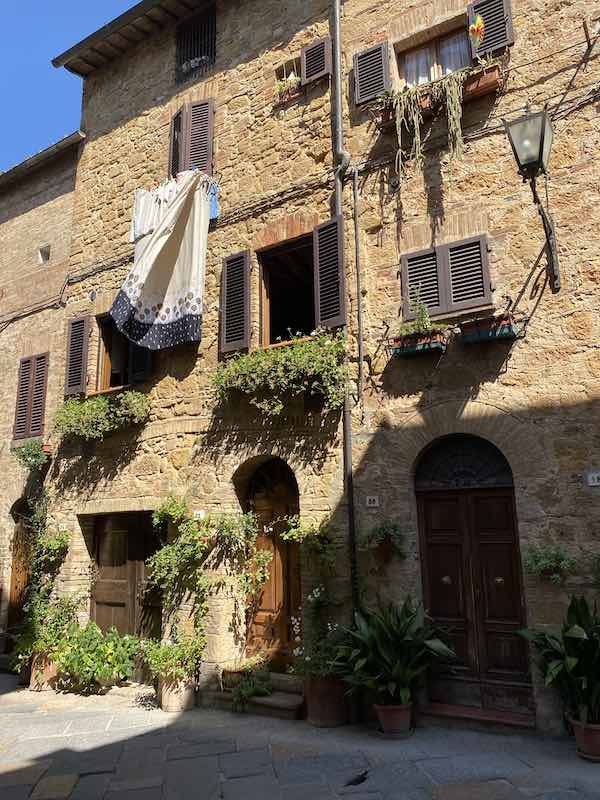
What to see and do in Pienza
Pienza is a small village perched on a hill in Val d’Orcia, the heart of Tuscany.
Like other towns in the area, its charm stands in the ability to immerse yourself in a 360 historical town and feel time stand still however, there are several landmarks in Pienza worth seeking out.
Admire Piazza Pio II
Piazza Pio II, Pienza’s central main square, is the heart of the city’s Renaissance design.
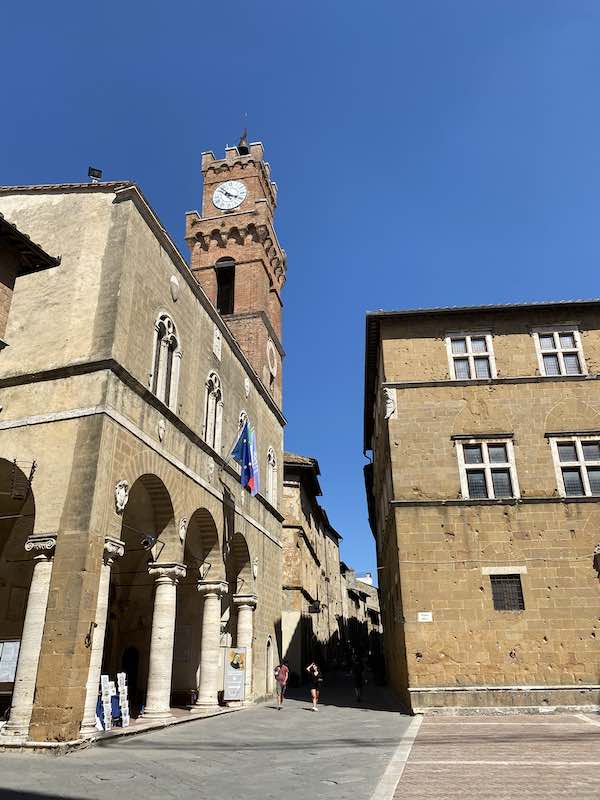
It has a peculiar trapezoidal shape and is entirely surrounded by buildings in soft and soothing honey colors.
The piazza is overlooked by Pienza’s Duomo, the elegant Palazzo Piccolomini, and has a stunning ancient well called ‘pozzo dei cani’ (dog’s well), somewhat reminiscent of others in the area such as that in San Quirico d’Orcia or Montepulciano .
Piazza Pio II is a lovely introduction to Pienza.
The proportions of the square embody that sense of harmony Pius II wanted its town to evoke and the piazza is very much in use today: as well as a pretty place for people to visit, it is also the location of summer concerts and a great spot to sit and watch life pass by.
The square is car free: from here, you can visit the duomo, palazzo Piccolomini and access the town walls, which are scenic and wonderful for a walk, especially at sunset.
Take a guided tour of Palazzo Piccolomini
Palazzo Piccolomini stands beside Pienza’s Duomo and and it is worth a visit inside.
Tours start at regular intervals during the day, last 40 minutes and are orgaized with a host and an audioguide: the host leads through a sequence of rooms and explains how to use the audioguide, so you can hear the explanation in your own language and your own time.
The guided tour of the palazzo is interesting and some room, such as the armours room and the Pope’s bedroom, are interesting for kids too.
The tour of the building end in the stunning suspended garden: this is a small but stunning outside space that offers sweeping views of the countryside and seems to blend in with the colors of the hills behind it!
The visual connection between the garden and the views is intentional and at the heart of the vision for this ‘ideal’ town.
Vist Pienza’s cathedral: il Duomo
Piazza Pio II is dominated by Pienza’s duomo, with a beautiful, white colored stone facade.
Pius II was influenced by several styles and we can still spot some of them: the 3 naves are reminiscent of German churches, many elements of the facade recall the work of Alberti in Florence and the duomo also has unmistakable Gothic elements.
The church is wonderful: large windows flood it with natural light and, on a bright day, make it positively ethereal!
The facade has been restored in 2020/2021 and it is now possible to fully appreciate the harmony of its composition and its delicate carvings.
Take a walk on Pienza’s bastions
Pienza was a fortified town and now its bastions offer the opportunity to take a wonderful walk to take in its beautiful surrounding.
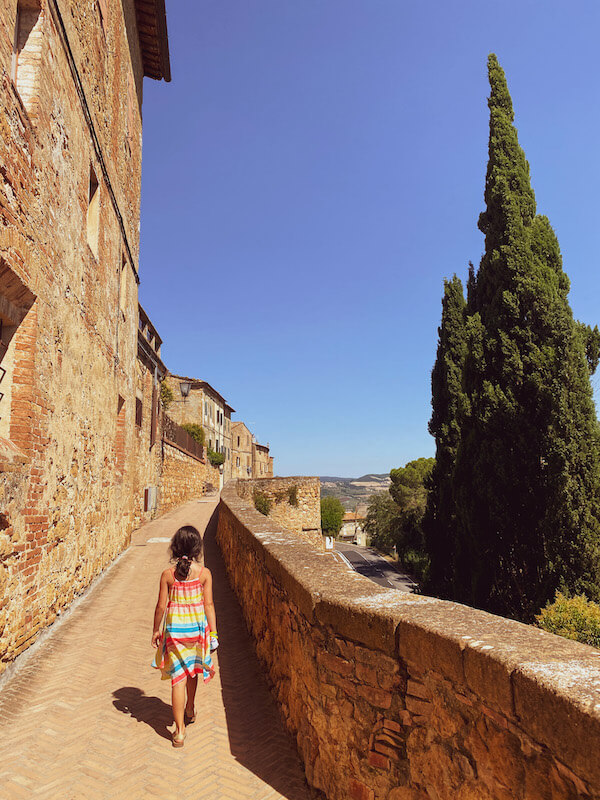
The bastions are distinctive of Pienza and the first thing you notice as you drive towards the town.
From their top, you get sweeping views of Val d’Orcia and you can also enjoy the back of some of the prettiest houses in Pienza and imagine what it must be like to wake up to that view!
Top tip! If you are in Pienza at sunset, you can enjoy the bastions while sipping a drink! To the right of the duomo, a small alley leads you to a scenic bar with delicious cocktails, perfect for aperitivo with a view!
Explore Pienza’s small alleys
Pienza develops around a main street and square however, some of the prettiest corners of the town can be found exploring the little alleys on the two sides of it.

Here is where you find small and cute piazzas and cafes, pergolas, arches ,flowery balconies and where you can catch stunning and unexpected views.
Taste Pienza’s famous pecorino cheese
Tuscany is famous for the quality of its food but Pienza stands out for the production of one of the most praised products from the area: pecorino cheese!
The cheese is sold everywhere here and also present in all the local menus as part of a platter, as an ingredient for a pasta dish or even cooked as a warming main (cacio cotto).
We had several variations of in a restaurant called “La Chioccola” that has also a nice outside pergola we enjoyed.
Fun fact! In September, Pienza celebrated ‘fiera del cacio’, a folkloric event with local producers testing their skills at making cacio wheels roll around a wooden pole in Pienza’s main square!
Walk to the Gladiator’s Cypress trees
A fantastic way to immerse yourself in the magic of Pienza is by taking a walk in the wheat fields that surround the town, from where you get sweeping views of the surrounding countryside and Pienza itself.
You can do this by following a small country road leading you from Pienza’s main entrance to a place called Pieve di Corsignano first and then stretching you legs a little farther to the so called ‘Gladiator’s Cypresses’ which are just waht you think they are: the beautifl field and trees appearing in the last scene of the movie ‘Gladiator’!
The walk to the cypress trees is easy: from Pienza, follow the signs for ‘Pieve di Corsignano’: in less than ten minutes, you will find yourself in front of a delightful small church and the start of a trail among olive trees.
Visit the church, then follow the path for about five more minutes: the view you have been looking for is in front of you!
Pienza with kids
Pienza is a family-friendly town which we found excellent for kids.
The town center is compact and car-free, there is a nice playground just outside the city walls and there are several shops and supermarkets for daily groceries should you wish to cook for yourself or get a picnic.
Our children enjoy the freedom to run around Pienza without the fear of getting lost, the love the several gelato shops you find in Pienza and enjoy the walk to the cypresses, even if they are too young to have seen Gladiator!
The walk is a delight and a will tire them just about enough to then be able to sit and have aperitivo without complaints!
We recommend it as one of the best places to visit in Tuscany with kids !
Practical tips for your visit to Pienza
Pienza is best reached by car.
The historical center is for pedestrian traffic only but large, pay and display parking spaces are available just outside the city walls. Bring coins!
Pienza is overall flat and doesn’t pose any particular mobility issue. If you are visiting with kids, a stroller here is ok.
You can visit Pienza in half a day or you can spend the night. In that case, check out the scenic Relais il Chiostro , located right in Pienza centro storico , just off the main piazza.
Beautiful towns within easy reach from Pienza are Siena , Montalcino , San Quirico d’Orcia and Montepulciano . Florence is about 2 hours north of Pienza.
I hope you enjoyed this quick guide to Pienza and it inspired you to visit. Safe travel planning!
Marta Correale
Marta Correale is an Italian mama of two. Born and raised in Rome, Marta has a passion for travel and especially enjoys showing off Italy to her kids, who are growing up to love it as much as she does! A classics graduate, teacher of Italian as a second language and family travel blogger, Marta launched Mama Loves Italy as a way to inspire, support and help curious visitors to make the most of a trip to Italy and learn about Italian culture on the way.

You May Also Like

12 weekend trips and day trips from Milan you will love
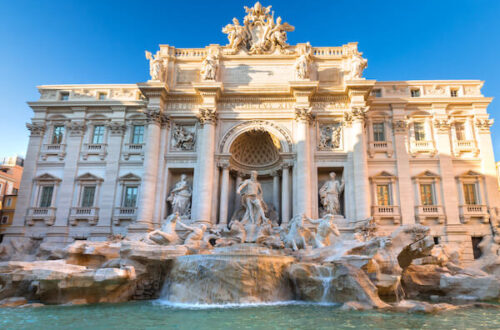
25 fantastic things to do in Rome that will make you fall in love with the city (by a local!)
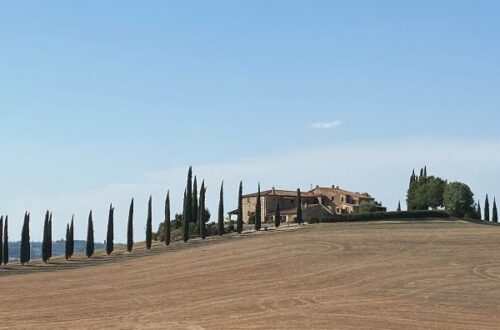
Tuscany in summer: all you need to know for a perfect stay
Privacy overview.
- 1 Understand
- 3 Get around
Pienza is a city in the Val d'Orcia region of Tuscany . A UNESCO World Heritage Site , it is considered the "touchstone of Renaissance urbanism". It had a population of about 2,100 people in 2017.
Understand [ edit ]
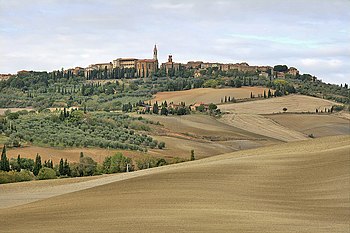
Pienza, formerly the village of Corsignano, was renamed and redesigned as a completely planned Gothic town, in honor of and at the command of the most famous of all its inhabitants in history, Pope Pius II (1405-1464; reigned as Pope starting in 1458). Its Centro Storico is a UNESCO World Heritage site . UNESCO's listing for Pienza can be seen at this link .
Get in [ edit ]
Buses run from Montepulciano (8 per day, 30 minutes), Montalcino (10 per day, change to line #114 in Torrenieri, lengthy changing time) and Siena ( SITA runs several, though the number varies by season, 1 hour 15 minutes travel time; however, the latest bus returning from Pienza always leaves at 14:44).
Get around [ edit ]

Walk. There's no need for public transit in this compact town.
See [ edit ]

- Piazza Pio II : A grand & elegant square, surrounded by the city hall, with its bell tower, & the Piccolomini family palace
- Duomo : It dominates the Piazza, with a fine interior & beautiful windows. Works of art in the duomo include five altar paintings from the Sienese School, by Sano di Pietro, Matteo di Giovanni, Vecchietta and Giovanni di Paolo. The Baptistry, dedicated as usual to San Giovanni, is located next to the apse of the church.
- Palazzo Piccolomini , ☏ +39 0578-749-071 . Once home of Pius II & the Piccolomini family, it can be visited with a 30 minute guided tour. €3.50, open Tu-Su 10:00-12:30 & 15:00-18:00, closed Monday & in the winter.
- The Diocesan Museum is filled with church paintings from the 12th to 17th centuries, €4.10, open W-M 10:00-13:00 & 15:00-19:00, closed Tuesday, open only on weekends in winter, on Corso il Rossellino.
- View Terrace To the left of the church is a lane leading to a panorama of the countryside.
- Palazzo Vescovile , on the third side of the piazza, was built by Cardinal Rodrigo Borgia, the future Pope Alexander VI, to comply with the request by Pope Pius II for the Cardinals to have a residence in the town. It became the residence of the Bishop of Pienza when the town was elevated to a bishopric in 1462. It is now home to the Diocesan Museum, and the Museo della Cattedrale. The collection includes local textile work as well as religious artifacts. Paintings include a 12th-century painted crucifix from the Abbey of San Pietro in Vollore, 14th century works by Pietro Lorenzetti (Madonna with Child) and Bartolo di Fredi (Madonna della Misericordia). There are also important works from the 14th and 15th centuries, including a Madonna attributed to Luca Signorelli.
- Palazzo Comunale : Across from the church is the town hall, or Palazzo Comunale. When Corsigniano was given the status of an official city, a Palazzo was required that would be in keeping with the city's new urban position. It has a brick bell tower that is shorter than its counterpart at the cathedral, to symbolize the superior power of the church. The set-back addition to the tower dates from 1599. It is likely that Bernardo Rossellino designed the Palazzo Comunale to be a free-standing civic mediator between the religious space before the cathedral and secular market square to its rear.
- The travertine well in the Piazza carries the Piccolomini family crest, and was widely copied in Tuscany during the following century. The well-head resembles a fluted, shallow Etruscan Bowl. The flanking Corinthian support a classical entablature columns whose decorations are clearly based upon actual source materials.
Do [ edit ]

- Tourist Information , fax : +39 0578-749-905 . The office is just up the street from Piazza Pio II, open M-Sa 10:00-13:00 & 15:00-19:00, closed Sunday, you can leave your bags here.
- Market Day is Friday
Buy [ edit ]
Eat [ edit ].
- Latte di Luna . It has indoor & outdoor seating.
- La Taverna di Re Artu , Via della Rosa . Daily 10:30-20:30 . It serves bruschetta and a wide variety of wine.
- Ristorante dal Falco is a modern place with outdoor & indoor seating, €6 pastas, open Saturday to Thursday 12:00-15:00 & 19:00-22:00, closed Friday, on Piazza Dante Alighieri. Telephone: 0578-749-856, open Wednesday to Monday 12:30-14:30 & 19:30-21:30, closed Tuesday, at Porta al Giglio on Via San Carlo. Telephone: 0578-748-606
Drink [ edit ]
Sleep [ edit ].
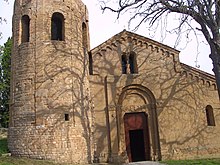
- Agriturismo Le Macchie , Monticchiello di Pienza , ☏ +39 06-68809301 . Farmhouse.
- Agriturismo Terrapille , on route #18 towards Monticchiello , ☏ +39 0578-748-434 , +39 338-920-4470 (Mobile) . It's right below Pienza on a bluff, 4 rooms & 2 apartments, pool. Double w/bathroom €95, Quadruple w/bathroom €160, breakfast €7.50, dinner on request for €25.
- Oliviera Camere , Via Condotti , ☏ +39 0578-748-205 , +39 338-952-0459 (Mobile) . Six simple rooms, breakfast in room, cash only, owner doesn't speak English. Double w/bathroom €50.
- Il Giardino Segreto Camere , Via Condotti , ☏ +39 0578-748-539 , +39 338-899-5879 (Mobile) . Six rooms with a lovely, quiet garden, Double w/bathroom €62, apartment €67.
Go next [ edit ]
Buses leave for Siena (6 per day, 90 minutes) & Montepulciano (8 per day, 30 minutes). Buy bus tickets from bar right buy town gate.
Aside from these towns, the cities of Florence , Pisa , & San Gimignano are great to go to.
- UNESCO World Heritage Sites
- UNESCO tag to be fixed
- Has custom banner
- Has mapframe
- See listing with no coordinates
- Has map markers
- Do listing with no coordinates
- Eat listing with no coordinates
- Sleep listing with no coordinates
- Usable cities
- Usable articles
- City articles
- Has Geo parameter
- Val d'Orcia
- All destination articles
- Pages with maps
Navigation menu
Pienza travel guide: Visit the Ideal City of the Renaissance in Tuscany
Pienza , the Ideal City of the Renaissance, is undoubtedly one of Tuscany’s hidden gems. While it never reached the levels of a big city -and there’s a reason for that- Pienza is a must-see for your Italian road trip. Standing quietly in the valley of Val d’Orcia, Pienza appears at first glance like a sleepy little town. However, even though it has only 2,000 inhabitants, its importance exceeds its size. In order to understand its significance, we have to travel almost 600 years back in time.
In the following lines of this Pienza travel guide , you will find everything you need to know before you visit it. Specifically, I will analyze why this Italian town played a cornerstone role during the Renaissance and why it’s a prototype for modern urban planning. Moreover, I’ll share the best things you can do in Pienza, accompanied by several photos. Last but not least, you’ll find a selection of places to stay in Pienza together with the optimal ways to include it in your Tuscany road trip itinerary .
So, let’s start with the travel guide to Pienza.
Table of Contents
*Some of the links are affiliate links. It means that if you buy something, I might earn a small commission at no additional cost to you.
Pienza travel guide: Facts about Pienza and the Ideal City concept
Before writing about the main attractions of this little Italian town, I believe that some historical information is worth mentioning. The background information will help you gain a deeper insight into Pienza’s importance.
Who is the man who transformed Pienza?
Before the Renaissance, Pienza’s name was actually Corsignano. However, during the 14th century, the Piccolomini family obtained significant parts of Corsignano. The Piccolominis were a noble family from Siena that remained powerful for almost five centuries (13th to 18th). One of its more prominent members was born in Corsignano in 1405, named Enea Silvio Piccolomini.
Enea was actually the man who changed Pienza’s fate forever. In August 1458, Enea Silvio Piccolomini became Pope under the title Pope Pius II . A Renaissance humanist, Pius II was a highly admired poet in his era, even though his most famous work is his autobiography called Commentaries .
Pius II remained a Pope until he died in 1464, six years after his inauguration. One of the projects that he focused on during his reign was the redesign of Corsignano. Devoted to the humanism of the Renaissance, Pius II decided to engage in a progressive urban project: he decided to build an ideal city.
How long did it take to build Pienza?
As one can easily imagine, redesigning and building a city from scratch requires a massive effort. However, more than 20,000 people worked on the project, and the town took just three years to complete. Specifically, the project kicked off in 1459, and by 1462, everything was ready.
Bernardo Rossellino , an architect who worked with Leon Battista Alberti, carried out the rebuilding of Corsignano. The latter was one of the most notable persons of the Italian Renaissance, who built the façade of the Palazzo Rucellai in Florence. Rossellino’s name has its own spot in front of Pienza’s Duomo, in a beautiful well called the “well of dogs.” Pius II consecrated the Duomo in the last days of August 1462.
Where does the name come from?
Of course, some sense of vanity doesn’t come as a surprise in every project of such scale. The new town had to change its name. It wasn’t Corsignano anymore. Instead, it was renamed Pienza, which means “ city of Pius .”
What makes Pienza an ideal city?
The concept of the ideal city is a crucial element of Renaissance architecture . In brief, we can say that it marks the transition from verticality -seen in the Middle Ages architecture- to horizontality. That said, what is evident in Pienza is the sense of perspective that offers open space to the inhabitants. The buildings have fewer floors, and therefore the town appears more horizontal.
Moreover, one of the cornerstone elements is the big square, where life unfolds. The idea is that around the main square, a harmonic settlement appears. In general, symmetry is the heart and soul of the ideal city concept . When you visit Pienza, you will be impressed by the buildings around Duomo. However, a closer look will give you even more details. For example, the square is full of stone seats attached to the buildings. That’s where the citizens could sit and socialize. That’s a concept that we take today for granted, but it was avant-garde back in the day.
Of course, we should mention here that even though Pienza had an anthropocentric approach, it was also planned as a retreat from Rome. Thus, one can still see palazzos and other notable buildings destined for the most important citizens of the era.
Why didn’t it reach its full potential?
Despite becoming a role model for other Italian cities soon and eventually for many European ones, Pienza never reached its full potential. But as I wrote at the beginning of this travel guide to Pienza, there’s a reason for that—or, actually, more than one.
First of all, Pope Pius II’s death in 1464 also meant the end of the project. There were plenty more things to build in Pienza; however, the Pope’s death halted the project. That said, today, we see how Pienza was when he died and not how it could have been. The latter, we have to imagine.
Moreover, in the coming century, Pienza was occupied several times. In 1502 the Borgias occupied it, in 1530, the same happened by Charles V, and by 1559 it was the time of the Medici family to take it over. And then, it was Pienza’s location. Located in the Val d’Orcia, the town was too far away from the major urban centers and the main transportation hubs.
That said, Pienza has remained a small provincial town in Tuscany ever since. It’s a pity its significance didn’t grow, but that’s probably why Pienza is still so well-preserved without being altered at all.
Pienza travel guide: The main sights
Today, Pienza is a UNESCO World Heritage Site , and most of its monuments remain intact. You can see them all in a short walk, and you won’t need more than a couple of hours. However, I believe it’s better to spend at least one night in Pienza and let yourself immerse in its atmosphere. At the bottom of this post, you’ll find the best places to stay in Pienza.
As for the things to see in Pienza, these are:
At the Piazza Pio II (Main Square)
The duomo – cathedral of santa maria assunta.
Known also as Cattedrale dell’Assunta , the Duomo stands in the heart of the main square. The cathedral’s travertine facade is truly a masterpiece. However, despite being one of the earliest examples of Renaissance architecture, it has a German touch. Specifically, the bell tower has the design of a so-called Hallenkirche . There’s probably an explanation for that: Pius II served for several years in Germany before becoming Pope.
The Palazzo Piccolomini
That’s probably the most beautiful structure in the main square. Architect Rossellino imitated here the design of Palazzo Rucellai in Florence. The palazzo enjoys a stunning view over the Val D’Orcia, and it also has a barn for up to 100 horses. In front of it, you can see the well of dogs.
You can visit the Palazzo Piccolomini and walk through its rooms and gardens. There’s an entry fee, but you can book your ticket in advance here to skip the queue.
Palazzo Vescovile or Palazzo Borgia
That’s where the Diocesan Museum is. The collection hosts mainly examples of local textiles and paintings. It occupies eleven rooms, and everything appears in chronological order.
Palazzo Comunale
That’s the town hall, and it’s actually one of the latest additions to the square. A notable element is its brick bell tower, which is shorter than the one in the Cathedral. The reason for being shorter is to mark the superiority of the Church’s power.
Beyond the Piazza Pio and around Pienza
Take a short walk through the old town, following the Corso il Rossellino, where you will admire the town’s beautiful architecture. Then, wander through the alleys and follow the smaller streets: most of them will lead you to breathtaking viewpoints . Each of these spots feels like a painting.
A short walk outside of Pienza will also lead you to the Romanesque church of Pieve di Corsignano , where Pope Pius II was baptized.
And, of course, don’t miss the chance to explore further the stunning Val d’Orcia . Pienza is a fantastic base for your journey around the valley (and Tuscany), so stay a couple of days here. Exploring the wonderful Val d’Orcia is a must if you happen to be in the region. Don’t miss it.
Last but not least, not everything is about sightseeing. Apart from enjoying a local meal, make sure to have a drink at Idyllium . Straight behind the main square, Idyllium’s terrace has probably the best viewpoint toward the valley. However, it tends to be packed outdoors; therefore, either book a table in advance or try to be there not in rush hour. Great cocktails and stunning views of the valley -what’s more to ask?
Unique things to do in Pienza, Italy
Two of the most special things to do in Pienza have to do with cheese. More specifically, with pecorino.
The Pecorino of Pienza is made from sheep’s milk, and it’s delicious. Throughout the old town, you’ll find loads of shops selling different varieties of local pecorino. Their taste largely depends on the pecorino’s age, and you can also buy other local products like wine or pici (handmade pasta).
And yes, there’s another thing to do in Pienza that has to do with pecorino. However, you should plan your visit because that’s one of the rare occasions that the town is packed. That’s the Fiera del Cacio , a local festival dedicated to -what else- pecorino. It usually takes place in early September during a weekend. Apart from the folklore, you can try all sorts of this famous local cheese.
Two fun facts about Pienza
#1 Pienza’s street names keep their romantic character intact. While walking through its beautiful streets, you will come across street names like Via dell’Amore (Love Street), Via del Bacio (Kiss Street), or Via della Fortuna (Good Luck Street).
#2 Did you know that despite its compact size, Pienza appears in several famous movies? Among them are Romeo and Juliet (1968) by Franco Zeffirelli, Nostalghia (1983) by Andrei Tarkovsky, and The English Patient (1996) by Anthony Minghella.
Practical info for your visit to Pienza
If you’re not visiting Pienza on an organized tour, you’ll probably reach the town in your car. The latter is perhaps the best option because you’ll have the chance to drive through the picturesque Val d’Orcia. However, you need to know that parking is prohibited inside the old town. You’ll have to park your car in one of the several parking lots outside the walls.
If you’re looking to rent a car for your road trip to Tuscany, check out Rental Cars . That’s the best website, combining the largest car companies; they’ll help you find the best prices for renting a car in Italy. It’s the service I always use in my journeys, and it never let me down. Rent a car for your Italian journey here .
How to reach Pienza on your own
If you are starting from Florence, you will need approximately one and a half hours to reach Pienza (116 km/72 miles). The route is not that scenic since the biggest part is through the motorway.
On the other hand, it’s faster to reach Pienza from Siena . It takes approximately 50 minutes (60 km/37 miles), and the road is more beautiful.
How to visit Pienza on an organized tour
If you don’t have a car, the best option is to visit Pienza on an organized tour. Several tour operators offer a variety of day trips from nearby cities, and they usually include wine tasting. Most of them combine the visits to Pienza with other picturesque towns/villages like San Gimignano or Montepulciano.
The best day trips to Pienza are:
From Florence
On a day trip starting from Florence , you can visit both Pienza and Montepulciano. In addition to seeing the two towns, this tour offers excellent wine tasting in both places. Check out the tour from Florence here .
Similar to the one above, this day trip to Pienza and Montepulciano starts from Siena. Wine tasting is included in the price, and it lasts slightly less than the one from Florence because Siena is much closer. See the prices and availability for the tour from Siena .
From Florence or Siena (more flexible)
If you want to remain flexible regarding your starting point, you can book a private tour from either Florence or Siena. Of course, it comes at a price, but this private tour will drive you to both places. You’ll visit three wineries and have lunch. Check the tour from either Florence or Siena here .
Where to eat in Pienza
Despite its small size, Pienza has plenty of good local restaurants. If you stay just a day or two you won’t have the chance to visit them all; therefore, I’ll add here three of the best places to eat in Pienza. These are:
- At Trattoria La Chiocciola , you’ll feel at home, and you’ll taste the local cuisine.
- On the other hand, at Ristorante Il Rossellino , you’ll enjoy spectacular views and a more upscale meal.
- Finally, at Sperone Nudo , you’ll have a superb selection of Tuscan food.
Where to stay in Pienza: the best hotels
Exactly like with the food options above, Pienza has a wide selection of excellent accommodations for its size. That said, you can find reasonable options but also boutique hotels. As I already wrote, I highly recommend spending at least one night in Pienza. The Val d’ Orcia is Tuscany’s most beautiful region, and you can very well call home Pienza for a couple of days. From there, you can explore the whole area and even visit nearby cities like Siena or even Florence .
So, here you can find the best hotels in Pienza.
Best hotels in the historical center of Pienza
La Bandita Townhouse . Hands down the best option for your nights and days in Pienza. The hotel offers modern interiors and a fantastic breakfast. It comes at a price but if it’s okay for you to splurge, then book your room. See the prices and availability for the fantastic La Bandita Townhouse here .
Il Giglio. Il Giglio B&B is one of the best options for your stay in Pienza. It is located in a Renaissance building in the town’s center. The rooms are stylish, with terracotta floors and antique furnishings. See the Il Giglio here .
Il Giardino Segreto . Situated in the historical center of Pienza, Il Giardino Segreto (The secret garden) is in a restored building of the 18th century. Its wonderful inner garden, where all the rooms face, is one of its most charming elements. Check here the Il Giardino Segreto .
La Bellavita B&B . Another accommodation option in the town’s heart is La Bellavita, a beautiful B&B that is one of the best places for couples. See the Bellavita here .
Casa Dolce Casa . In the heart of Pienza’s historical center, the Casa Dolce Casa is one of the simplest yet most beautiful accommodations. The rooms have their charm even though they aren’t anything near luxurious. See prices and availability for Casa Dolce Casa here .
La Città Ideale Suites . Last but definitely not least, La Città Ideale Suites is a historic building at the edge of the old town. Its rooms come with wood-beamed ceilings and terracotta floors. See here the La Città Ideale Suites .
Best hotels straight out of Pienza (Val d’Orcia)
Piccolo Hotel La Valle . Just 150 meters outside of Pienza, the Piccolo Hotel La Valle is a beautiful option for your stay. It has a roof garden and spacious rooms. See the Piccolo Hotel here .
Hotel San Gregorio . Here’s one more option straight out of town. The San Gregorio is located in a former theatre, just 50 meters from the historical center and near the Val d’Orcia Natural Park. It features a large private courtyard and serves a delicious Tuscan breakfast daily. See the San Gregorio here .
Agriturismo Il Colombaiolo . Half a kilometer out of Pienza, this is an excellent option for nature lovers. It is housed in a 15th-century building in the middle of a big vineyard. Is there really anything more to ask? See the Agriturismo Il Colombaiolo here .
Poggio ai Gelsi . Pretty similar to the previous accommodation, Poggio ai Gelsi offers beautiful rooms and stunning views of the Val d’ Orcia. There’s also a swimming pool, and each room comes with a kitchen. See the Poggio ai Gelsi here .
Please use the interactive map below for all other accommodation options in and around Pienza.
Pienza guide: Conclusion
Although Pienza never reached its full potential, it left a solid mark in world history. It’s an impressive achievement that a city that took just a few years to build became the prototype for the majority of contemporary cities. I was truly mesmerized by the looks of the little Italian town and seeing where modern urban planning initiated made a lasting impression on me. Yes, there might be just a few things to do in Pienza, but all of them are equally unique.
Due to pre-planning, I only had a full day in Pienza. However, I promised myself that whenever I returned to this stunning side of Italy, I would spend more days in town. Pienza is one of those cities that deserve to be discovered step by step and stone by stone. In addition, its elegance is mesmerizing, and despite its size, you won’t feel bored. Road trips can often be tiring, and spending a night or two in a quiet place is both refreshing and rewarding.
Long story short, Pienza is a hidden gem in Tuscany’s most beautiful valley. Don’t miss the chance to visit it: you’ll feel like walking in an open-air museum that is still vibrant, charming, and elegant.
More Italy : San Gimignano , Taormina , Catania , Florence , Venice
Pin it for later
Sharing is caring. Share this Travel Guide to Pienza with your friends.
Last Updated on March 22, 2024 by George Pavlopoulos
- More Options
- Share on LinkedIn
- Reddit this!
- Save in Pocket
- Save on Flipboard
- Share on Tumblr!
- Share via Telegram
- Share via WhatsApp
- Send via Viber
Related Posts
Where to stay in siena with a car: hotels with private parking, things to do in lido, venice: a travel guide, gondola ride in venice: what you need to know + tips & review, leave a reply cancel reply.
Your email address will not be published. Required fields are marked *
Take advantage of the search to browse through the World Heritage Centre information.
Share on social media
Unesco social media, historic centre of the city of pienza.
- Description
It was in this Tuscan town that Renaissance town-planning concepts were first put into practice after Pope Pius II decided, in 1459, to transform the look of his birthplace. He chose the architect Bernardo Rossellino, who applied the principles of his mentor, Leon Battista Alberti. This new vision of urban space was realized in the superb square known as Piazza Pio II and the buildings around it: the Piccolomini Palace, the Borgia Palace and the cathedral with its pure Renaissance exterior and an interior in the late Gothic style of south German churches.
Description is available under license CC-BY-SA IGO 3.0
Centre historique de la ville de Pienza
C'est dans cette ville toscane que les concepts urbanistiques de la Renaissance furent appliqués pour la première fois, à la suite de la décision prise par le pape Pie II, en 1459, de transformer sa ville natale et de confier cette œuvre à Bernardo Rossellino. Celui-ci mit en pratique les principes de son maître Leon Battista Alberti et construisit l'extraordinaire place Pie-II, autour de laquelle s'élèvent le palais Piccolomini, le palais Borgia et la cathédrale à l'aspect purement Renaissance mais dont l'intérieur s'inspire du gothique tardif des églises d'Allemagne du Sud.
الوسط التاريخي لمدينة بيينزا
في هذه المدينة التوسكانية طُبِّقت مفاهيم التنظيم الحضري العائدة لعصر النهضة للمرة الأولى، إثر قرار اتخذه البابا بيوس الثاني في العام 1459 والقاضي بتحويل المدينة مسقط رأسه وتكليف برناردو روسّيلّينو هذه المهمة. فطبّق هذا الأخير مبادئ معلّمه ليون باتيستا ألبرتي وبنى ساحة بيوس الثاني الرائعة التي ارتفع حولها قصر بيكولوميني وقصر بورجيا والكاتدرائية بالمظهر الخاص بالنهضة ولكن بالشكل الداخلي المستوحى من القوطية المتأخرة لكنائس جنوب ألمانيا.
source: UNESCO/CPE Description is available under license CC-BY-SA IGO 3.0
在皮乌斯教皇二世(Pope Pius II)于1459年决定改变他出生地的面貌以后,文艺复兴时期的城市设想正是在这个托斯卡纳镇第一次得以付诸实施。他选择了设计师贝尔纳多·罗塞利诺(Bernardo Rossellino),罗塞利诺在建造中运用了他的良师益友列昂·巴蒂斯塔·阿尔贝蒂(Leon Battista Alberti)的建筑原则。这种关于城市空间规划的新观念在富丽堂皇的皮乌斯二世广场及其周边建筑米科洛米尼宫、博尔贾宫,以及外观是纯文艺复兴时期而内装修又类似于德国南部教堂晚期哥特式的大教堂中得以体现。
Centro histórico de la ciudad de Pienza
Fue en esta ciudad toscana donde se aplicaron por primera vez los conceptos urbanísticos del Renacimiento en 1459, cuando el papa Pío II decidió transformar su ciudad natal y confiar la ejecución de esta tarea a Bernardo Rossellino. Poniendo en práctica los principios de su maestro Leon Battista Alberti, este arquitecto construyó la plaza de Pio II, en la que se alzan los palacios de los Piccolomini y los Borgia, así como la catedral. El exterior de este templo es puramente renacentista, mientras que su interior se inspira en el gótico tardío de las iglesias del sur de Alemania.
ピエンツァ市街の歴史地区
source: NFUAJ
Historisch centrum van Pienza
In deze Toscaanse stad werden voor het eerst de Renaissance concepten voor stedenbouw in praktijk gebracht, nadat paus Pius II in 1459 besloot om het uiterlijk van zijn geboorteplaats te transformeren. Hij koos hiervoor architect Bernardo Rossellino uit, die de principes toepaste van zijn mentor Leon Battista Alberti. De nieuwe visie van stedelijke ruimte werd gerealiseerd in het prachtige plein, bekend als het Piazza Pio II, en de gebouwen eromheen: het Piccolomini paleis, het Borgia paleis en de kathedraal met haar zuivere renaissance exterieur en een interieur in de laatgotische stijl van de Zuid-Duitse kerken.
Source: unesco.nl
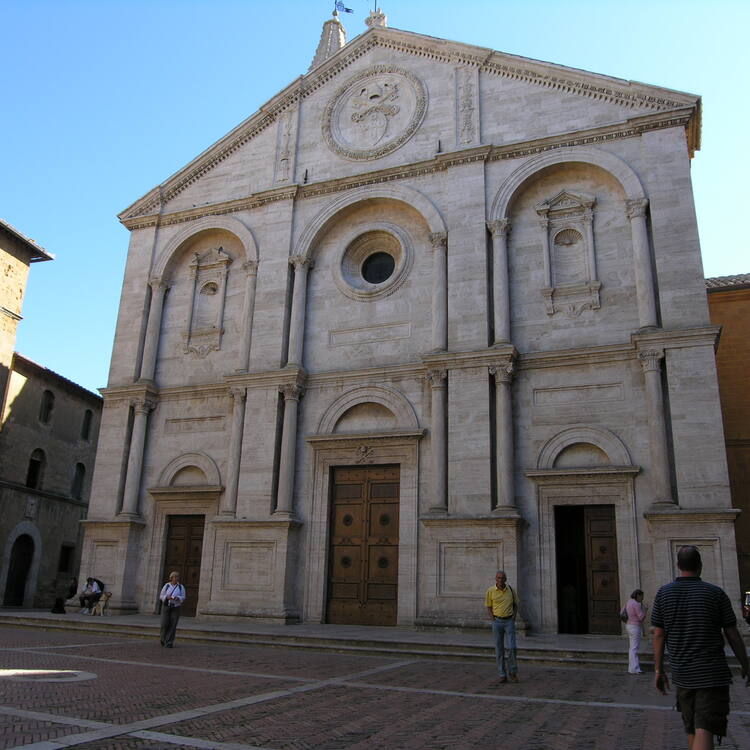
Outstanding Universal Value
Brief synthesis
Pienza, located on the crest of a hill overlooking the Val d'Orcia, 53 km south-east of Siena, was established in the medieval period as Corsignano. The town was renamed and redesigned in the late 15th century by Pope Pius II. Born in this Tuscan town, Enea Silvio Piccolomini became a leading humanist before being elected as Pope in 1458.
Renaissance town-planning concepts were first put into practice when Pope Pius II enlisted the architect Bernardo Rossellino to transform his birthplace. Rossellino applied the principles of his mentor, Leon Battista Alberti, a humanist thinker and architect,
author of the first architectural treatise of the Renaissance. The Pope was further influenced by German philosopher Cardinal Nicolà Cusano and the German Gothic tradition. This is evidenced in the interior of the Pienza Cathedral, typical of the late Gothic style of southern German churches while the exterior is pure Renaissance. The bell tower blends Gothic and Renaissance forms.
The new vision of urban space was realized in the superb trapezoidal square known as Piazza Pio II. The construction of new major buildings around the square began in 1459 and included the cathedral as well as Piccolomini Palace, the Borgia Palace (or Episcopal Palace), the Presbytery, the Town Hall, and the Ammannati Palace. While the medieval urban plan was largely respected, a new main axis road, Corso Rosselino, was built to connect the two main gates in the medieval wall, which was also reconstructed during this period. Pius II’s plan, to develop the town as his summer court, involved the construction or reconstruction of approximately 40 buildings, public and private, which further transformed the medieval town into a creation of the Italian Renaissance. These included new buildings for the cardinals in the papal retinue as well as 12 new houses constructed for the general populous near the walls and Porta al Giglio.
As the first application of the Renaissance Humanist concept of urban design, the town occupies a seminal position in the development of the concept of the planned "ideal town" and plays a significant role in subsequent urban development in Italy and beyond.
Criterion (i): The application of the principle of the Renaissance “ideal city” in Pienza, and in particular in the group of buildings around the central square, resulted in a masterpiece of human creative genius.
Criterion (ii): The Historic Centre of Pienza, as the first application of the Renaissance humanist concept of urban design, was to play a significant role in subsequent urban development in Italy and beyond.
Criterion (iv) : The buildings surrounding Pienza’s central square are an outstanding example of Humanist Renaissance design.
The boundary of the site, defined by its original wall, includes all the essential elements that contribute to the justification of its Outstanding Universal Value. The ensemble created by Pius II has maintained its structural and visual integrity remaining essentially intact in all its components.
Threats to the historic centre are primarily due to the influx of tourists, which requires an improved tourist management system. Moreover, rising property values create a risk of depopulation that would impact the town’s social cohesion. The general maintenance of the historic buildings in the core is, in part, focused on geological problems. The instability of the soil, particularly in the piazza, has caused ongoing structural problems to the cathedral since its construction.
Authenticity
The Historic Centre of Pienza has retained authenticity in terms of design, materials, workmanship, and setting. It is still possible to easily read the medieval urban structure as well as the Renaissance intervention of Rossellino, as they have been preserved in the street plan, architecture and details, such as the central square’s herringbone paving edged with travertine. All works, performed in accordance with the Charters of Restoration, have favoured the maintenance of materials of historic structures. Like other historic towns in the region, Pienza has retained its setting as it remains within its historic boundaries and, along with the surrounding agricultural landscape; it has not been subject to adverse industrial or infrastructure developments.
Protection and management requirements
Property owners within the historic town include a variety of public, private, local organizations and ecclesiastical bodies. Restoration and conservation programmes have been carried out on historic buildings since the early 20th century. Properties with a historic, archaeological and ethnographic value are subject to the ex Legge 1939/1089, now merged in the Decree n.42/04 “Code on cultural heritage and landscape”, which sets specific regulations and procedures for intervention on the property. The local authority is responsible for approvals relating to interventions but these are subject to specific safeguarding measures authorized by the relevant Soprintendenza (peripheral office of the Ministry for Cultural Heritage and Activities). The Soprintendenza can deny interventions for conservation reasons or require the interventions to be limited or restricted in order to protect the historic resource.
Conservation measures in the historic centre of Pienza are fully identified in the Municipal General Plan. In addition, several properties are subjected to further legislative measures contained in the "Census of operating municipal heritage building" in which specific categories of assistance are identified.
Finally, a new Management Plan has outlined five strategic projects: protection of the site; research and development of the humanistic character of the city; enhancement of the social dimension and use of the centre; recovery of unique architectural features and landscaping of the site; and proposal for compatible tourist and socio-economic activities. Implementation is divided into three phases: the first is dedicated to knowledge, to build public awareness of the particular characteristics of the site; the second establishes strategies aimed to enhance awareness and promotion of the site; and the third concerns control, management and development of potential sites. The management plan addresses guidelines for the conservation of architectural and urban character, without forgetting the cultural relations and social dimension of the city and the connections with the surrounding landscape, according to a strategy for exploiting the particularities and dynamics of strengthening the image of the city.
A steering committee has been established by the local offices of the Ministry for Cultural Heritage and Activities, the Province of Siena and the town of Pienza, with the objective of updating and implementing the property’s Management Plan.
- Municipality of the City of Pienza (Telegram page)
- Municipality of the City of Pienza (Twitter page)
- Municipality of the City of Pienza (Instagram page)
- Municipality of the City of Pienza (Facebook page)
- Comune di Pienza (only in Italian)


IMAGES
VIDEO
COMMENTS
Pienza in Tuscany, Italy owes its beauty and fame to Enea Silvio Piccolomini born in Corsignano on 18 October 1405 and elevated to Pope in 1458 taking the name Pius II. ... The Pienza Tourist Information Office is located at Piazza Dante Alighieri, 18, 53026 Pienza SI, Italy.
Pienza is a gem in the Val d'Orcia. It's known as the city of Pope Pius II, Enea Silvio Piccolomini, who was born here in 1405. Once Pius became Pope, he wanted to transform his humble birthplace, Corsignano, into an urban-architectural treasure. Therefore, he entrusted the total renovation of the village to the architect Bernardo Rossellino ...
The Perfect Mix of Architecture, Food & Tradition built to represent a "Utopian City". Pienza is a tiny village in southern Tuscany in the beautiful valley called Val d'Orcia we highly recommend you visit. The village is located about 20 kilometers east of Montalcino and a few kilometers to the west of Montepulciano amidst gentle undulating ...
Pienza is a jewel of Tuscany - a medieval hilltop town that has a unique history, streets that smell like fresh cheese, and stellar views from its walls. The tiny Tuscan village was named a UNESCO World Heritage site in 2006 and even though it sees its share of tourists, it never feels overrun.
Piccolomini Palace. 3. Piccolomini Palace. Visiting the Piccolomini Palace is one of the best the vest things to do in Pienza. It was the domestic summer residence of the Piccolomini family. It's a large block palace, just like the palaces in Florence. There's a bench running along the outside.
Pienza, Tuscany - a town born out of a dream. Piazza Pio II is Pienza's main square and the town's beating heart. It's named after a very interesting character who gave Pienza its name and a design with a purpose. The Pope Enea Silvio Piccolomini was born here in 1405, when it was known by a different name - Corsignano.
Pienza, a Renaissance masterpiece. Pienza is one of those places to visit absolutely at least once in a lifetime. Located in the beautiful Val d'Orcia about 50 km south of Siena and 20 km east of Montalcino, Pienza is a real gem, rich in monuments and works of art. The position in which the village is located is another strong point: perched ...
Pienza, Italy: a Tuscan gem, alive with history, charm, and romance.Famous for its renaissance history and being the capital of pecorino cheese (delicious!), this beautiful little hilltop town is a must-see on your trip to Tuscany.Find out everything you need to know about Pienza with this complete travel guide.
A few kilometres from Pienza, the town of Monticchiello was built on a hill where you can enjoy a wide view. ... Tourism Office Corso Il Rossellino, 30 Pienza 0578 749905 [email protected] www.comune.pienza.si.it. What to do. Val d'Orcia is expecting you with all its excitement, browse through the travelling tips and find ...
See way to experience (1) 12. Fabbrica Pienza. 11. Wineries & Vineyards. Located just a few kilometers from Pienza, a UNESCO World Heritage site, Fabbrica is in a new wine cellar of rare beauty. The cellar is perfectly integrated in to this land, surrounded by century old olive trees standing proudly against the blue sky and alongside visible ...
Pienza travel guide. Tiny Pienza is such a perfect miniature of Renaissance architecture that its entire centre is recognized by UNESCO, for the "new vision of urban space" it represented in the mid-1400s. Since prehistory, there had been settlements on this ridge overlooking the Val d'Orcia, 37 miles south-east of Siena.But it is Pope Pius II's madcap (and unfinished) plan to build ...
It is a very small village of about 2,000 residents. But what makes Pienza so lust-worthy for travelers is something you've heard before: location, location, location. Pienza is the poster town for the Tuscan countryside. Set on a hilltop overlooking the iconic Val d'Orcia, Pienza has one of the most romantic sceneries in Italy.
The Ultimate 2 Days in Florence Itinerary. Designed by architect Bernardo Rossellino in the mid-1400s, this piazza is where you'll find several of the top attractions in Pienza, including its Duomo, the Palazzo Piccolomini, and more. Plus-as in virtually all Italian piazzas-the people-watching is excellent here.
Pienza is a perfect tourism stop during the discovery of the Val d'Orcia, surrounded with other small and characteristic towns like Montalcino and Bagno Vignoni; about 50 km separates Pienza from Siena, Tuscany in Italy and even less from Arezzo. Are you wondering what to do and visit in Pienza? Many cheese lovers and gourmets, already know ...
Pienza. Part of the UNESCO's heritage, this enchanting Renaissance village is surrounded by the Val d'Orcia, one of Tuscany 's most celebrated landscapes. The town looks toward the Mount of Cortona and the three lakes (Trasimeno, Chiusi and Montepulciano ); while to the south is Mount Amiata. Pienza was founded and established according to a ...
Pienza is a small town situated in the Val d'Orcia, in the southern part of Tuscany.It's just 15 kilometres from Montepulciano, 20 from Montalcino and about 50 kilometres away from Siena.. The name comes from Pope Pius II, who was born here, and it means the city of Pius.Enea Silvio Piccolomini, elected Pope Pius II in 1458, wanted to transform his birthplace, the anonymous village of ...
About Pienza. Pienza, a town in Tuscany, is the "touchstone of Renaissance urbanism." In 1996, UNESCO declared the town a World Heritage Site and in 2004 the entire valley, the Val d'Orcia, was included on the list of Unesco's World Cultural Landscapes. Pienza was the birthplace of Aeneas Silvius Piccolomini, who would become Pope Pius II.
Visitor information in Pienza: The Pienza tourist office is in the center of town at Corso il Rossellino 30, on the south side of Piazza Pio II (tel. +39-0578-749-905, www.comune.pienza.siena.it) Take a tour: If time if tight, consider an escorted day trip from Florence or Siena that visits Pienza, Montalcino and other Val d'Orcia sights:
Pienza is a gem: the architecture blends into the landscape beautifully and the town offers some of the most beautiful views over the Orcia Valley you can ask for. This plus pretty alleys, excellent food and a strong tourism vocation make Pienza one of the best towns to visit in the area. Please note: this post contains affiliate links.
View of Pienza. Pienza, formerly the village of Corsignano, was renamed and redesigned as a completely planned Gothic town, ... Tourist Information, fax: +39 0578-749-905. The office is just up the street from Piazza Pio II, open M-Sa 10:00-13:00 & 15:00-19:00, closed Sunday, you can leave your bags here. ...
George Pavlopoulos November 6, 2021. Pienza, the Ideal City of the Renaissance, is undoubtedly one of Tuscany's hidden gems. While it never reached the levels of a big city -and there's a reason for that- Pienza is a must-see for your Italian road trip. Standing quietly in the valley of Val d' Orcia, Pienza appears at first glance like a ...
Pienza, located on the crest of a hill overlooking the Val d'Orcia, 53 km south-east of Siena, was established in the medieval period as Corsignano. The town was renamed and redesigned in the late 15th century by Pope Pius II. Born in this Tuscan town, Enea Silvio Piccolomini became a leading humanist before being elected as Pope in 1458.